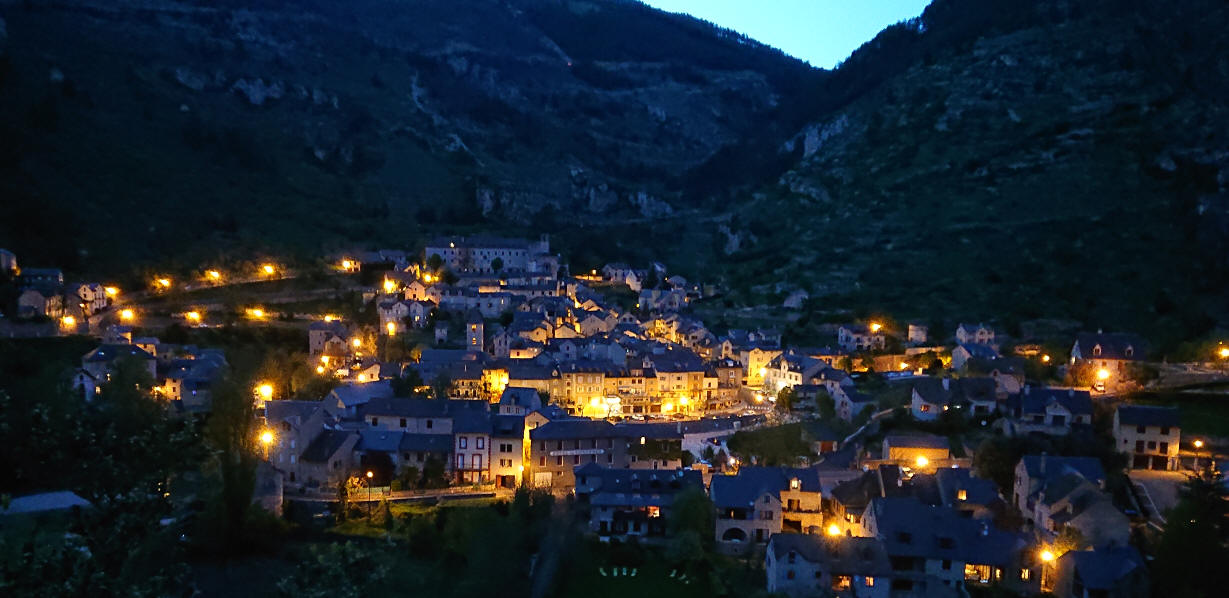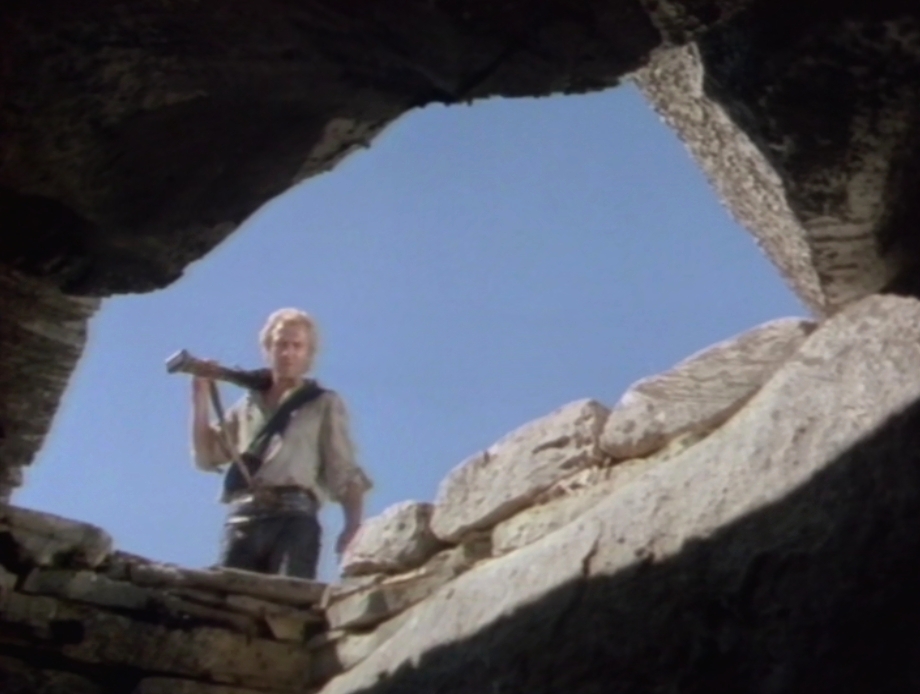
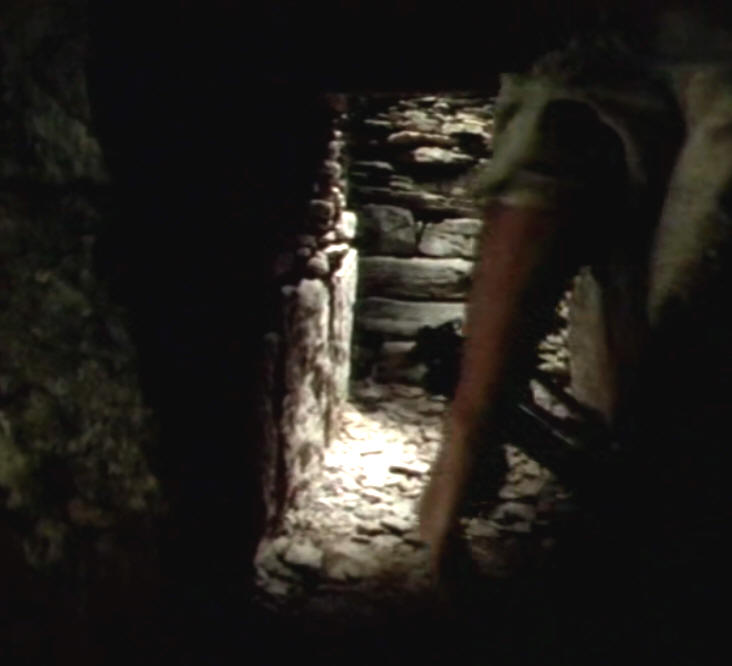
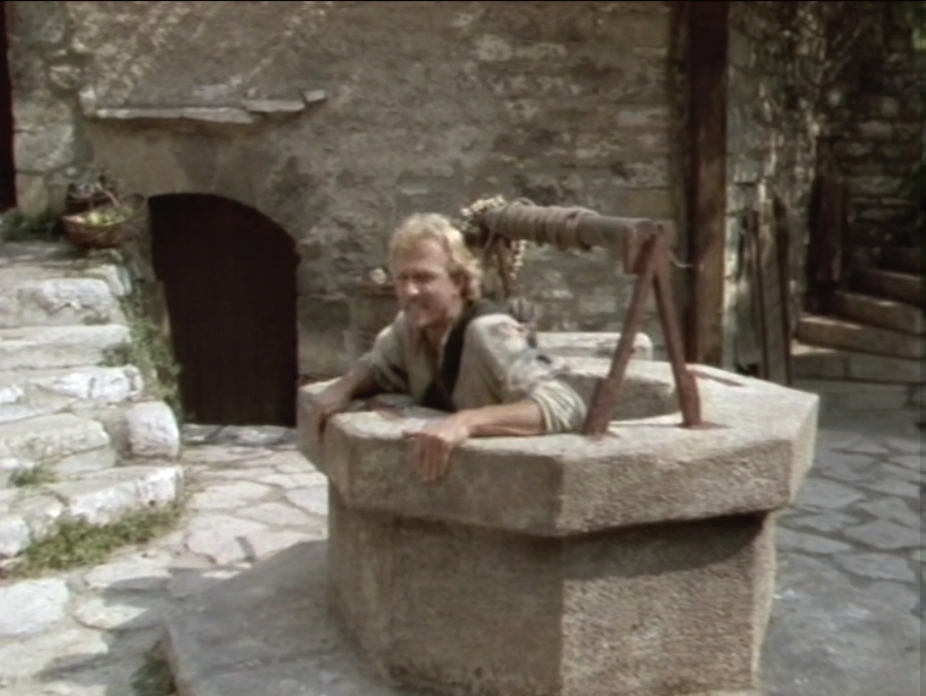
Sainte Énimie
This small town is the scene for 'Forbidden Fruit' and a must-see for those who want to discover it's heritage or enjoy a canoe ride. In the 6th century, Énimie - a merovingian princess,
sister of King Dagobert - was cured from leprosy when she drank water from the Burle in this small Gorges du Tarn village. This is the legend of Saint-Énimie as recorded in the 8th
century by troubadour Bertrand de Marseille. The Saint attracted many pilgrims, and in turn pilgrimages helped develop the medieval city. Sainte-Énimie is one of the prettiest villages
in France, as evidenced by a walk from the quays to the abbey via small streets. Sainte-Enimie is a French town and former municipality located in the Lozère department in the Occitanie
region. The inhabitants are called Santrimiols. It is close to the Gorges du Tarn. Sainte-Enimie is counted among the most beautiful places in France, due to some characteristic streets.
Episode Forbidden fruit
It starts with this scene: Climbing through an underground corridor.
Story: Tell comes from a well into the village. The contact with the villagers is difficult. They seem enchanted, except one. Tell tries to unravel the secret.



Locations: The underground corridor is unknown, We don't know the interior is real Dolmens & Menhirs do exsist. So the first shot is probably real.
But is the corridor is real? The well is fake for sure. It's put on the Presbytère square in St. Enimie. But the idea is great.
L'eglise Notre-Dame-du-Gourg
In the church, which you see in the background, other scenes from this episode are also included.
You can see the interior of the church when you're scrolling down.
1988 2005 made by S. Barthemely

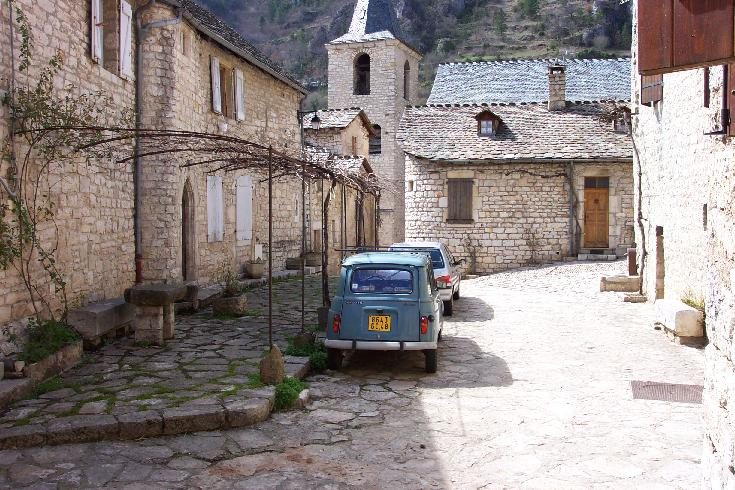
1988 2015
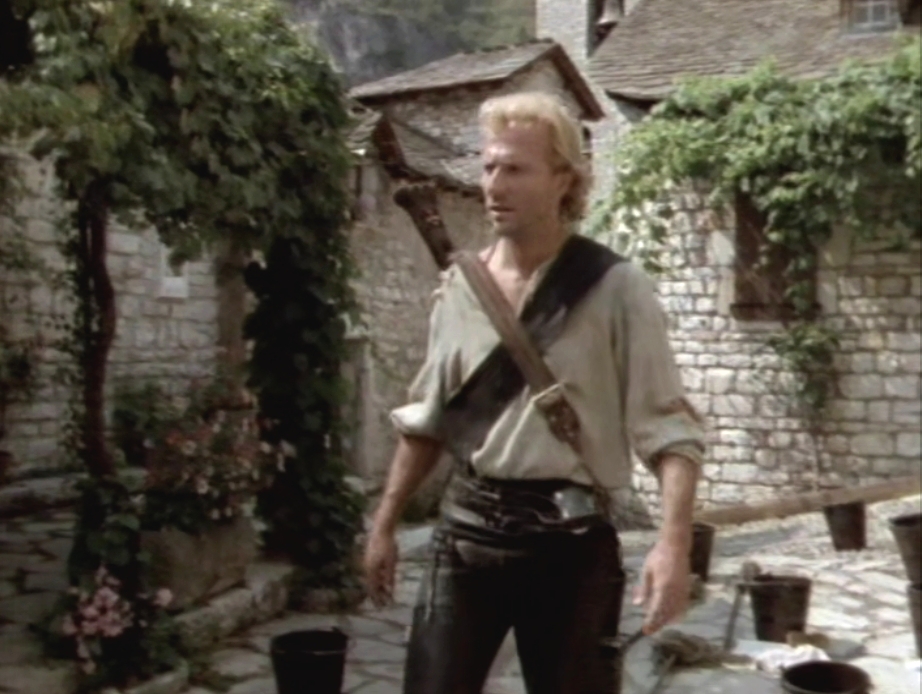
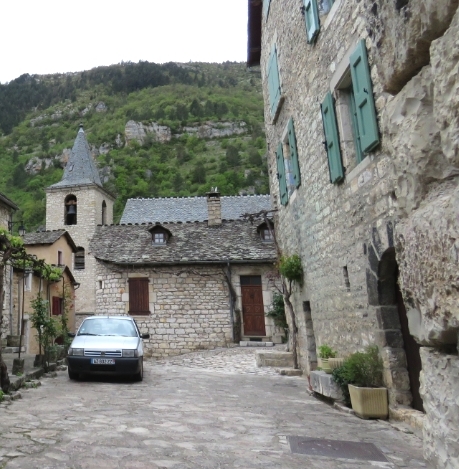
Place du Presbytère in Sainte-Énimie
The square near the church (4 on the map). I think most scenes have been recorded on this square. The square is filmed from many angles.
2019 1988 Still the same door of glass, covered with wood. You can see it below.
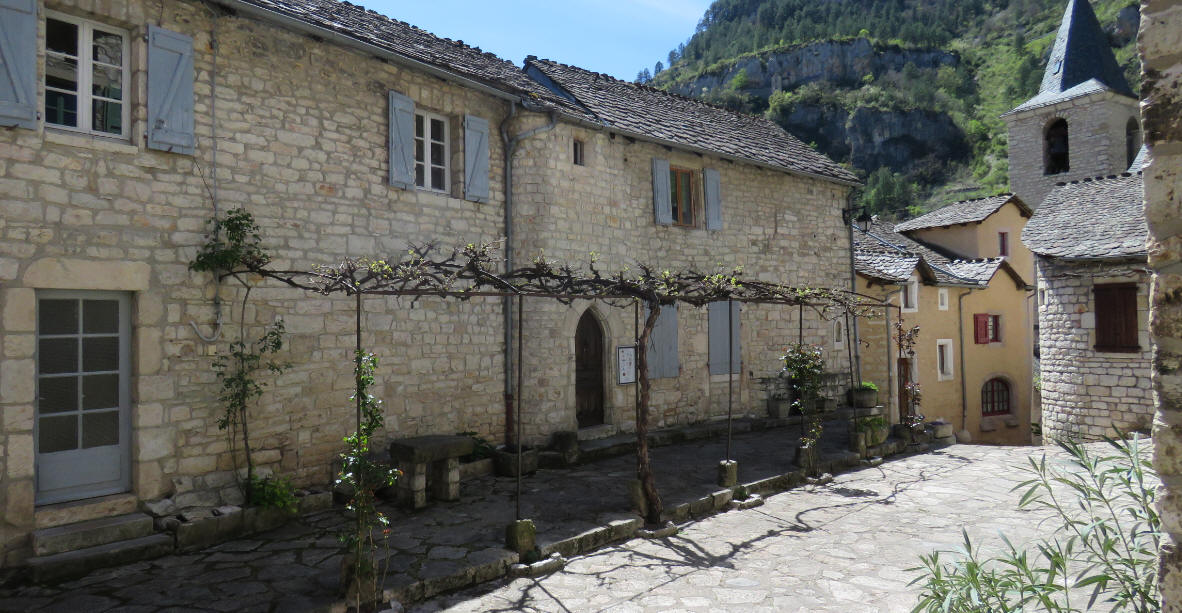
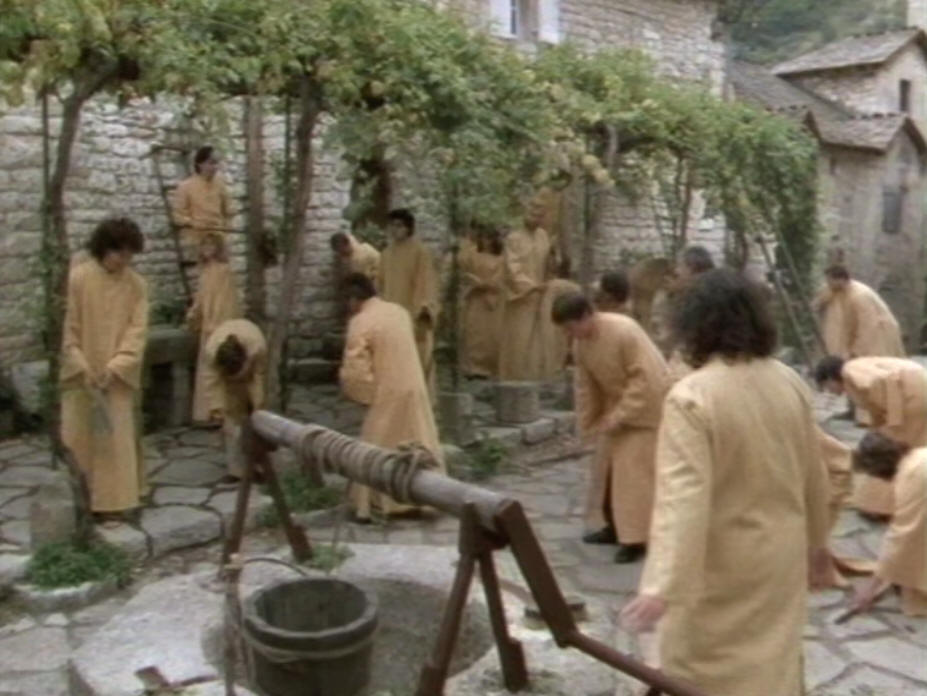
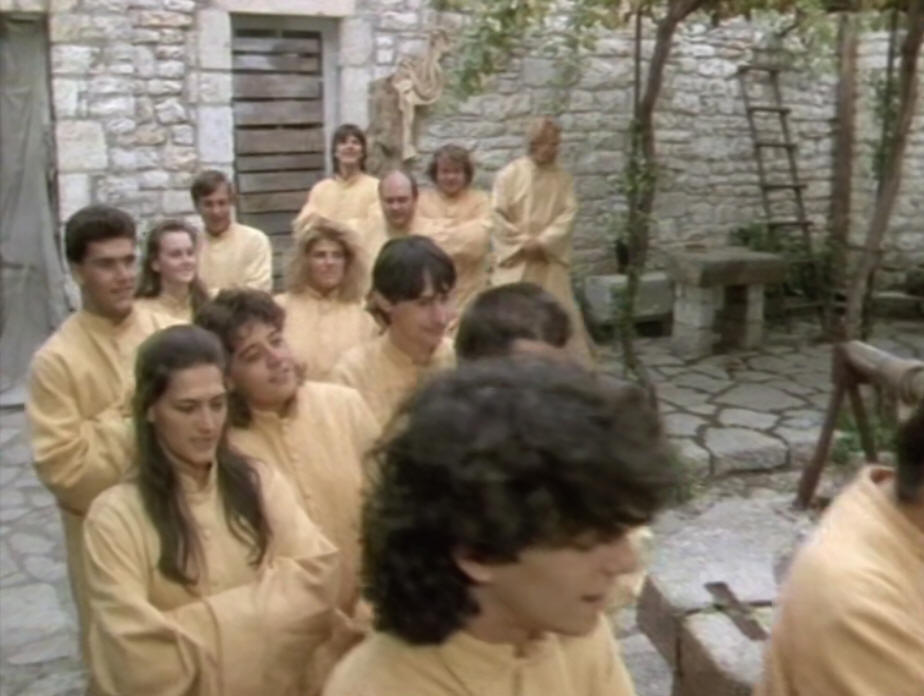
Walking to the south side of the square. The shot left is 90 degrees turned to the right of this square. The same stairs. Made by S. Bathelemy 2005
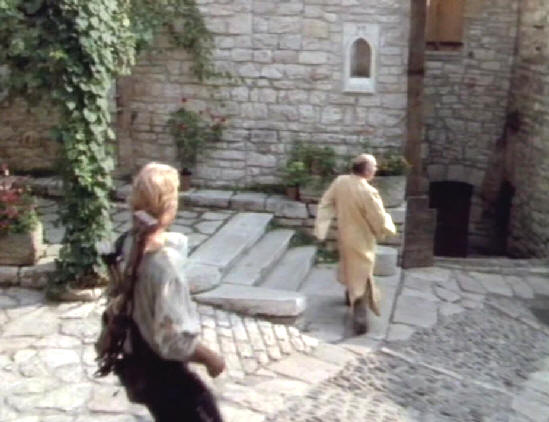
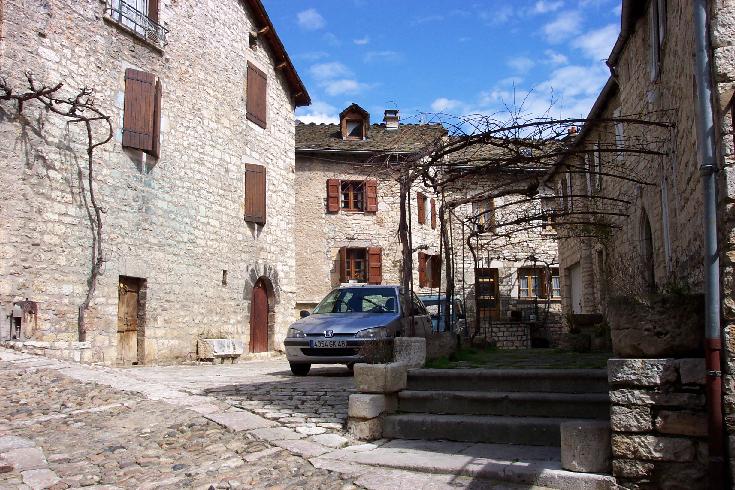
Above and below: the same square, summer 2020
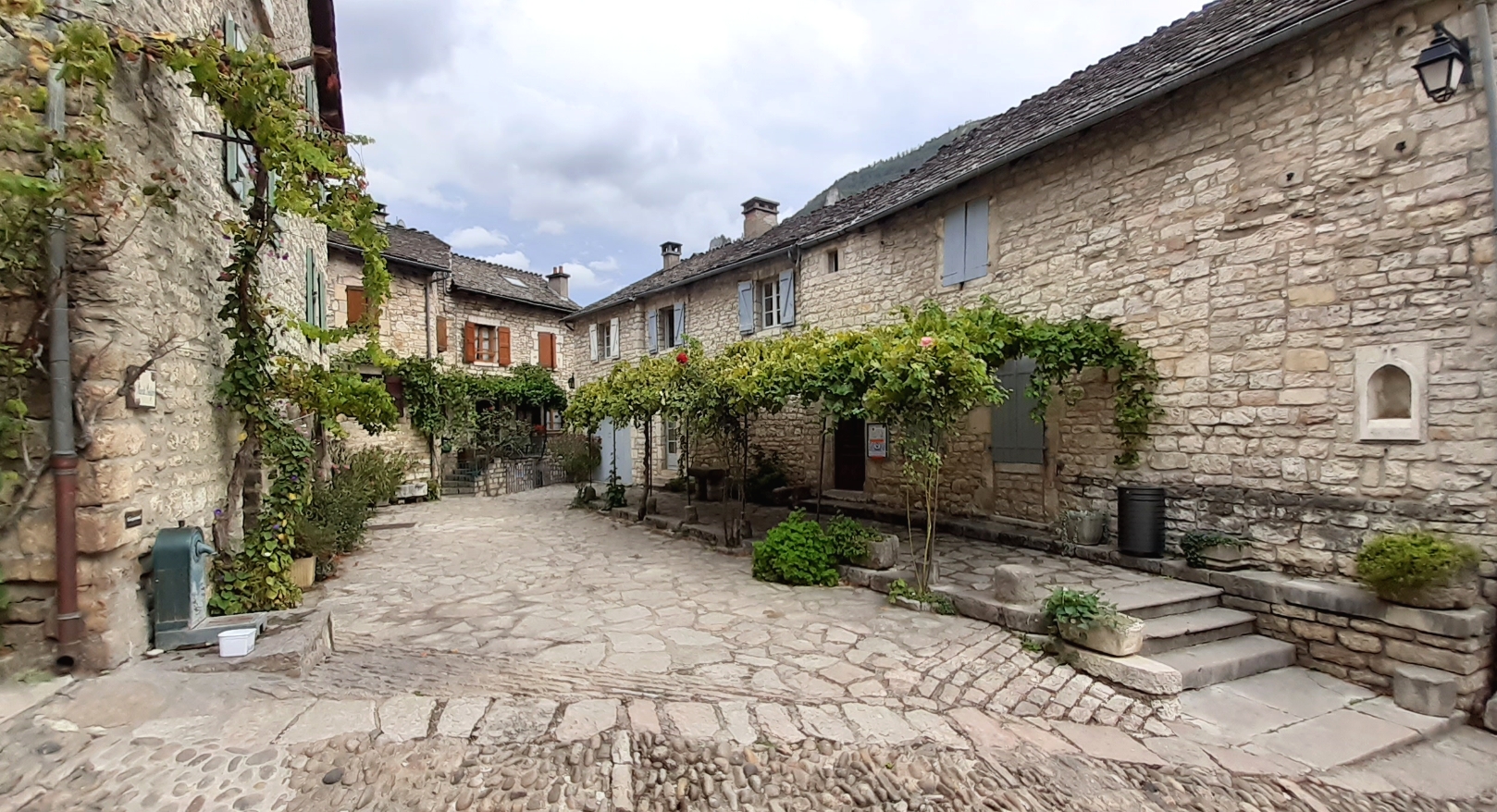
Walking from the square, going west (to the church).

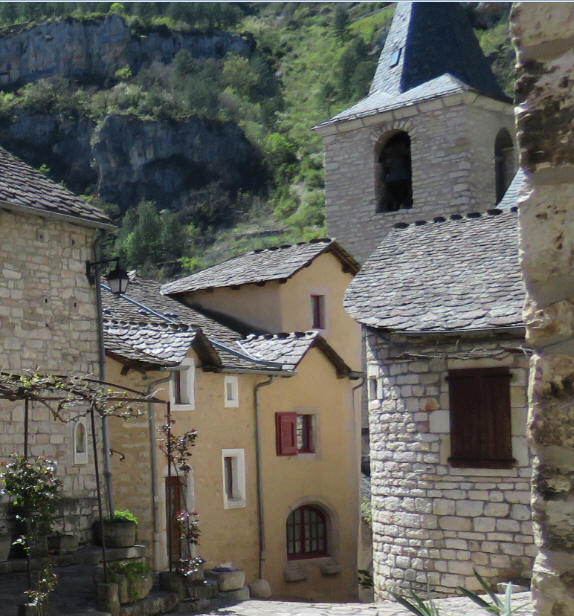
1988 Looking to the east side of the square 2005
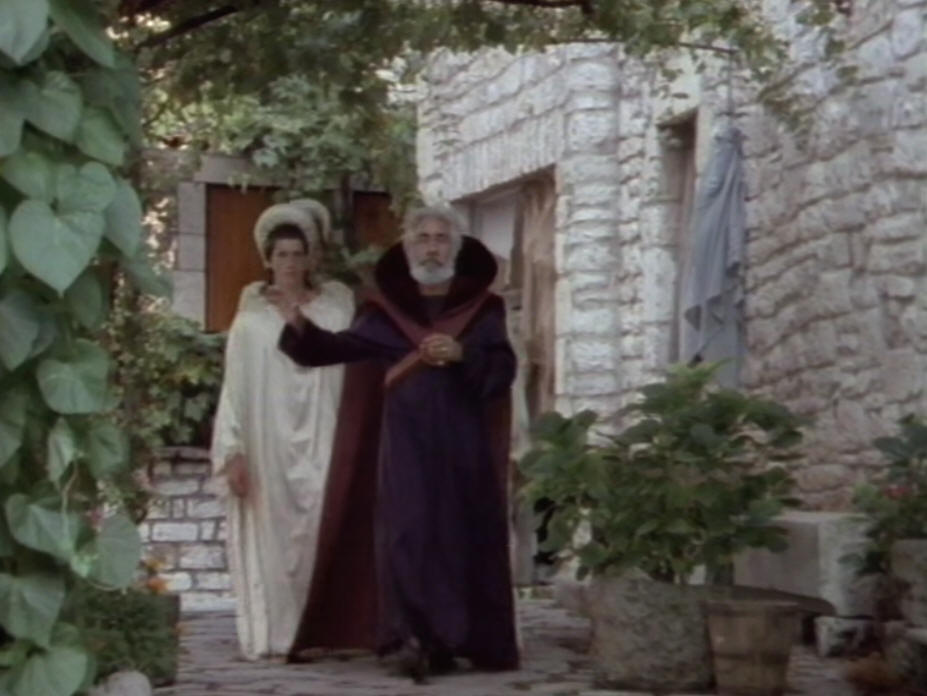
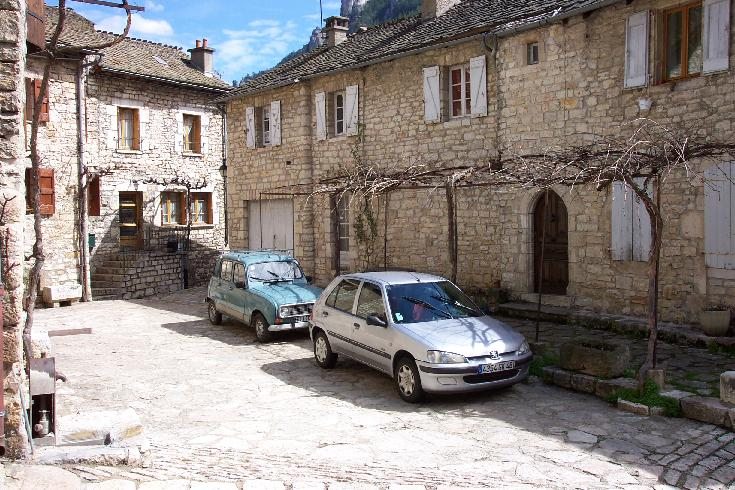
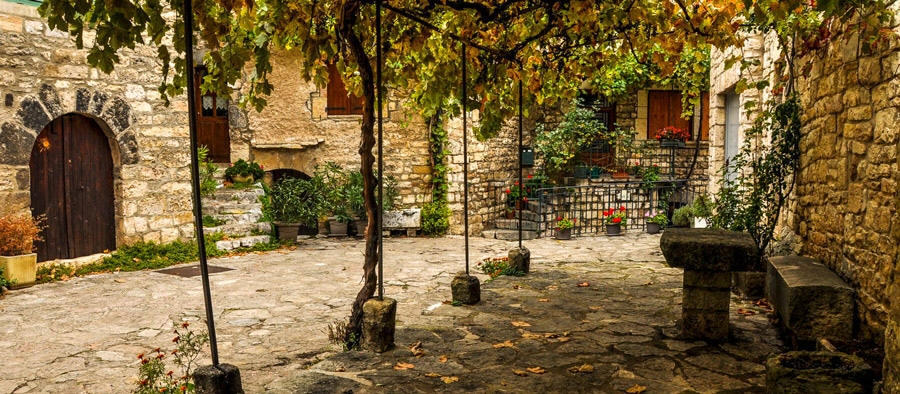
The Presbytère square
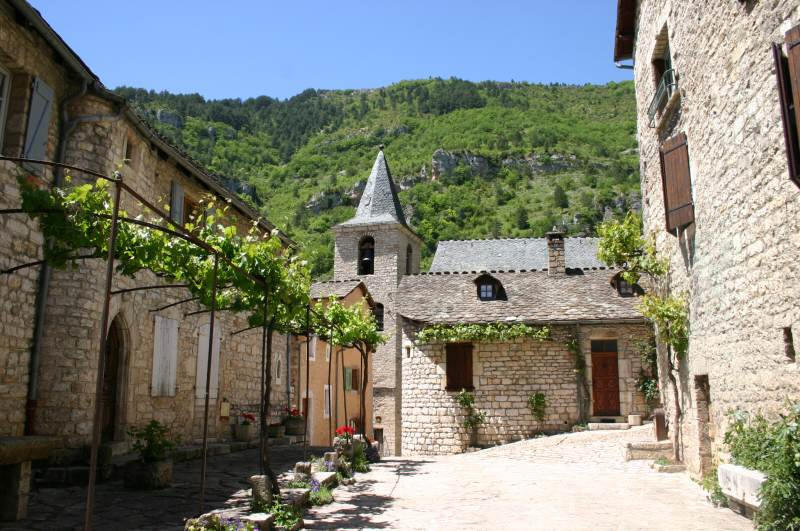
The episodes starts and ends at this square
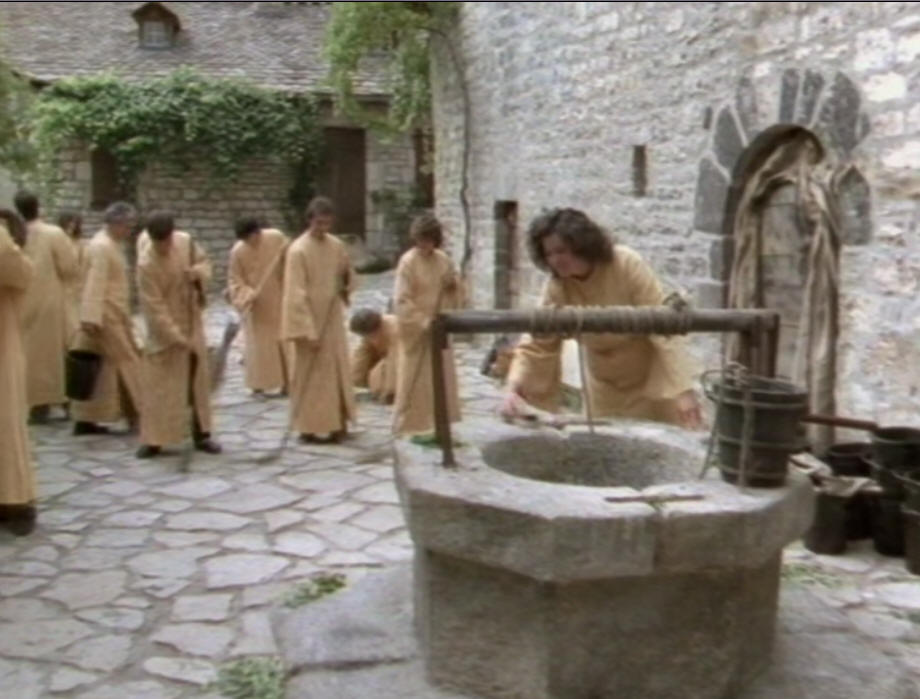
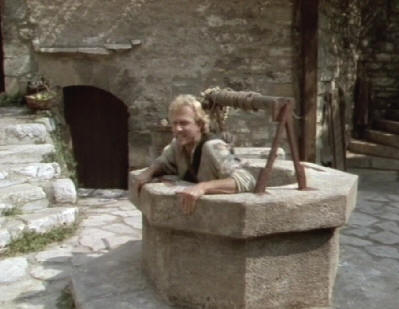
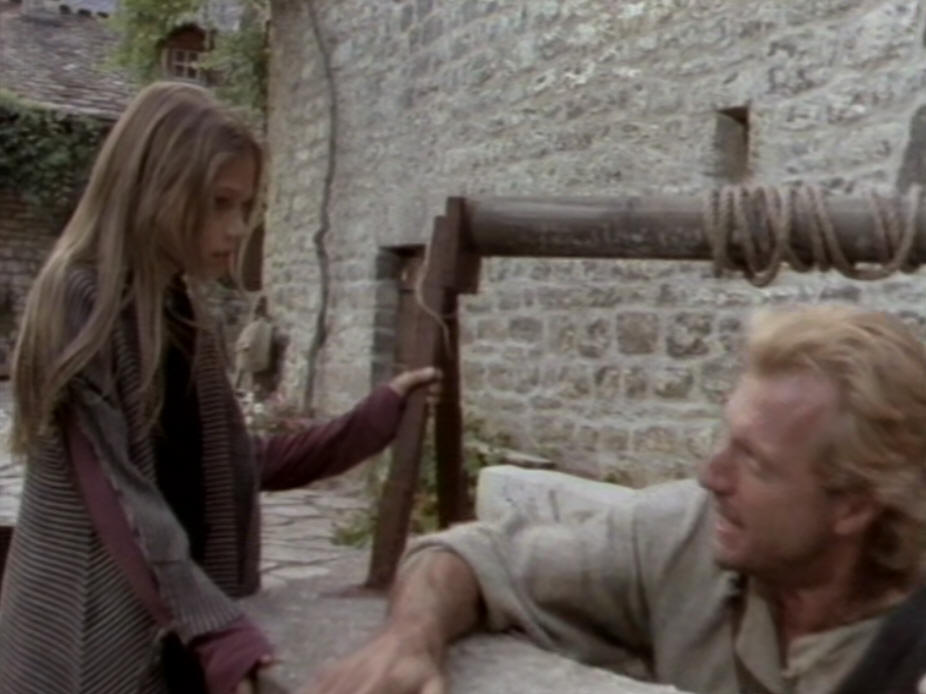
The well on the square
1988 The well is not real 2015 1988 opposite of the square
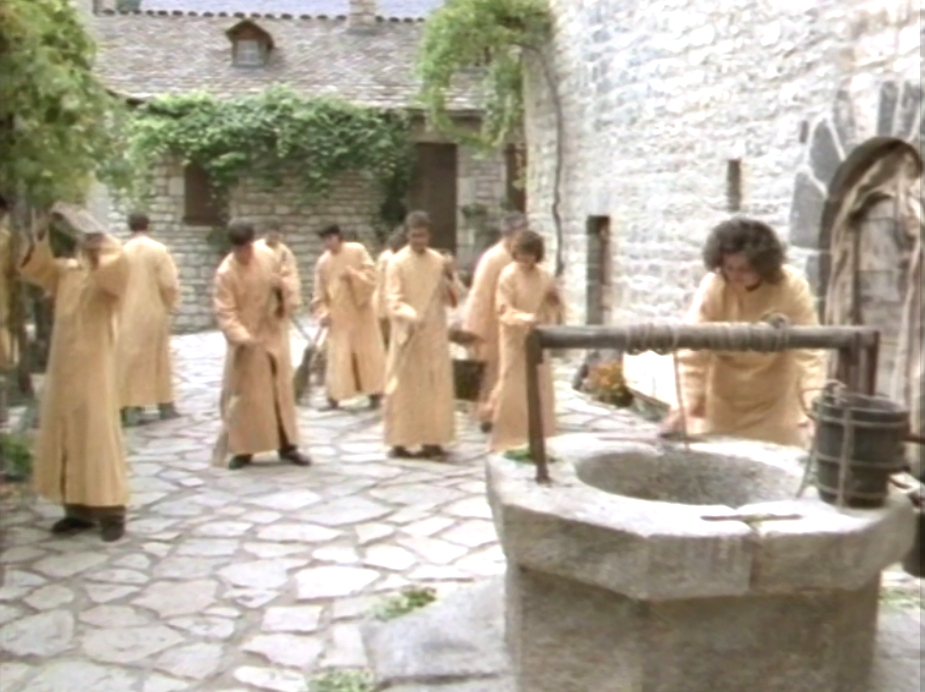
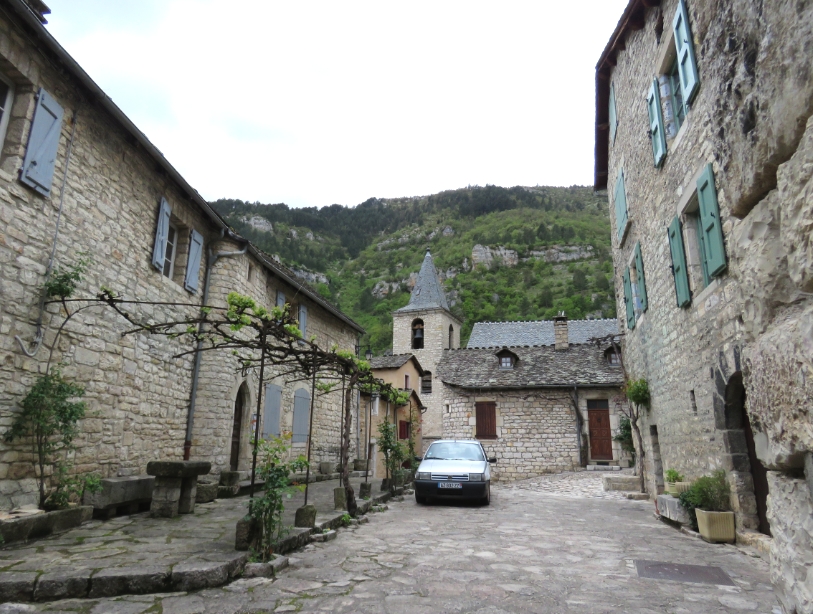
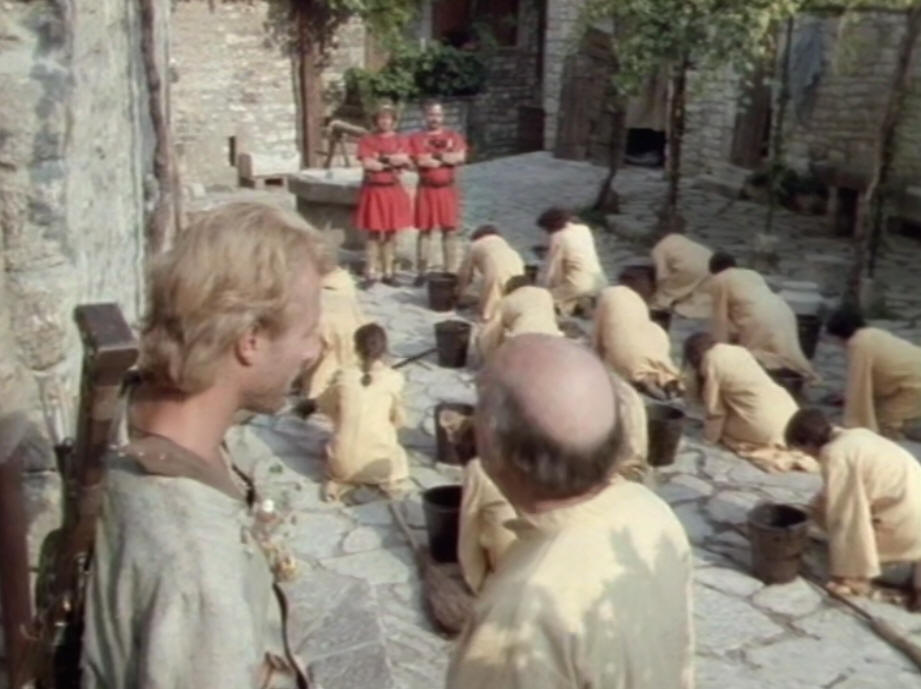
Take a look at the 'Carline flowers, on the door behind Tell. I have never seen so many at one door.
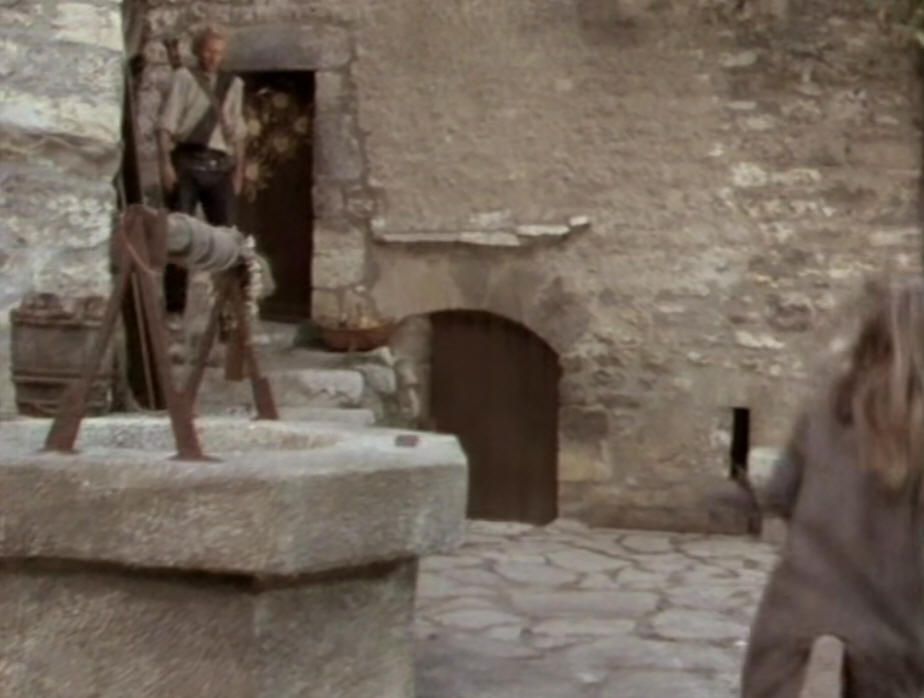
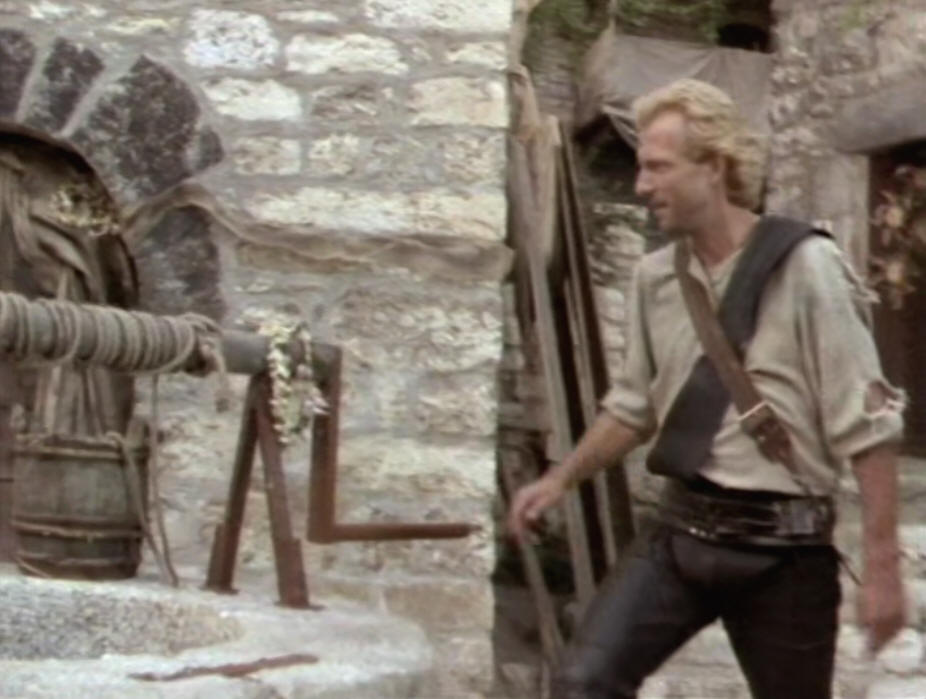
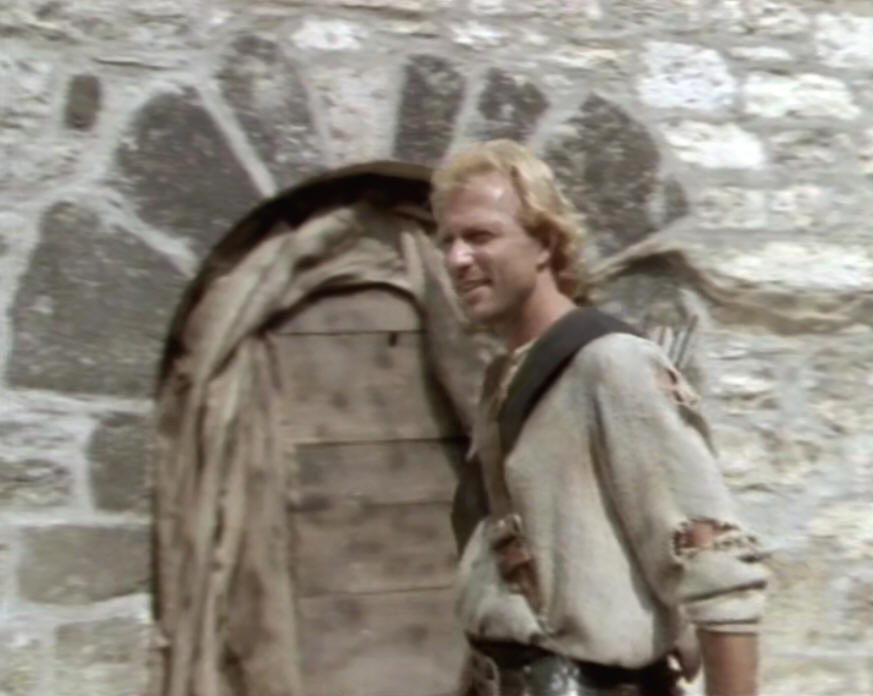
1988 Leaving the sqaure at the north east side 2016
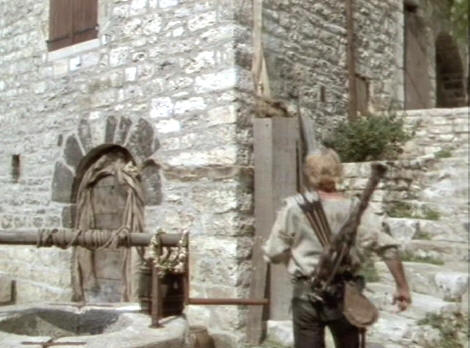
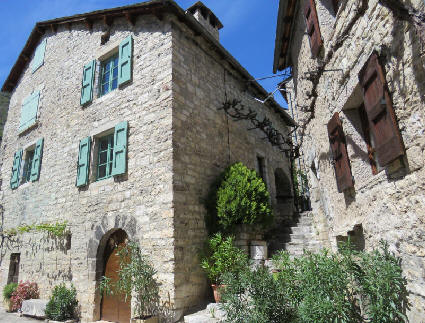
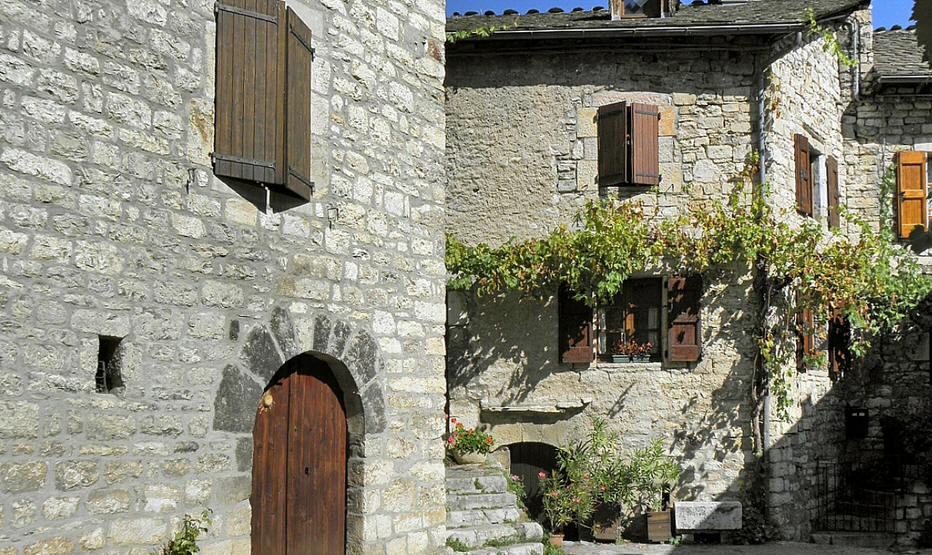
The lane attached to Presbytère square
It looks like there was a fake wall in the lane probably to hide something Tell and O' Grady are standing on the left corner
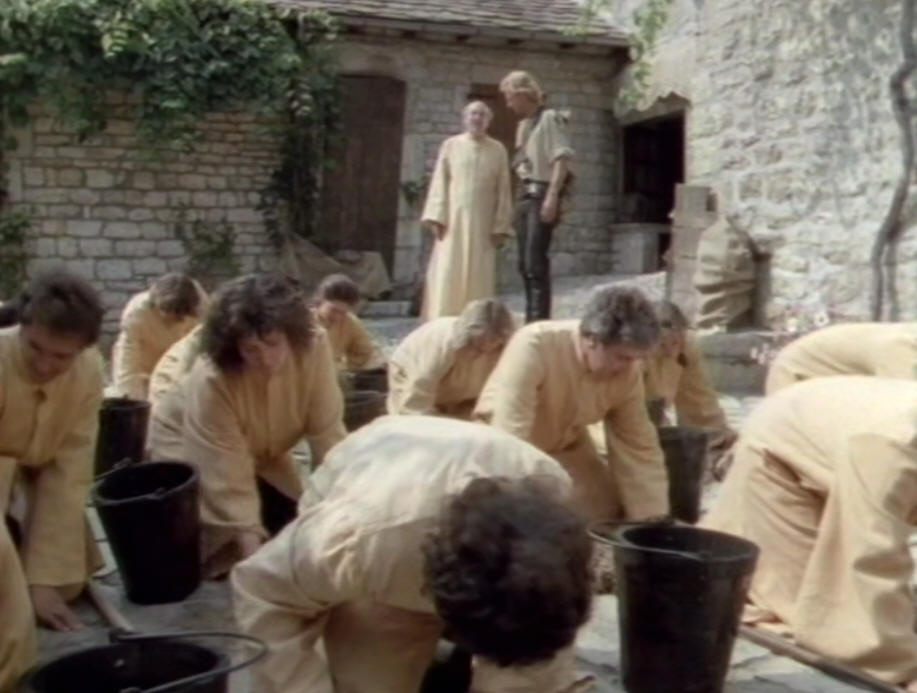
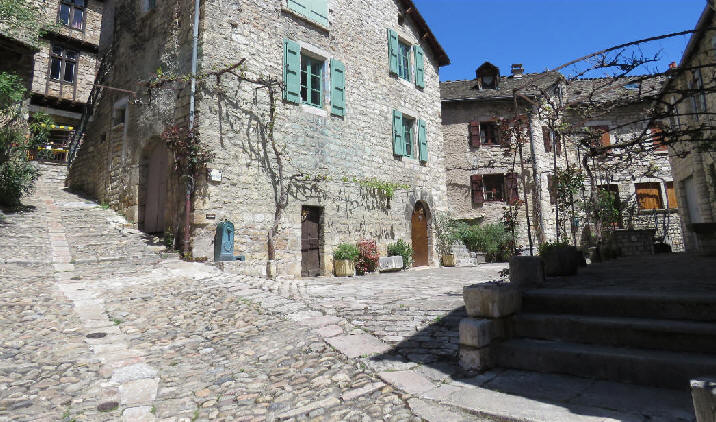
2015 The balcony 2015
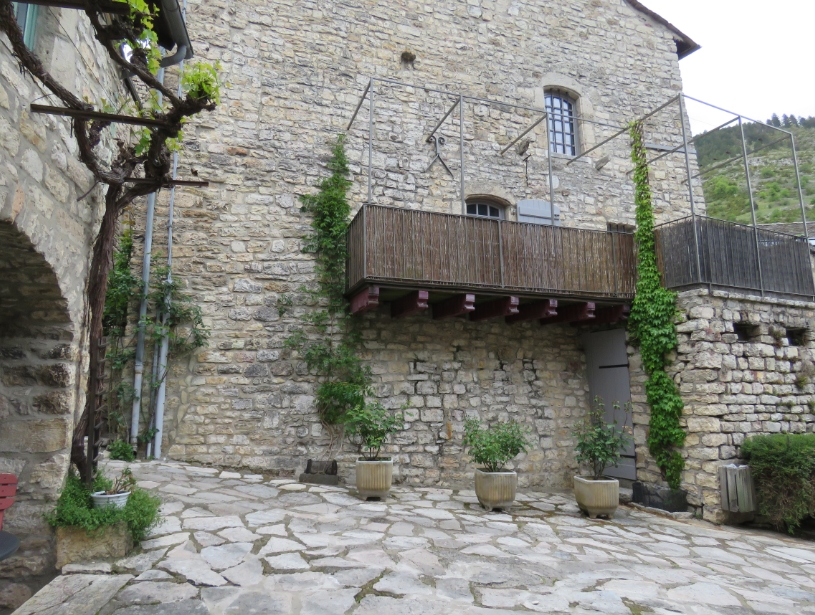
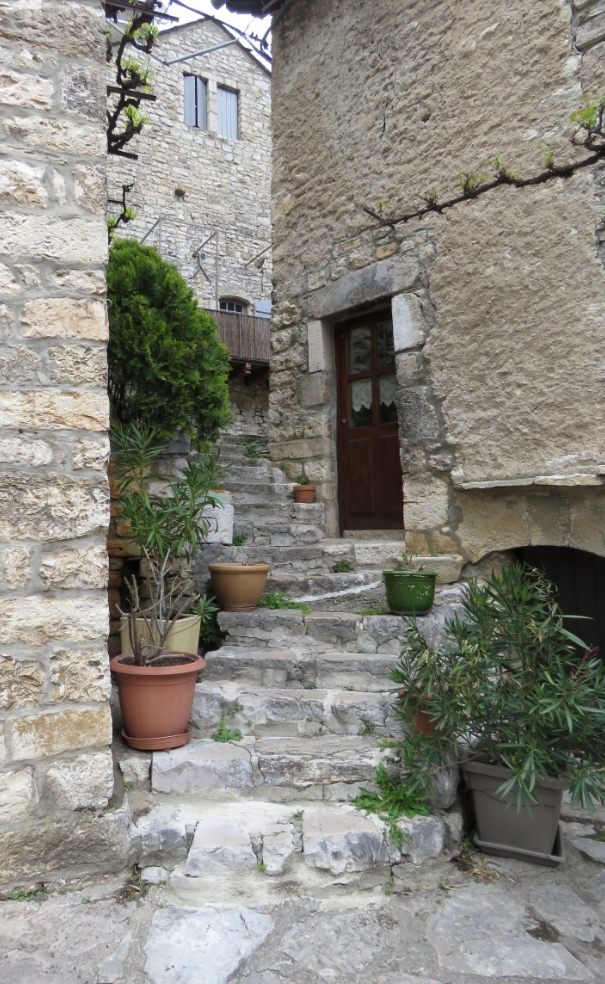
The covered balcony can be seen through an alley of the north side of the square.
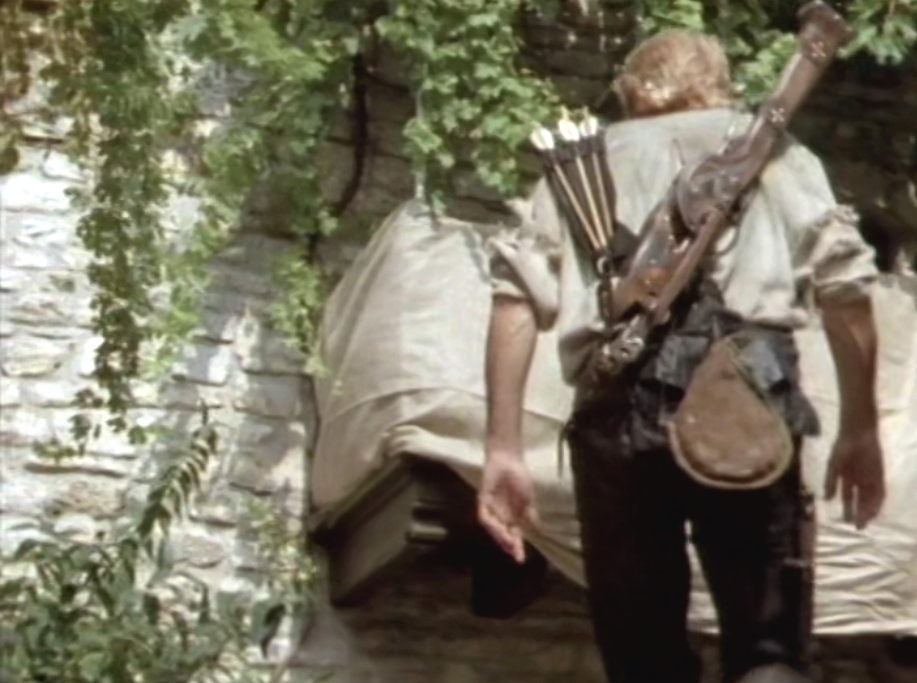
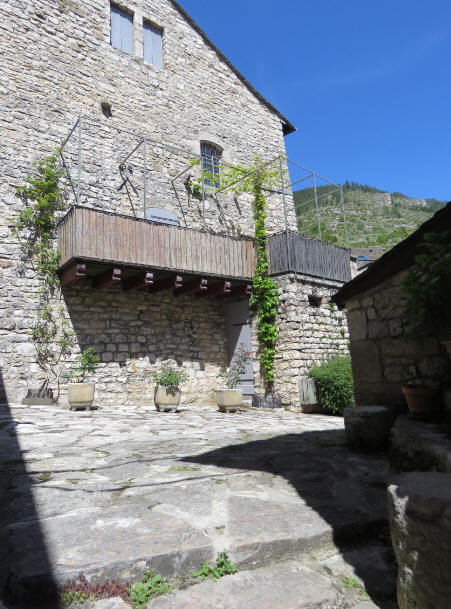
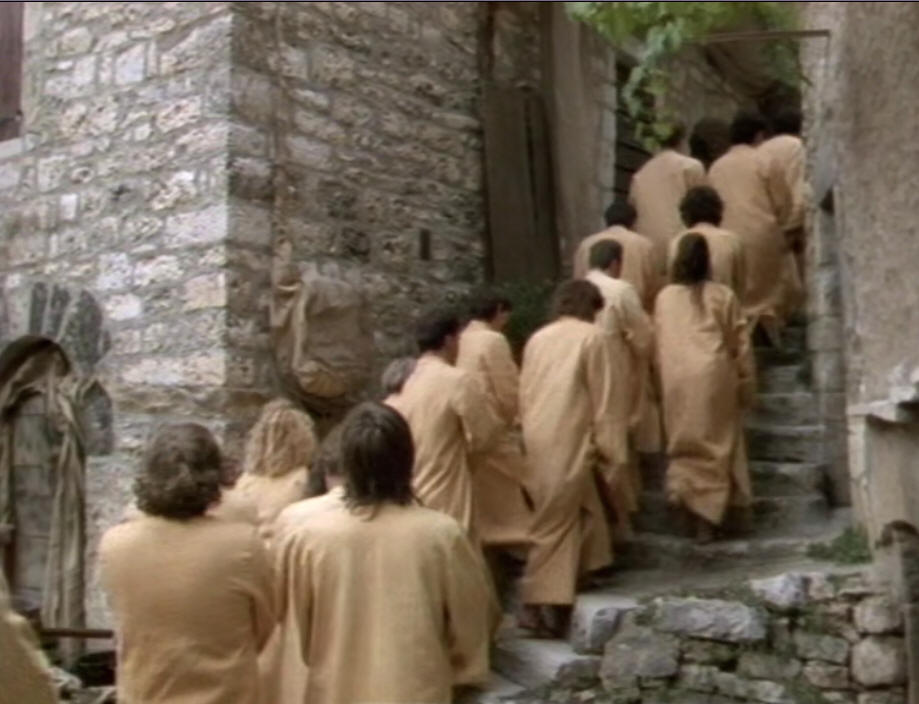
The door and it's Carline flower
30 years later...... probably a different dried flower, but the same spot and same door. But you never know..it hangs sheltered.
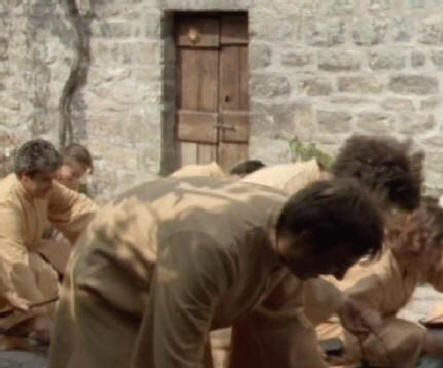
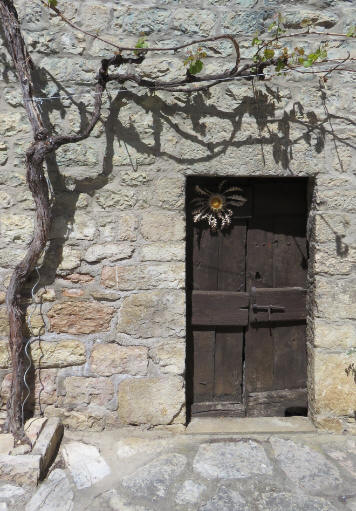

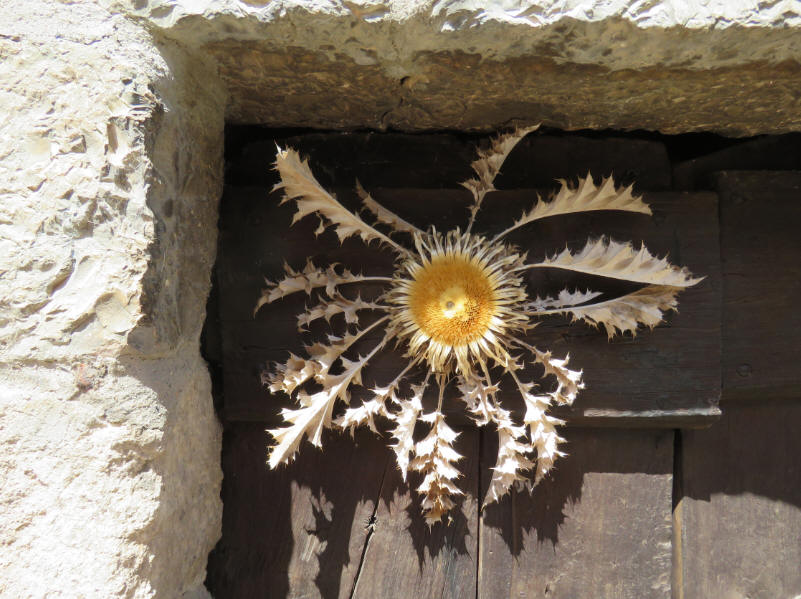
Corridor on rue de la Privadenche
Scene: O 'Grady has disappeared. Tell is looking for him.
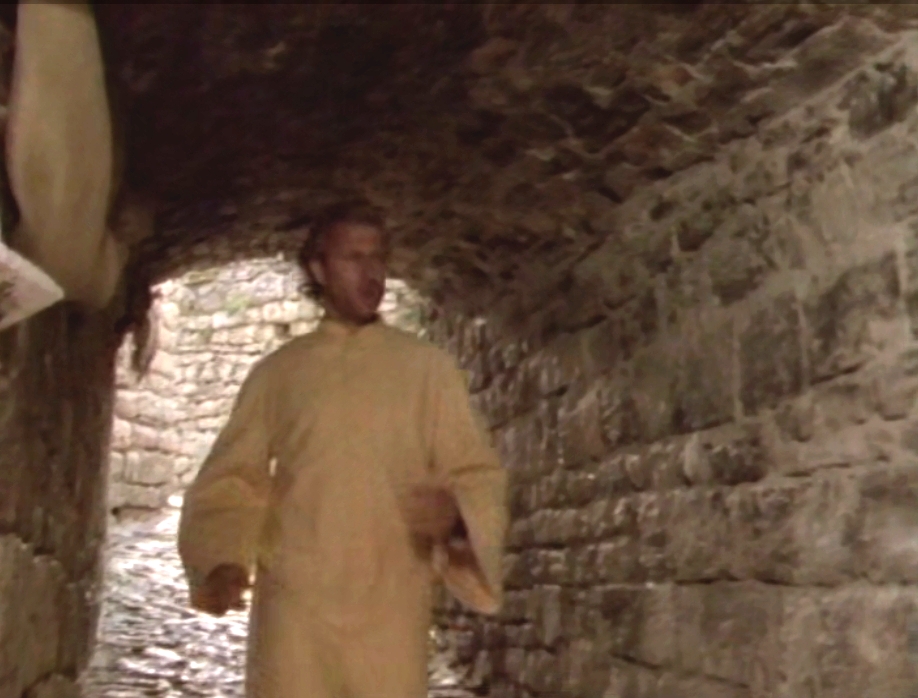
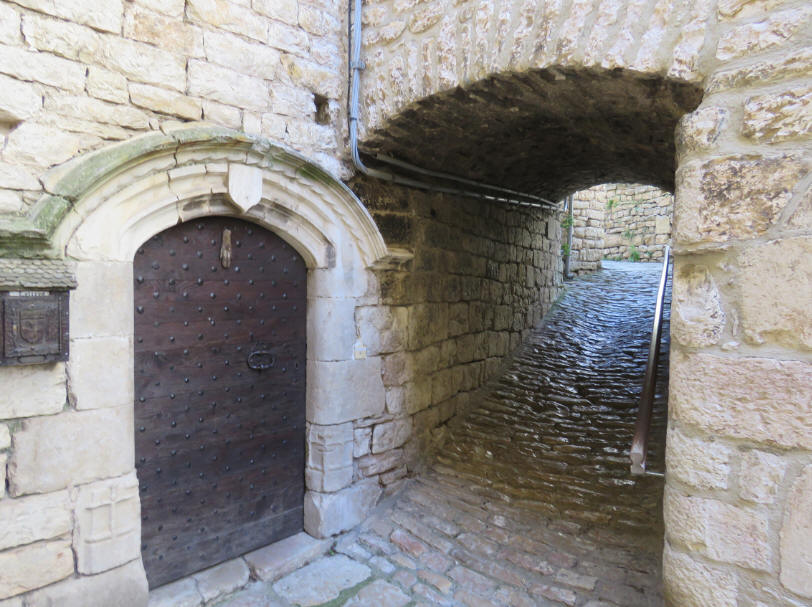
1988 The electricity cables are covered well and a handrail has been added. 2019
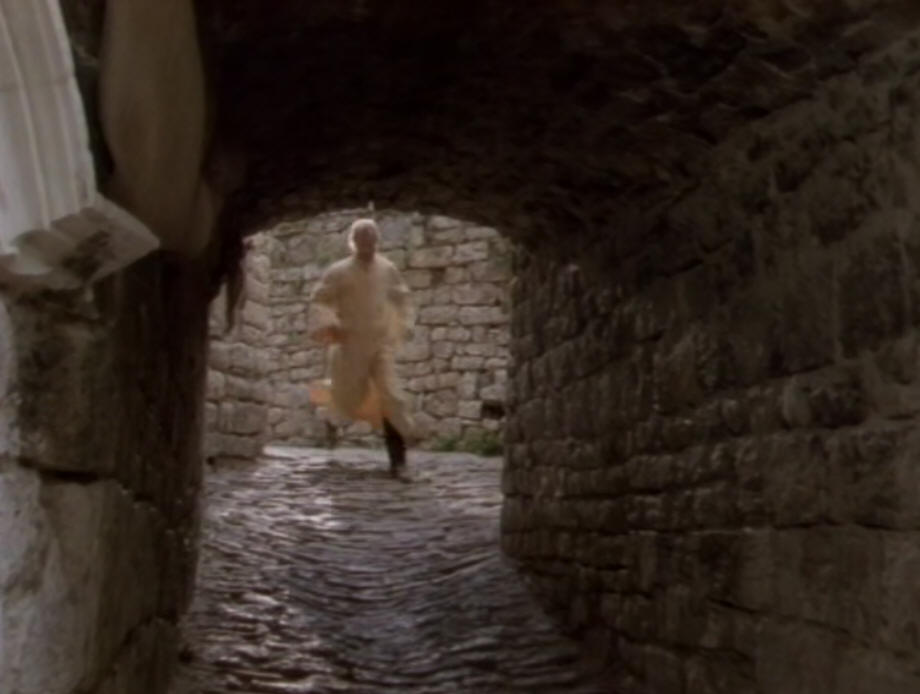
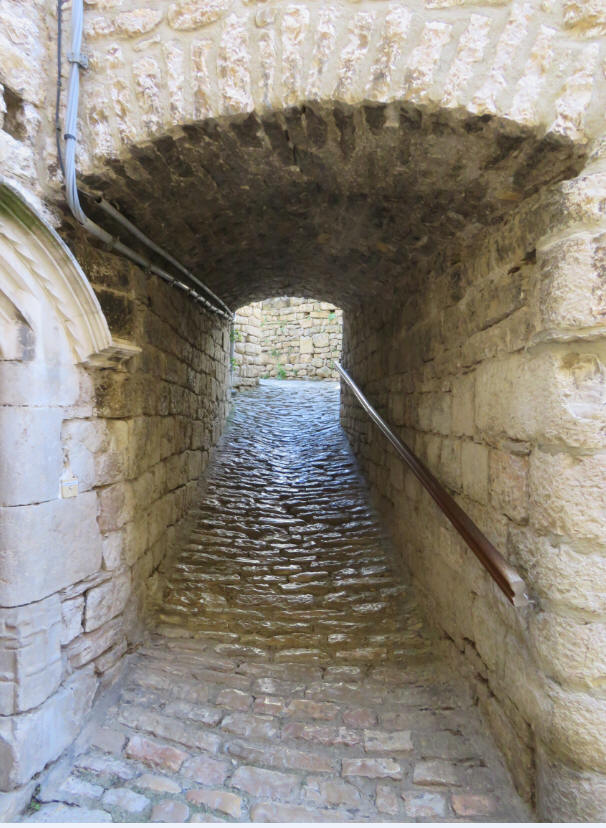
Seen from the other side, 2019 2019 Tell ran into the tunnel left
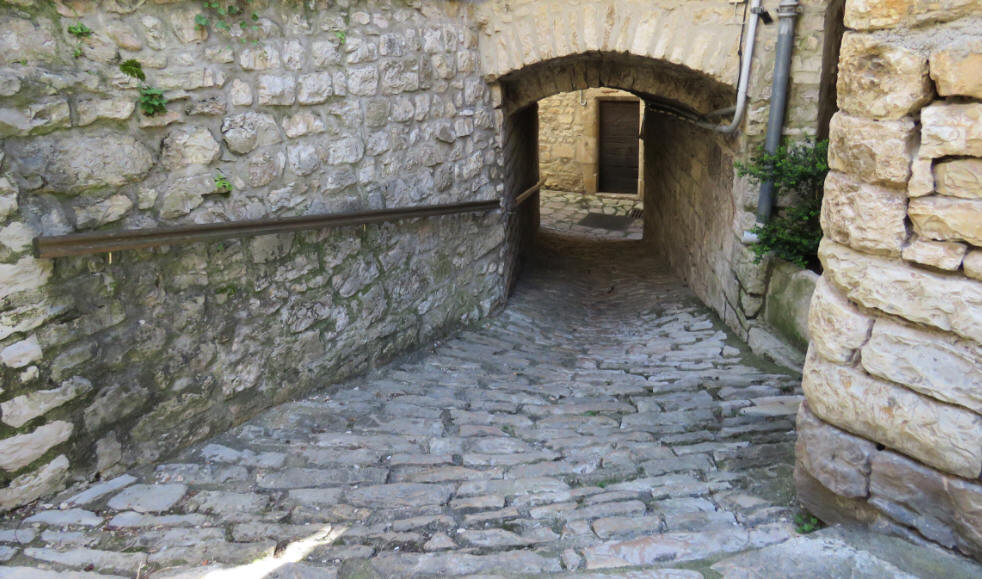
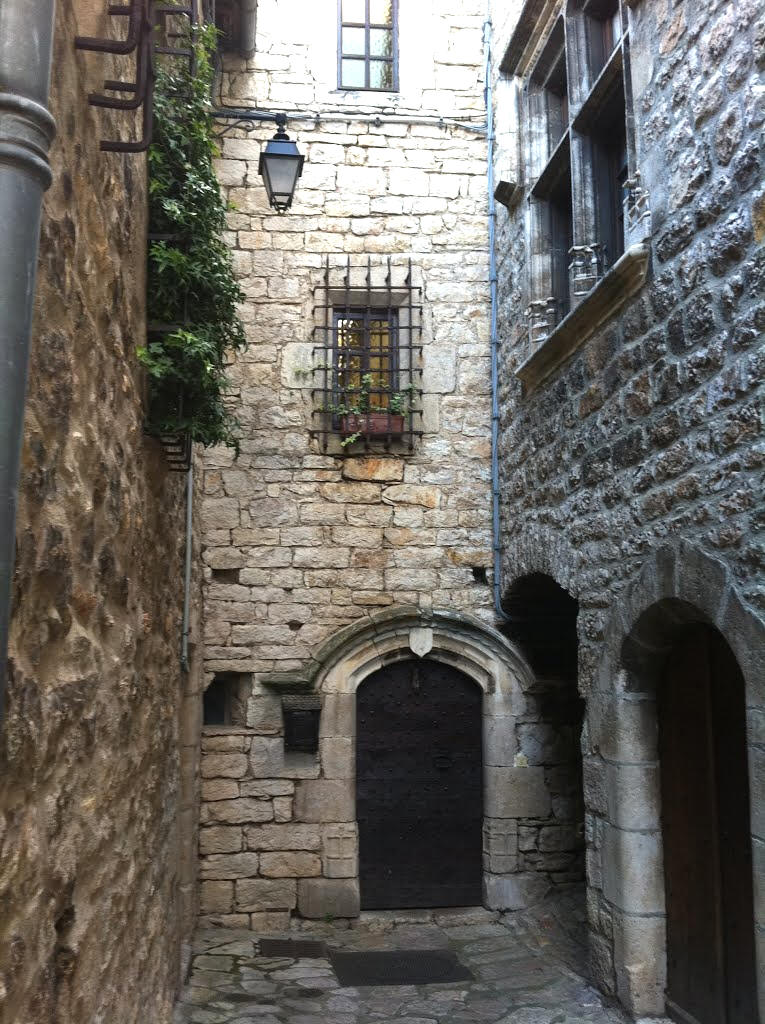
Rue de la Privadenche
A beautiful and ancient street.
Opinions vary as to the origin of the name of this street. Some say it means Privat Street. Privat was a family that lived there during the 18th century and other claim that
the long street had a sanitary function. 'Private' means also in medieval Latin lavatory. The blackened surfaces and the beams and woodwork of the remarkable half-timbered
house are marks left either by fire or by the smoking out technique, a practive aimed at curbing the spread of epidemics (cholera, plaque). St. Enimie was miraculously spared
from the black plaque that wreaked havoc in the province from 1721-1723 On the door of this house you can see three acanthus leaves thistles, also called carlines or
cardabells. This flower, now a protected species, is thought to act as a barometer and to ward off evil spirits. This plant is symbolic to the limestone region.
In this narrow street, a half-timbered house from the late Middle Ages. A house with mullioned windows. A renaissance door. Vaulted passage. A lot to see!
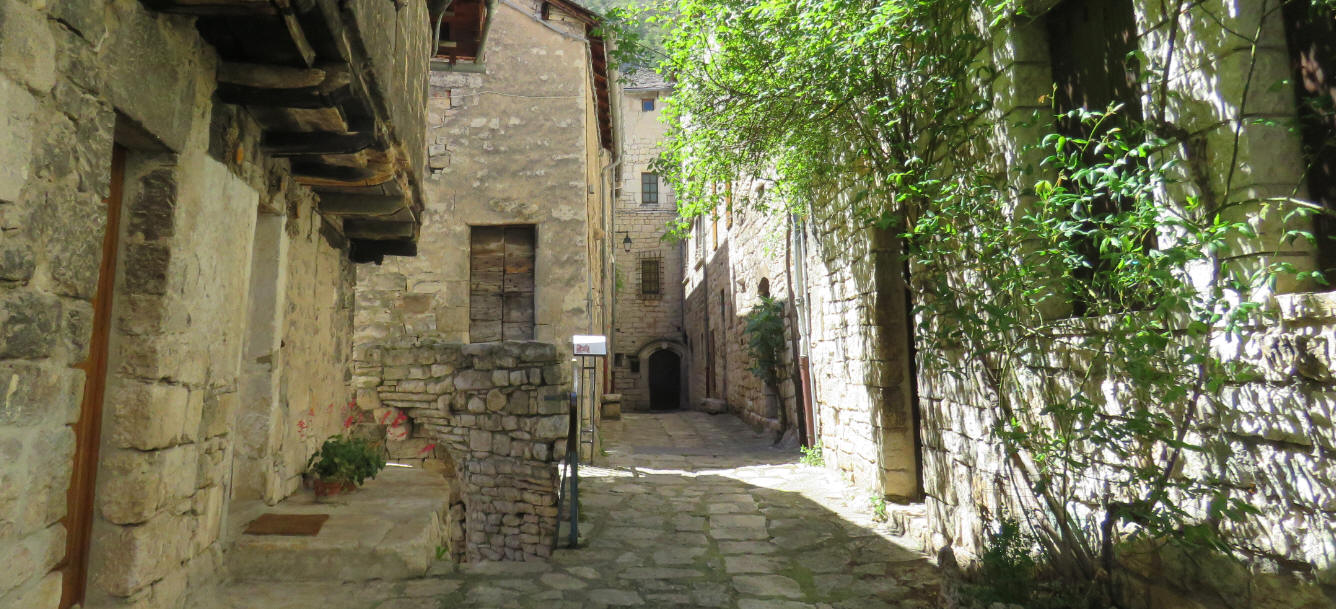
1988 'Rue de la Privadenche,' behind the huge door is a gite nowadays 2015
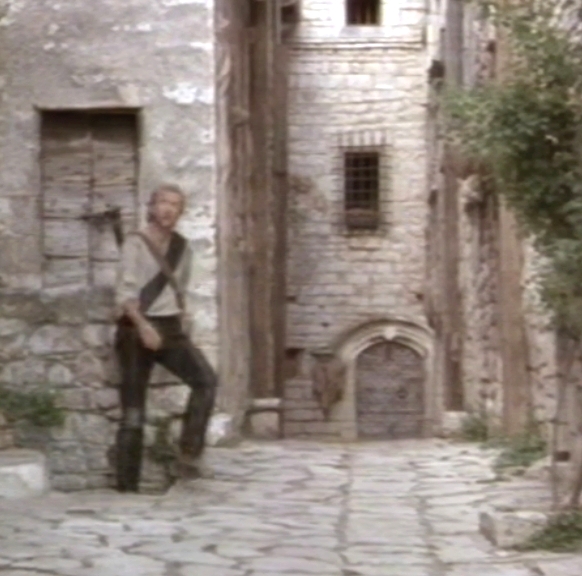
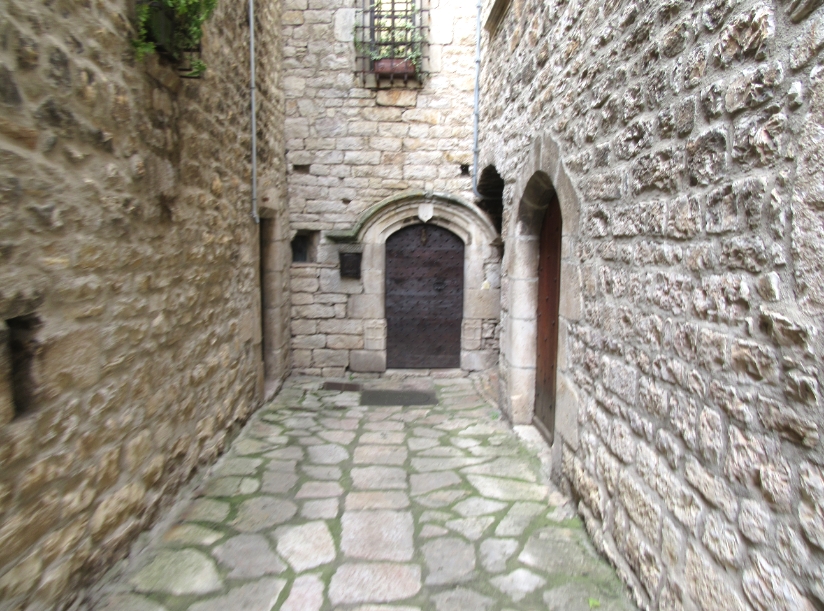
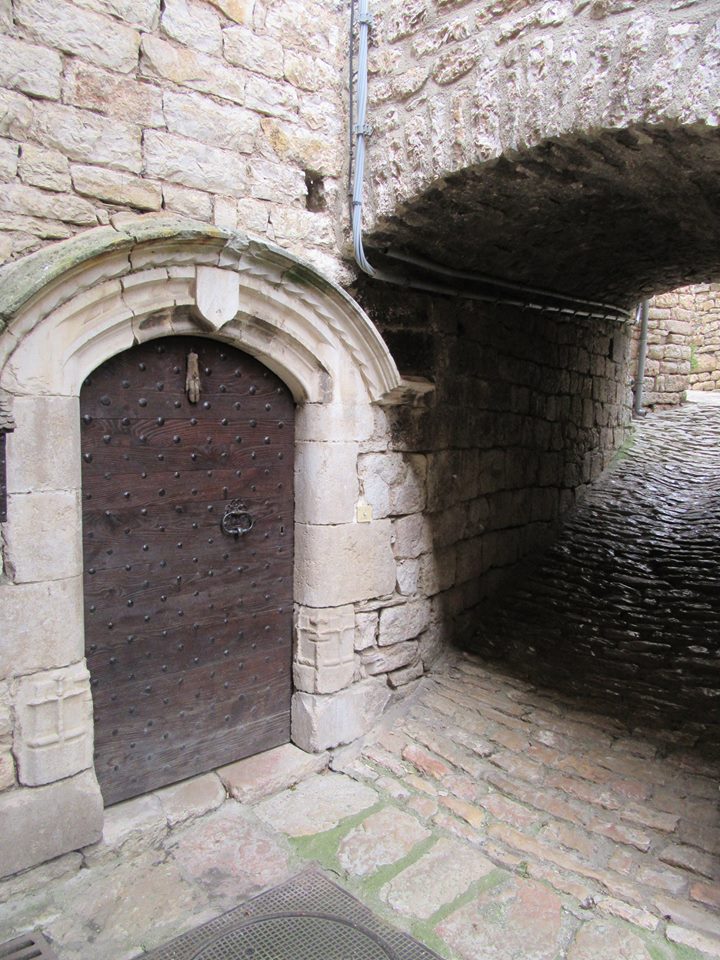
1988 Tell came up the stairs halfway this street. The stairs have a railing nowadays 2015
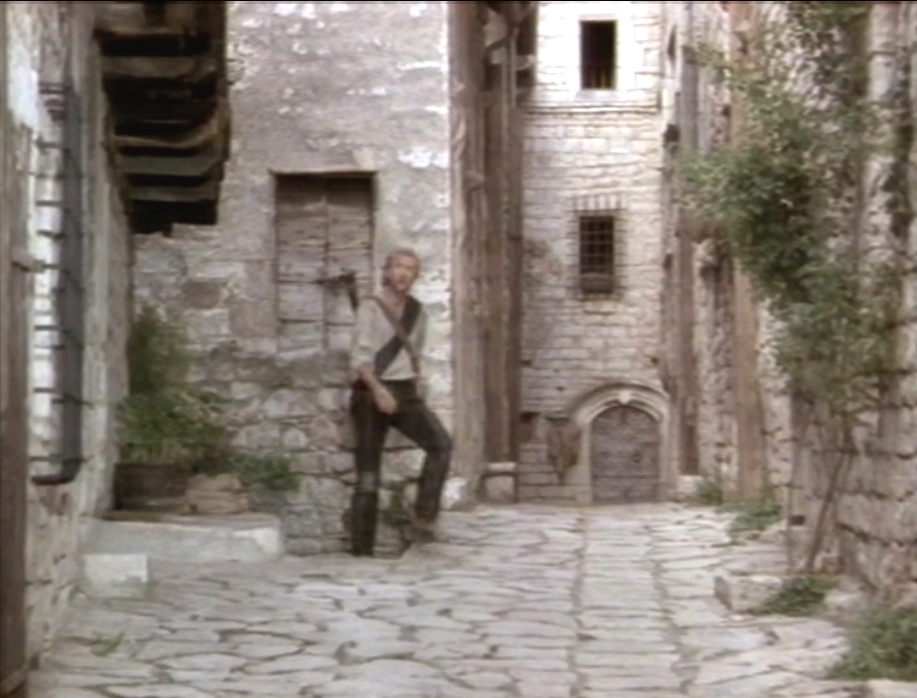
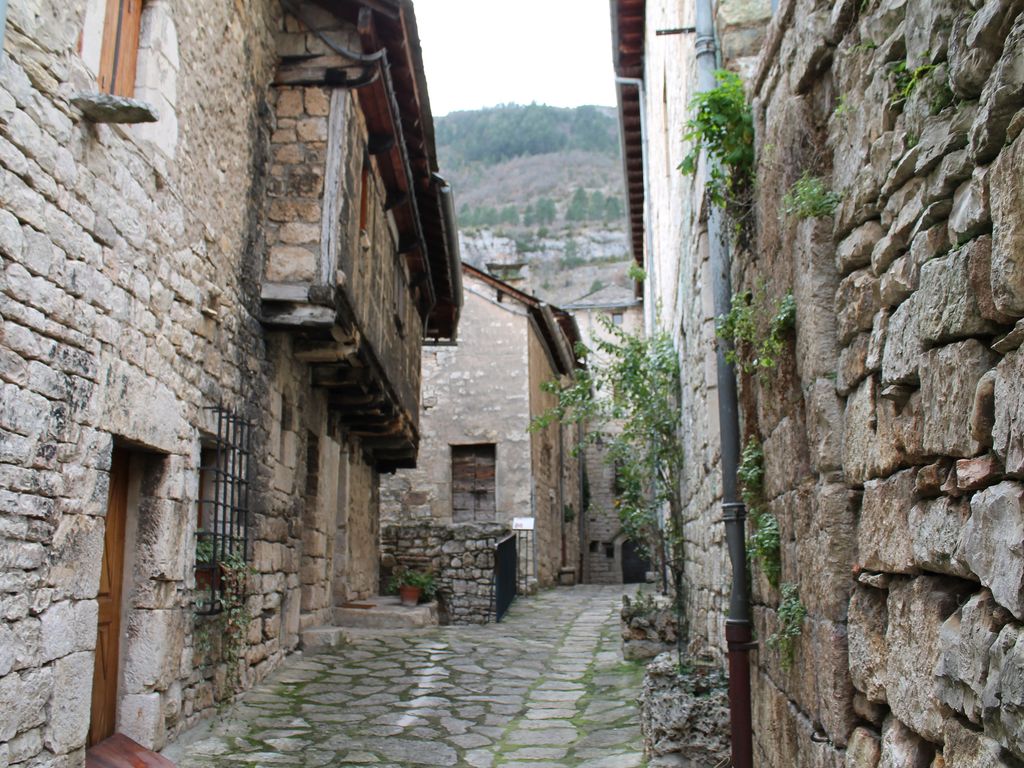
This is the place where O'grady discovered Tell is not one of the spelled 'smilers.' The door, behind O'grady, was in the same street and in opposite of the stairs Tell ented this street).
Three scenes: 1. Tell met O'Grady 2. Tell looked for O'Grady 3. and Tell ran through the corridor looking for O' Grady.
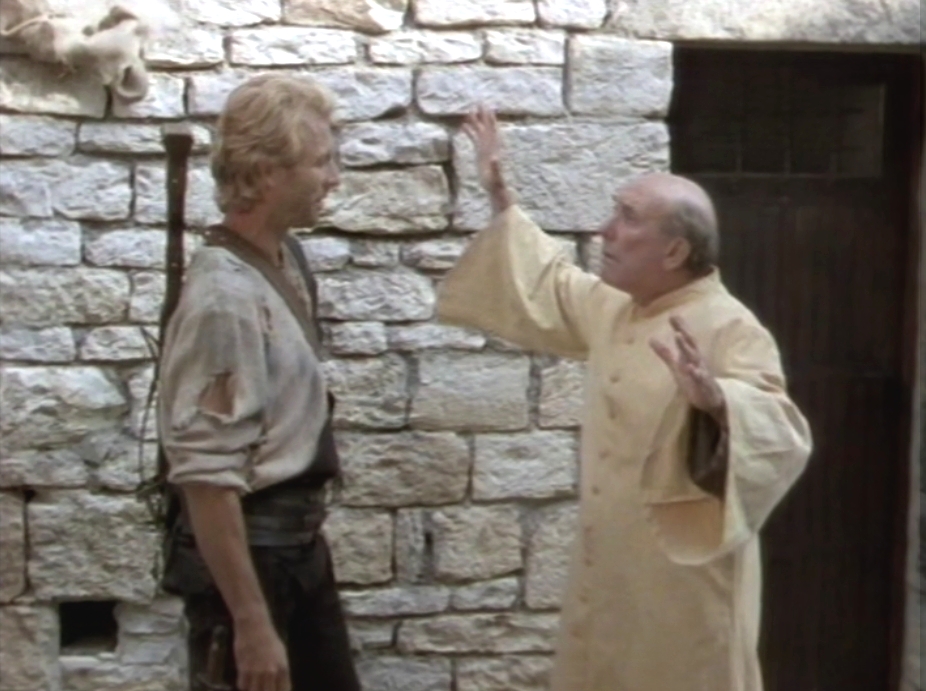
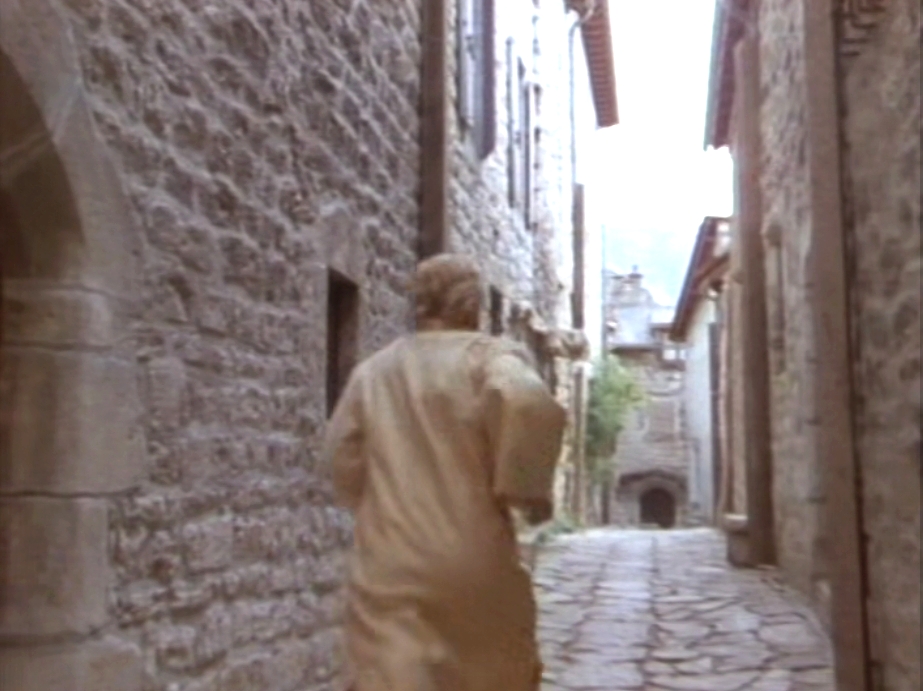
I don't have a picture of the door unfortunately, but it's the same spot On the left side
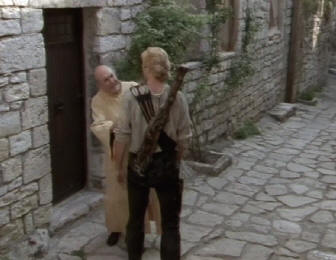
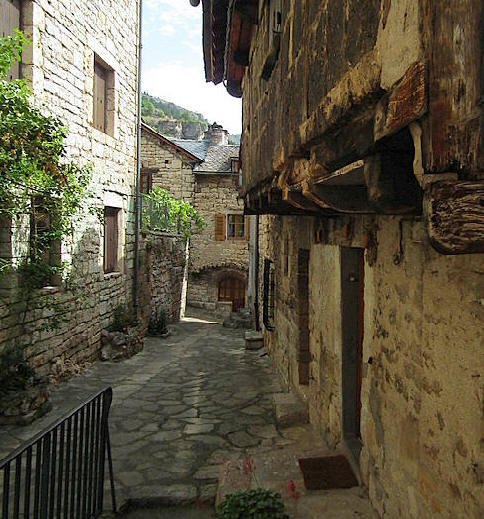
Shots of both sides of this street at 2019
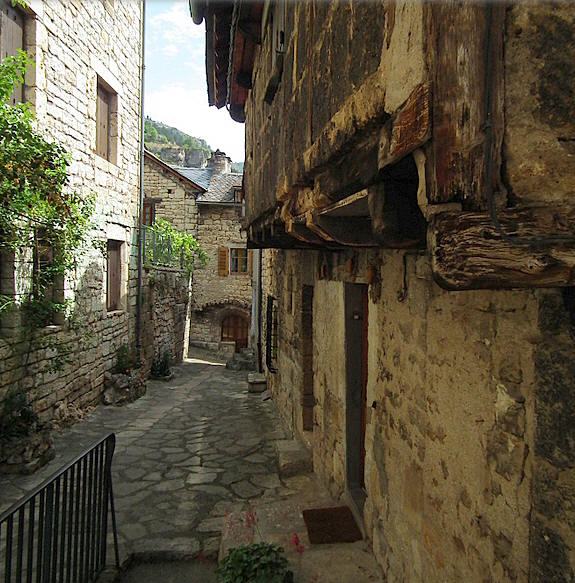
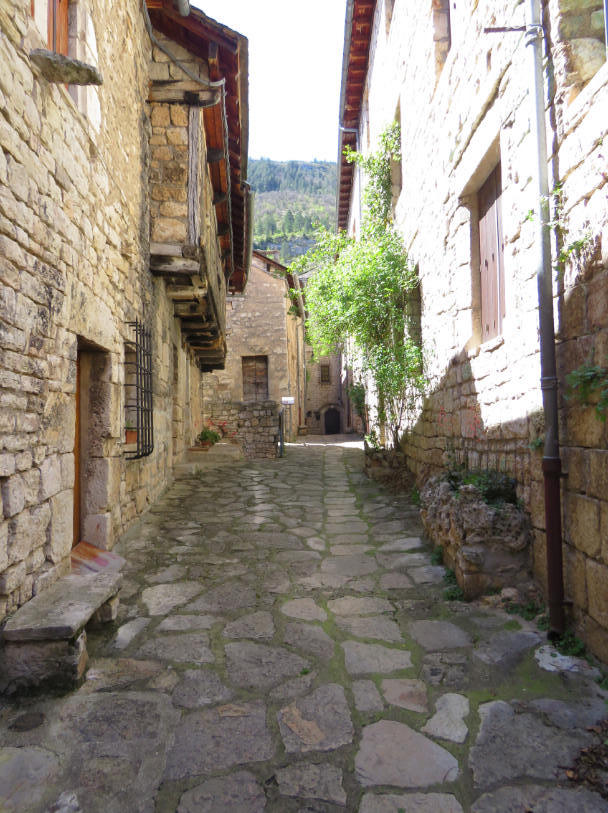
Same shots as above. In opposite of this street. At the end of the street you can see a different door.
Tell meets O'Grady (Zoomed out). Tell looking for O' grady, 1988 Shot from half way the street. The other side of the street scene, different door
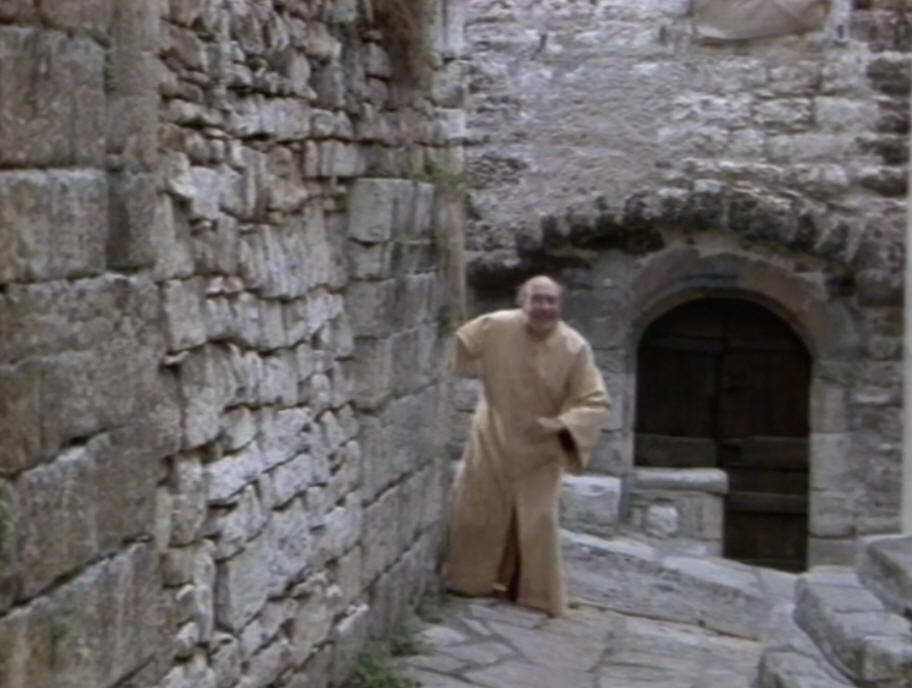
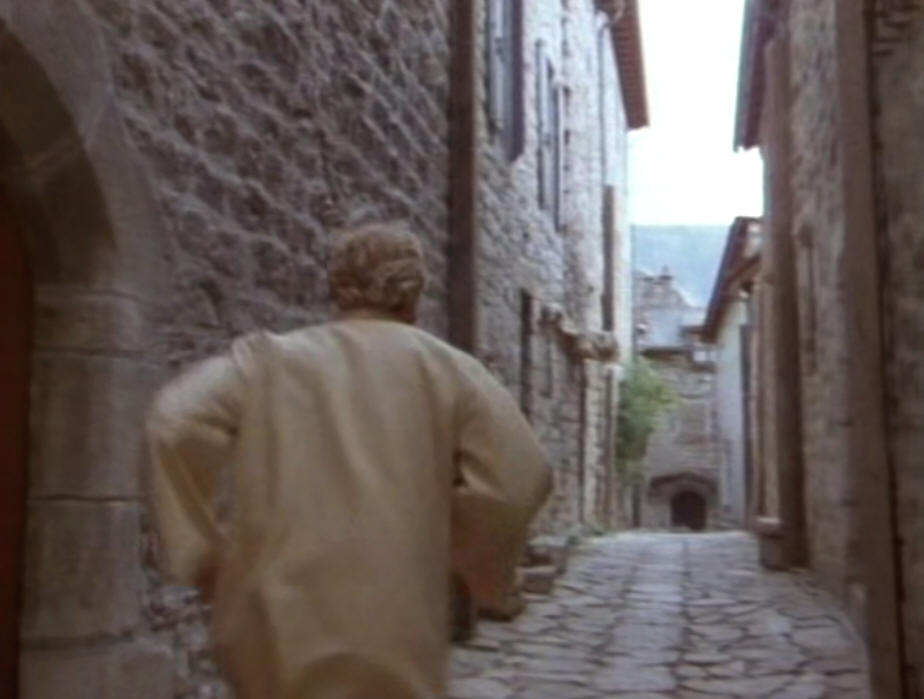


The alley
(which is attached (south) to rue de la Privadenche
|
|
|
The church of Sainte Enimie
Inside the building you can admire wood and stone sculptures dating from the 12th and 15th centuries. Listed as a historic monument, it reveals an interesting Romanesque style.
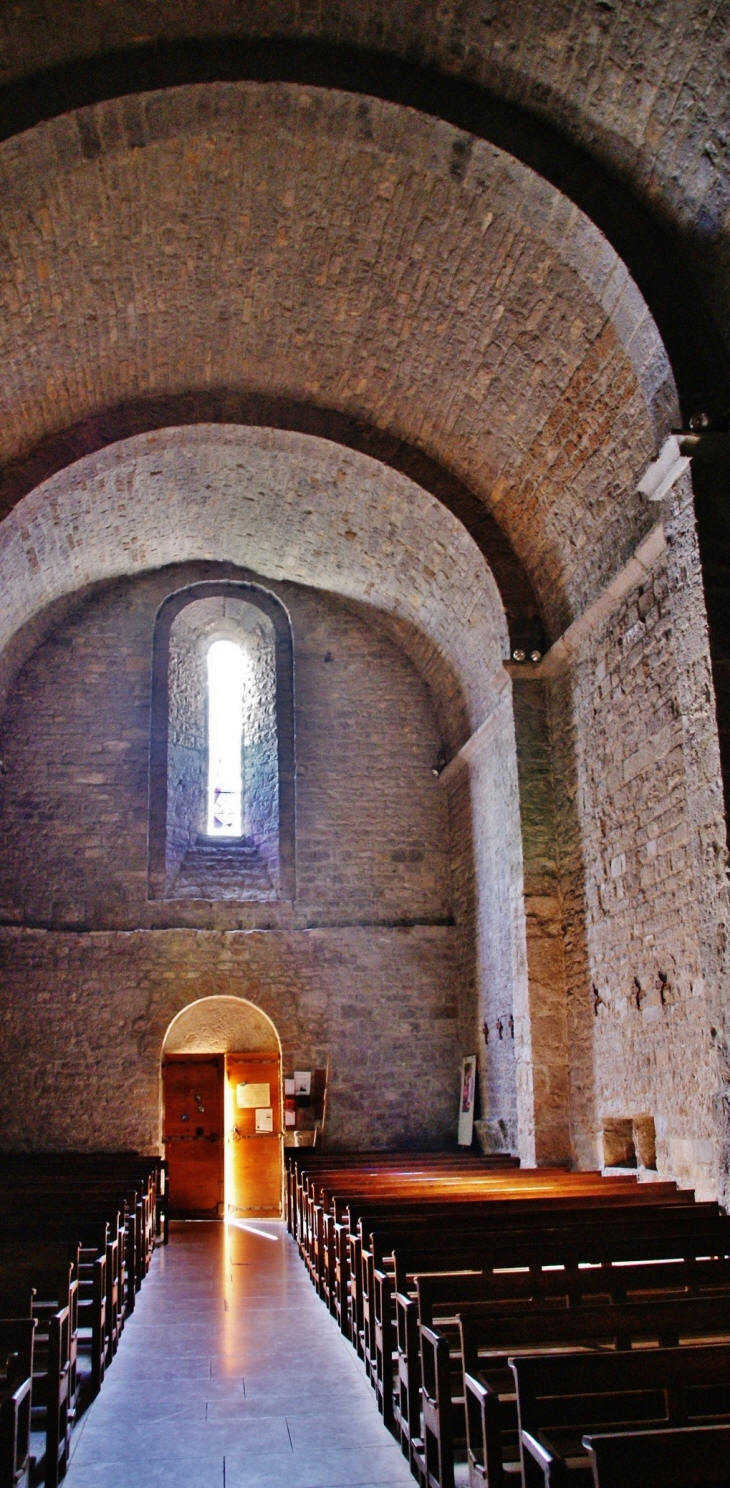
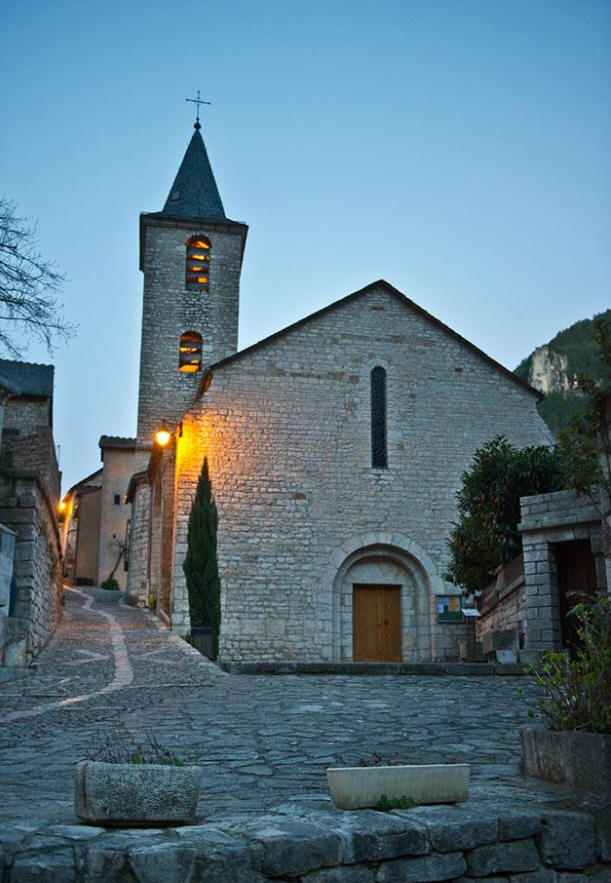
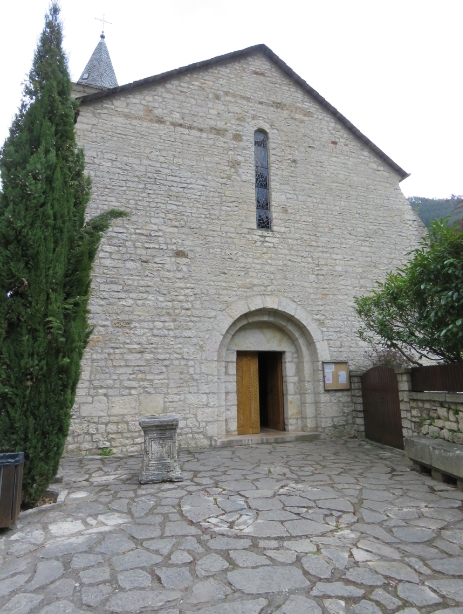
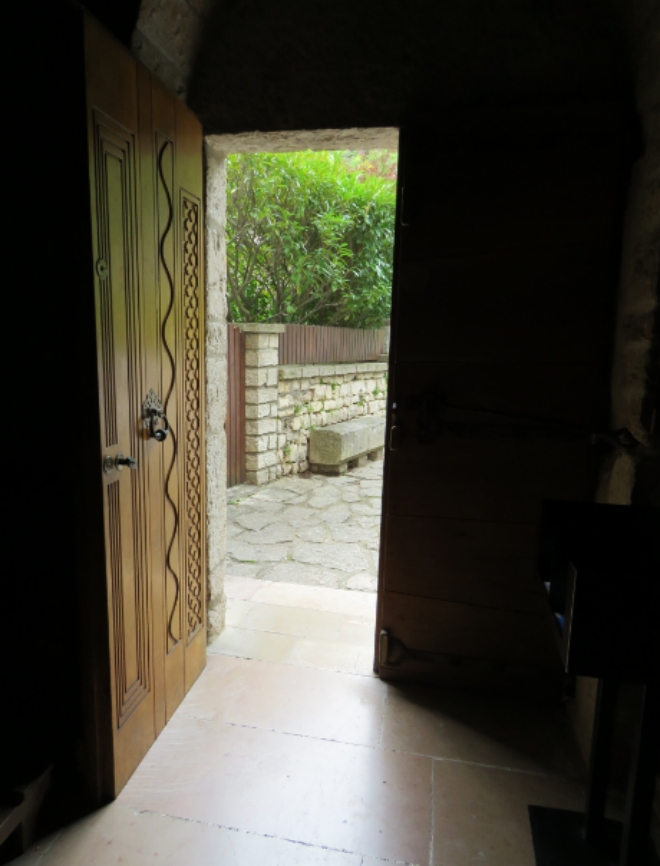
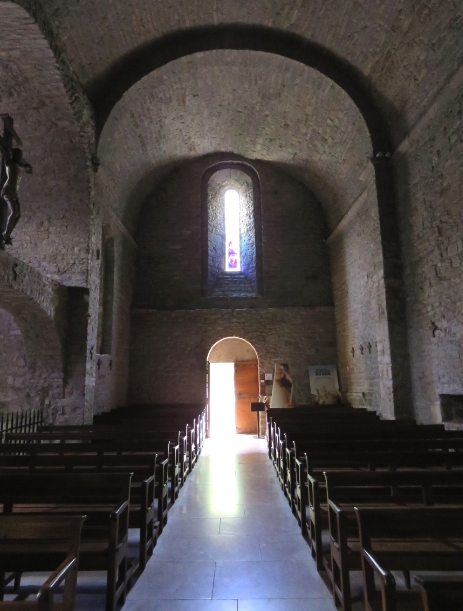
1988 2017
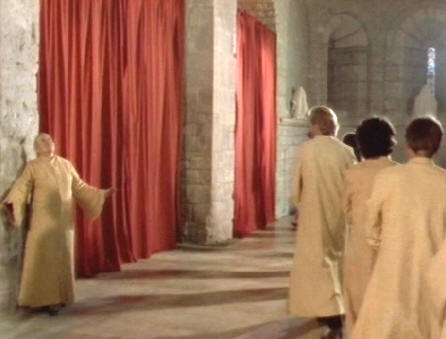
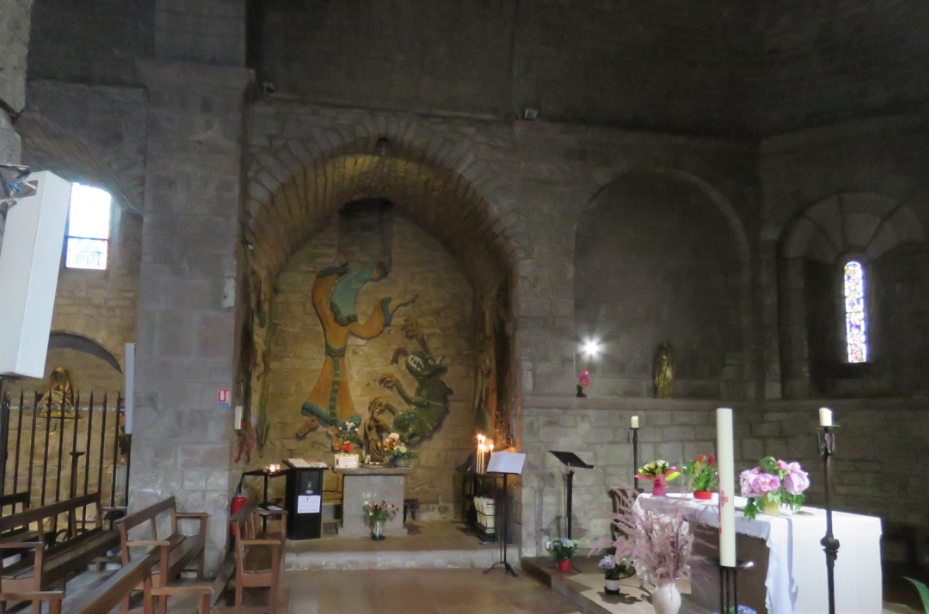
1988 2017
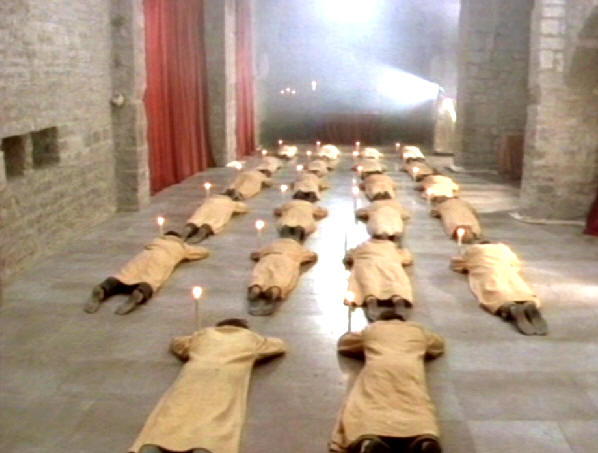
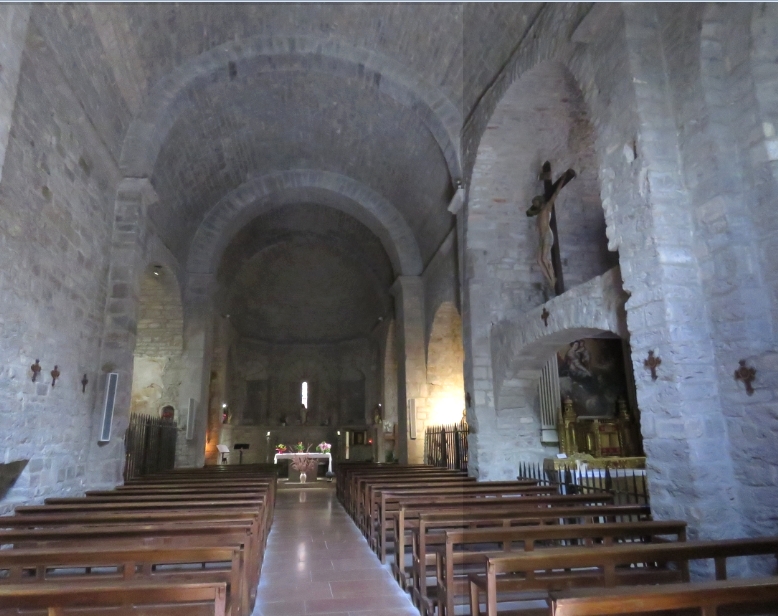
Tell enters a spelled world Mona The church in opposite


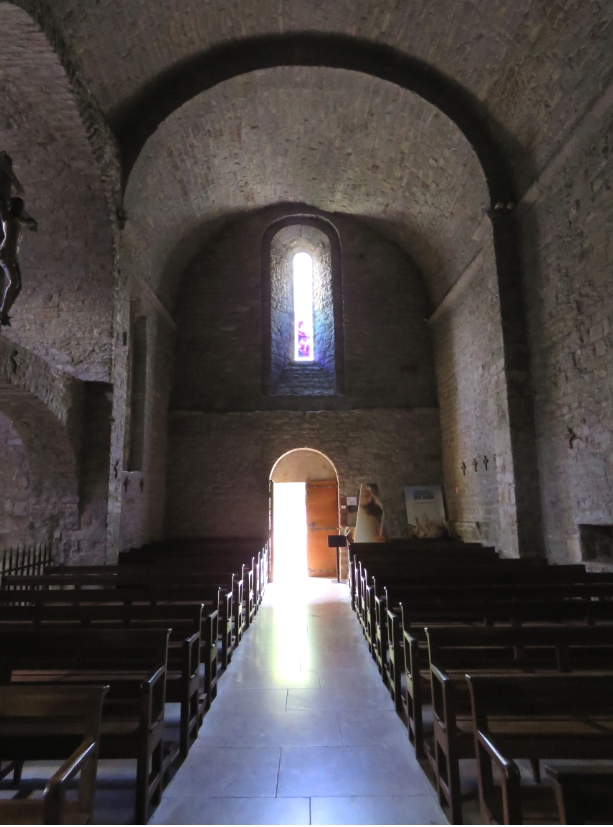



1988 2016
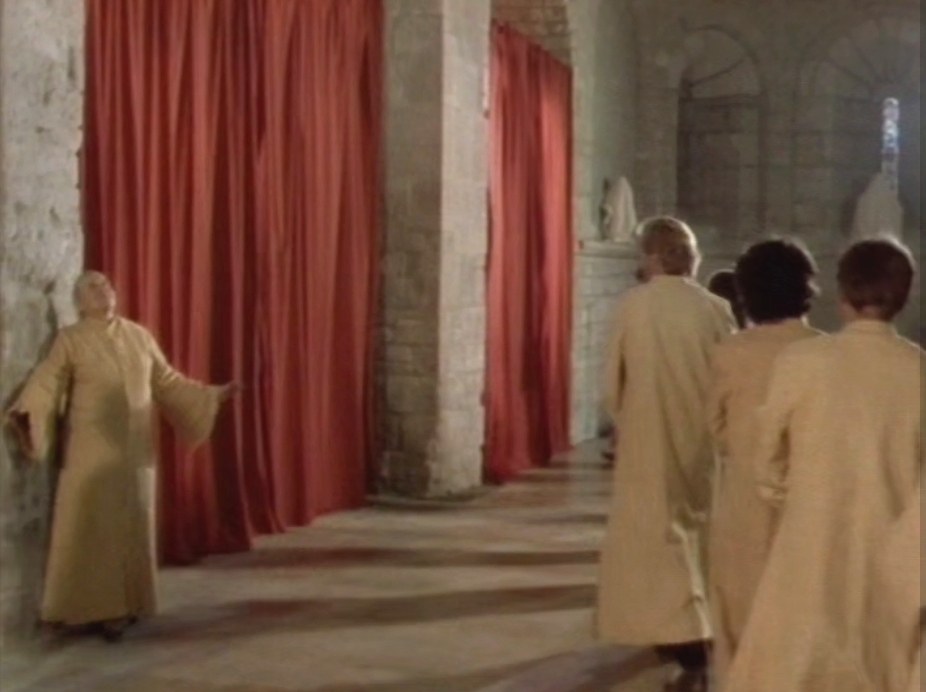
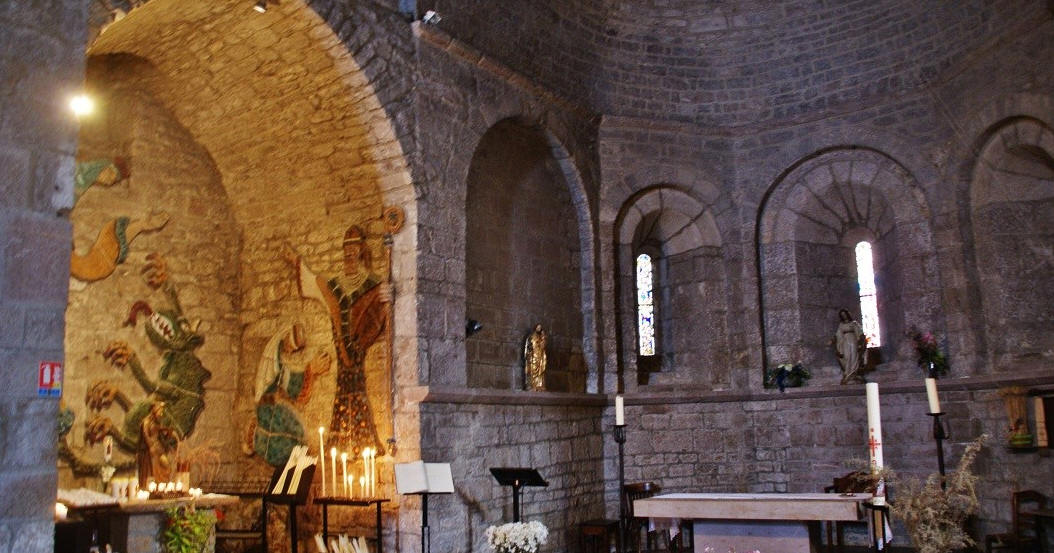
|
They covered the statue
|
|
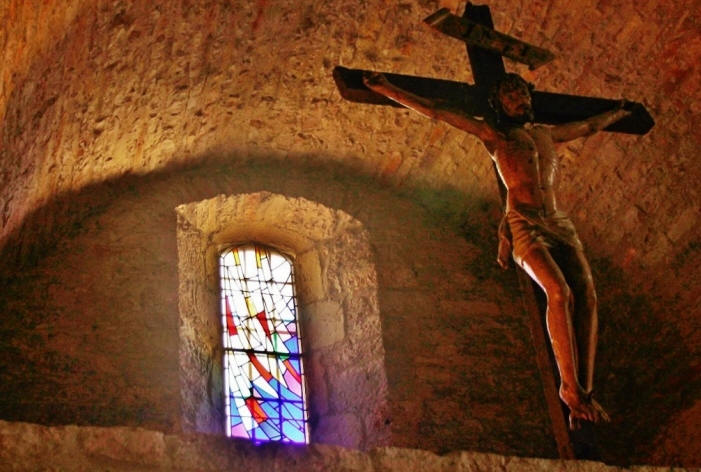
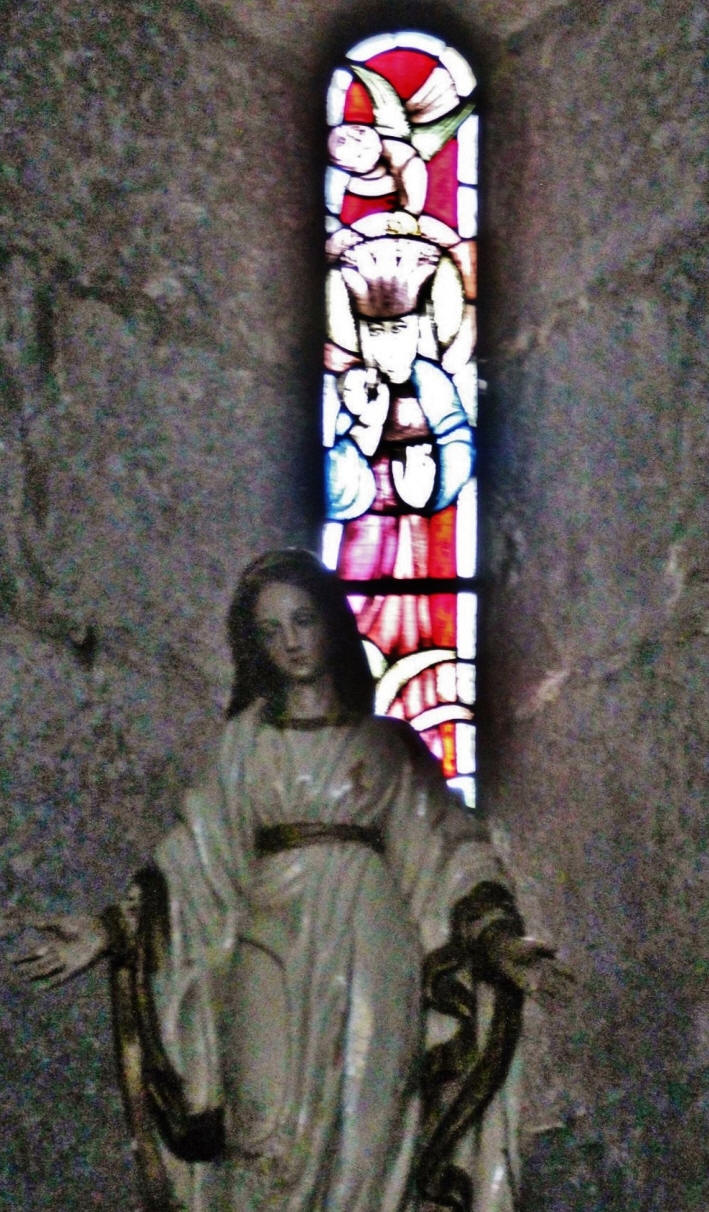
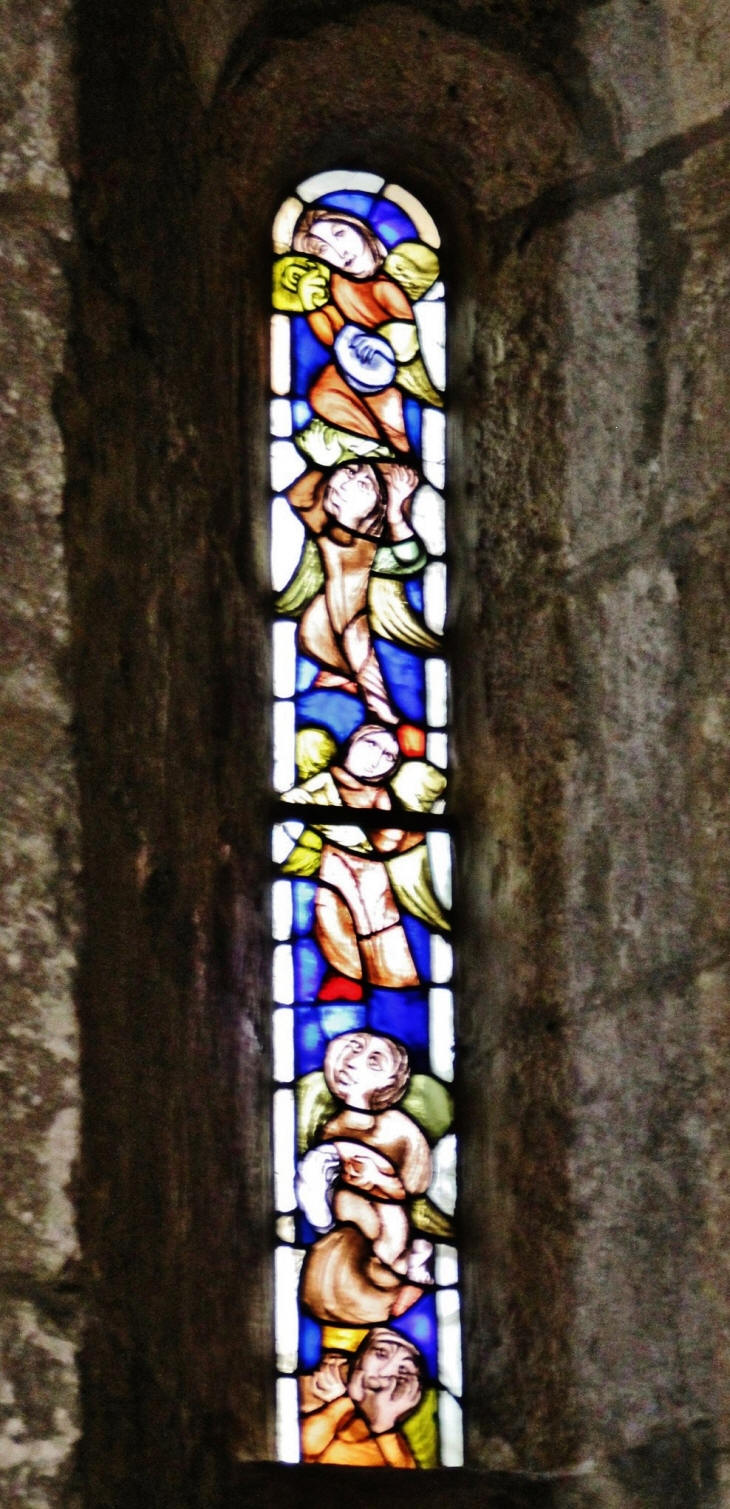
The monastere of Sainte Enimie
Salle Capitulaire
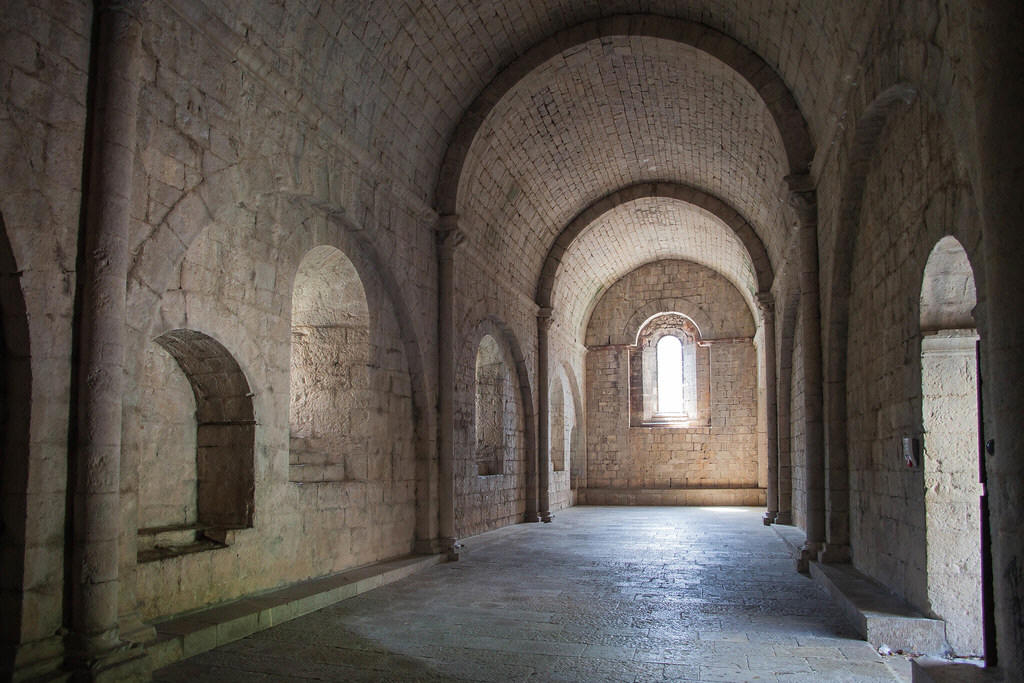
First I thought these shots were made in the church, but the background is different. It's Salle Capitulaire in the monastery of Sainte Enimie.
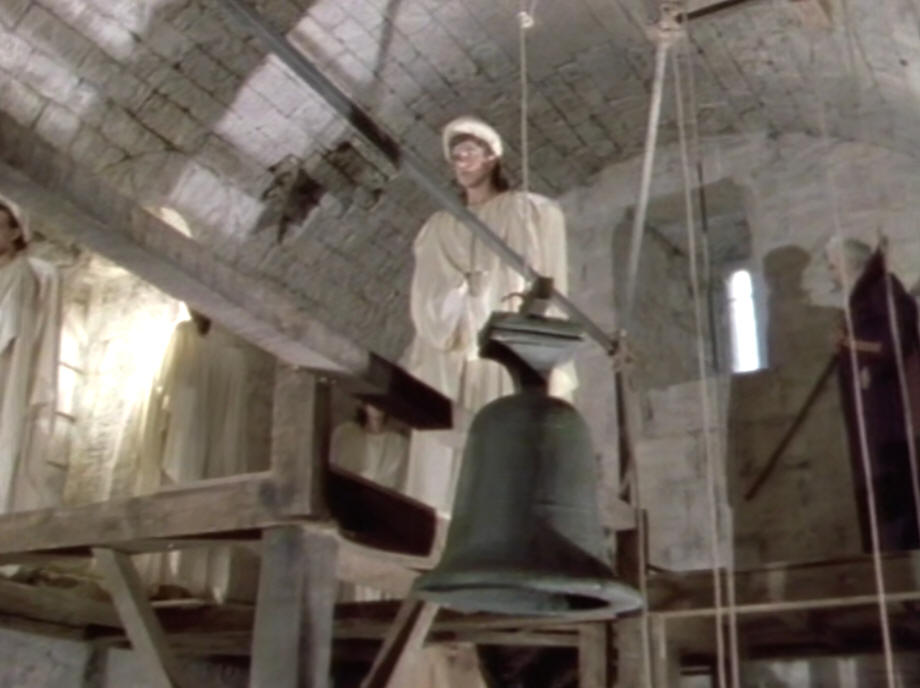
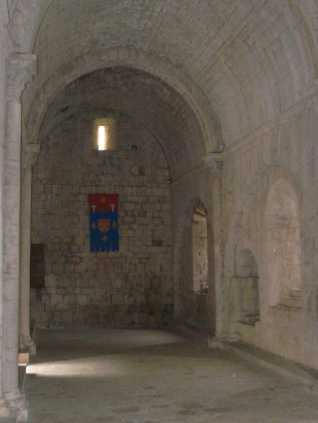
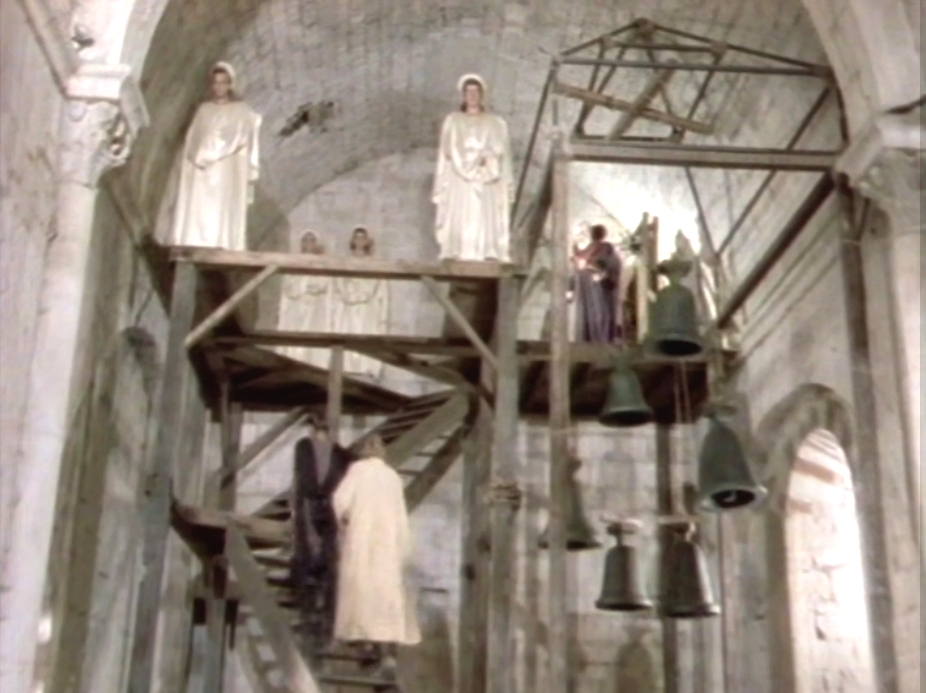
1988 2015
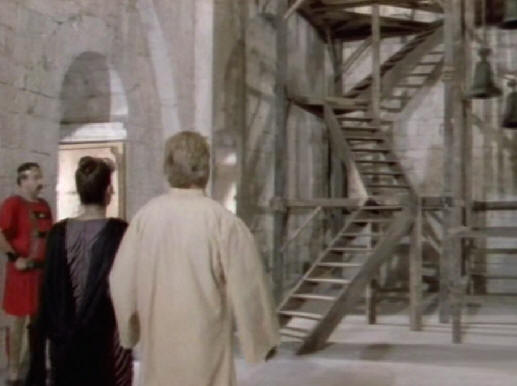
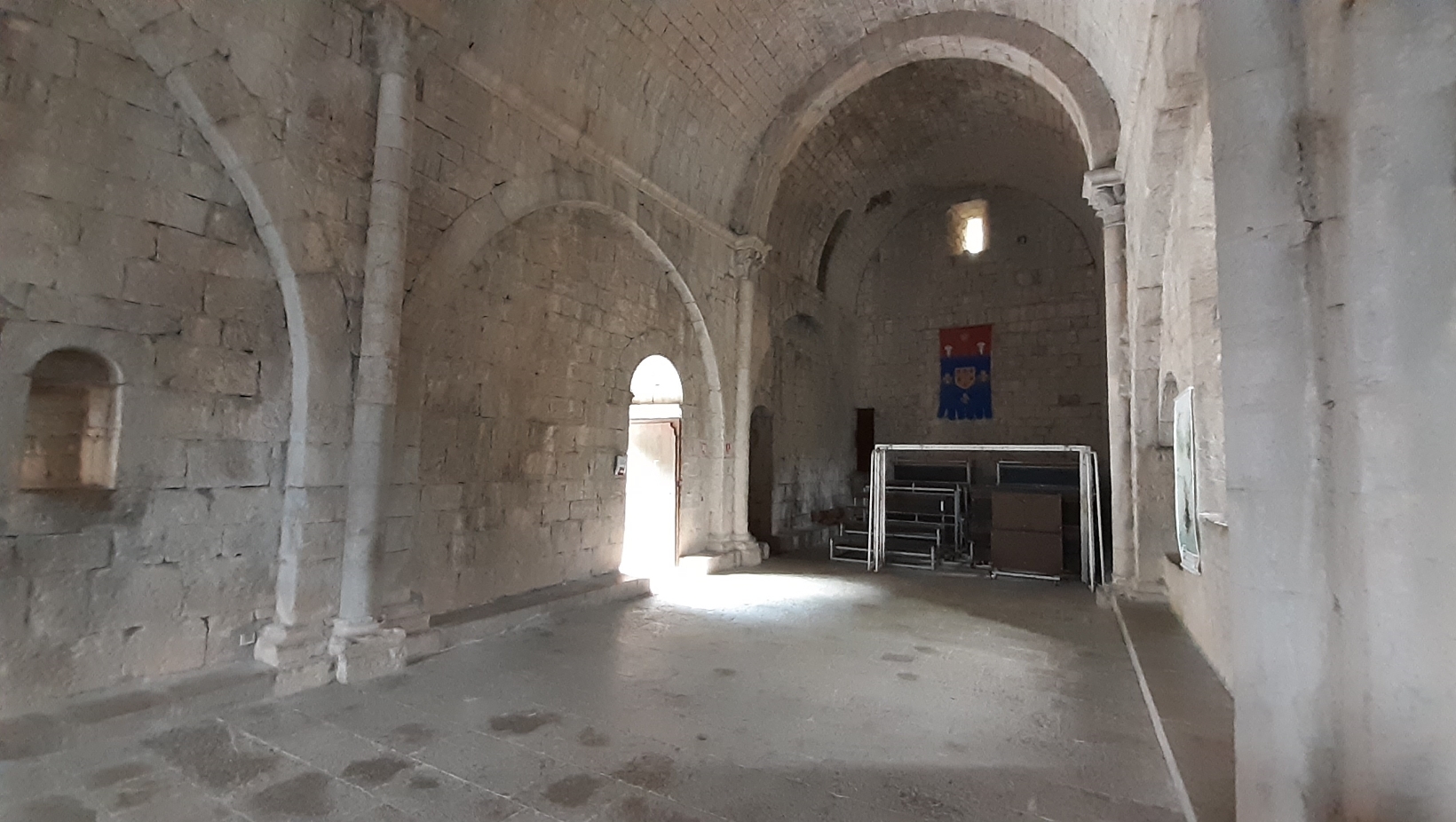
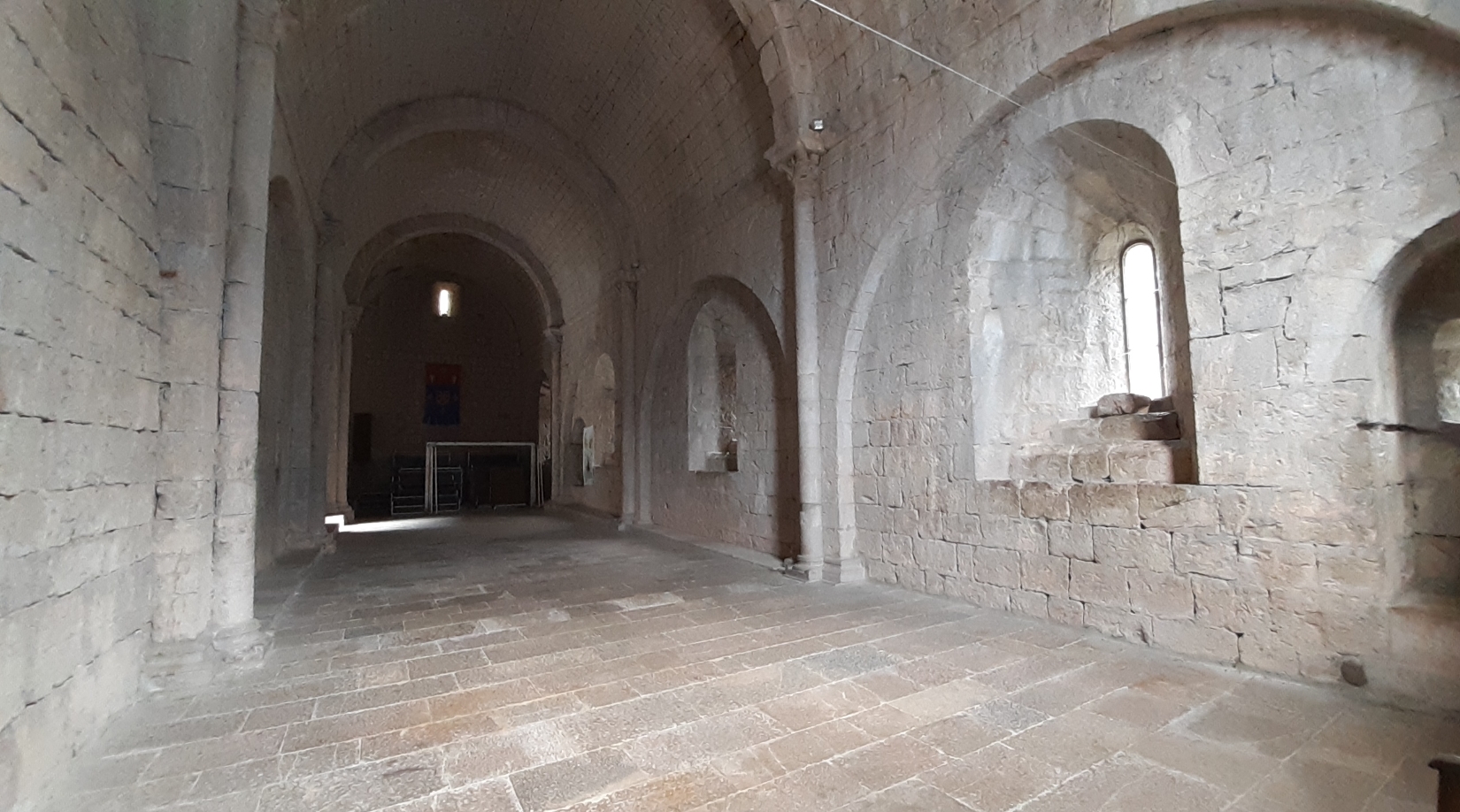
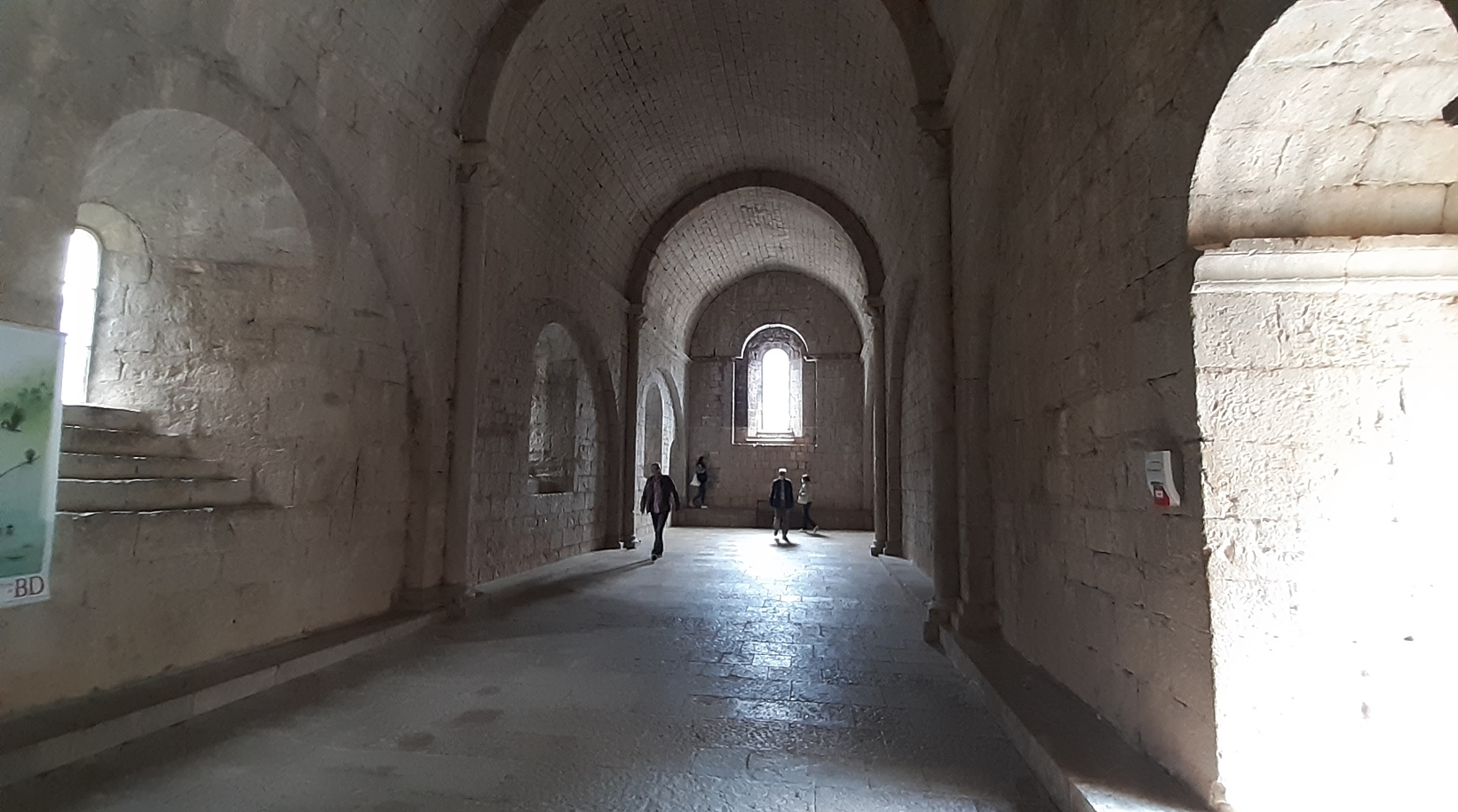
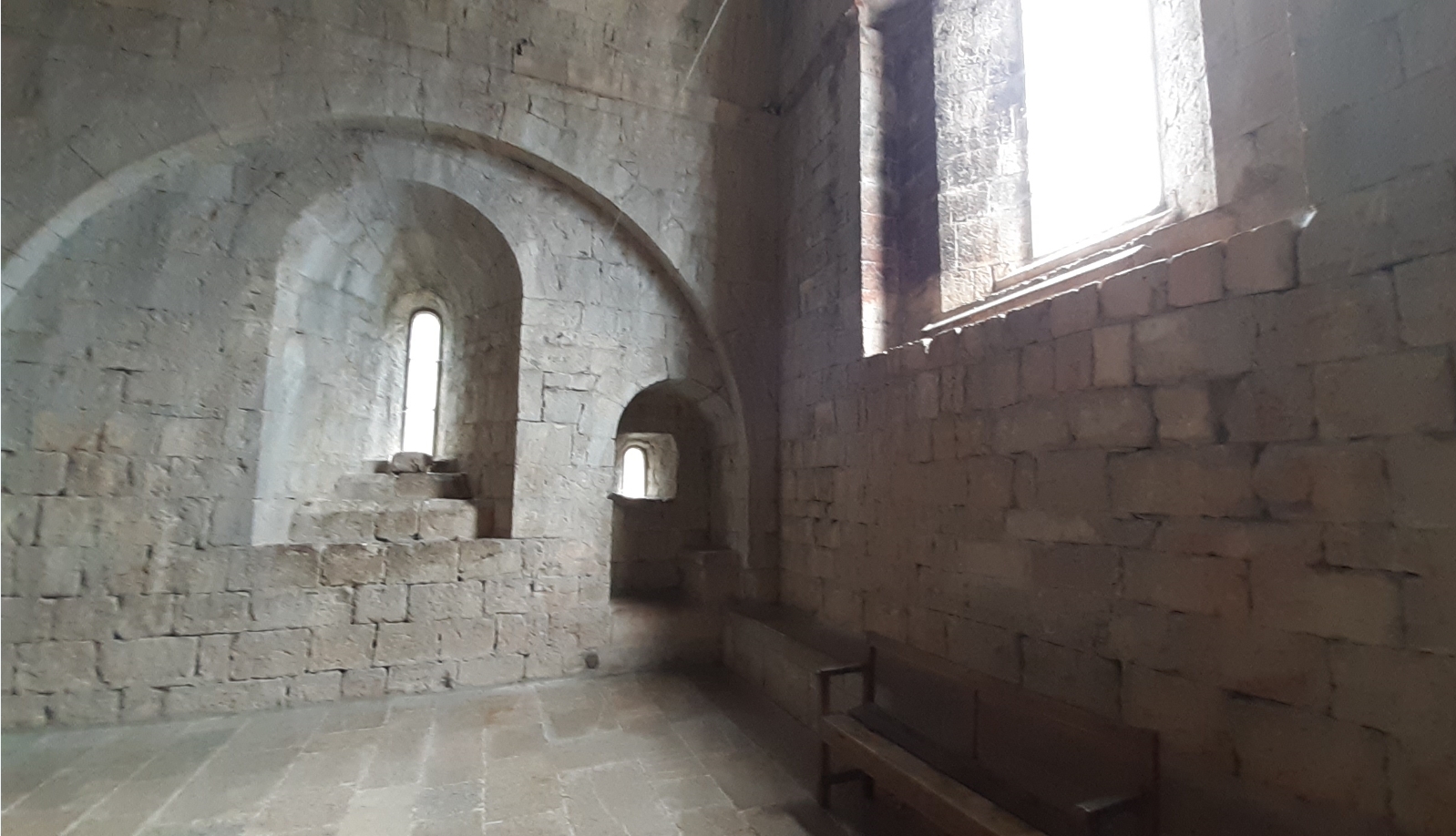
The other side of the Salle Capitulaire. This side has a larger window.
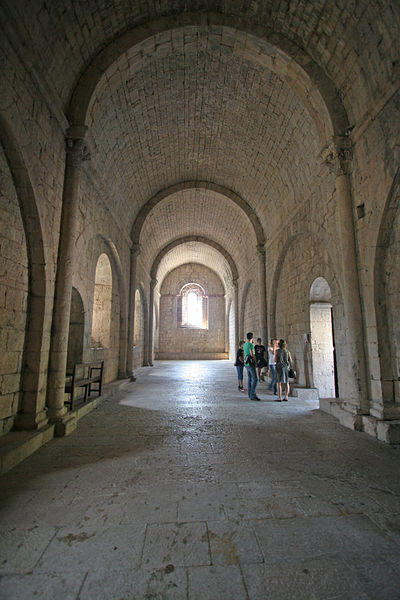
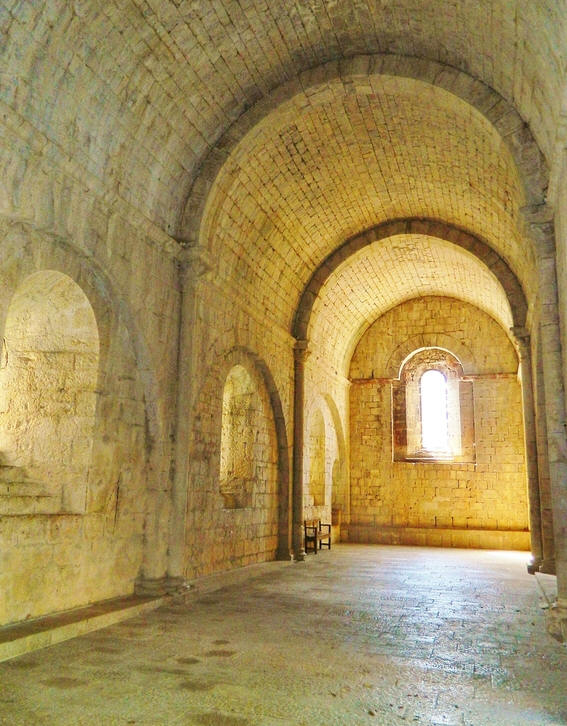
Prison 'O Grady
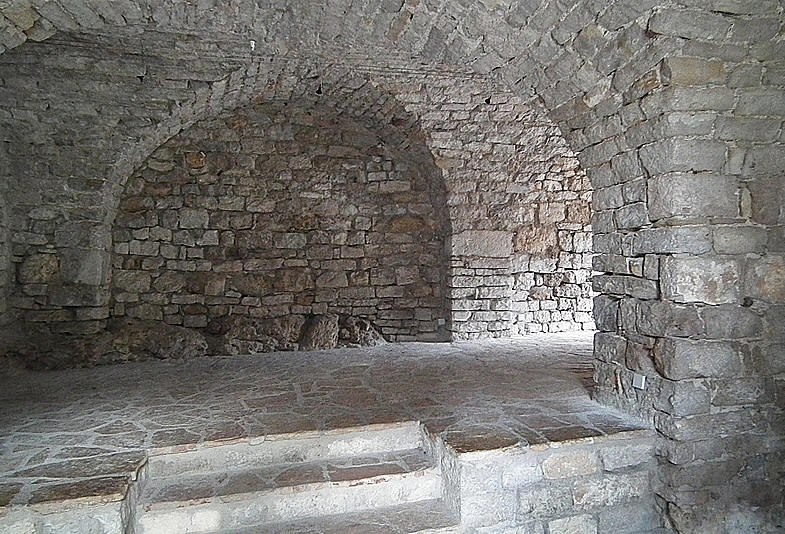
1988 Probably in the monastere of St. Enimie or an ancient house. Recently
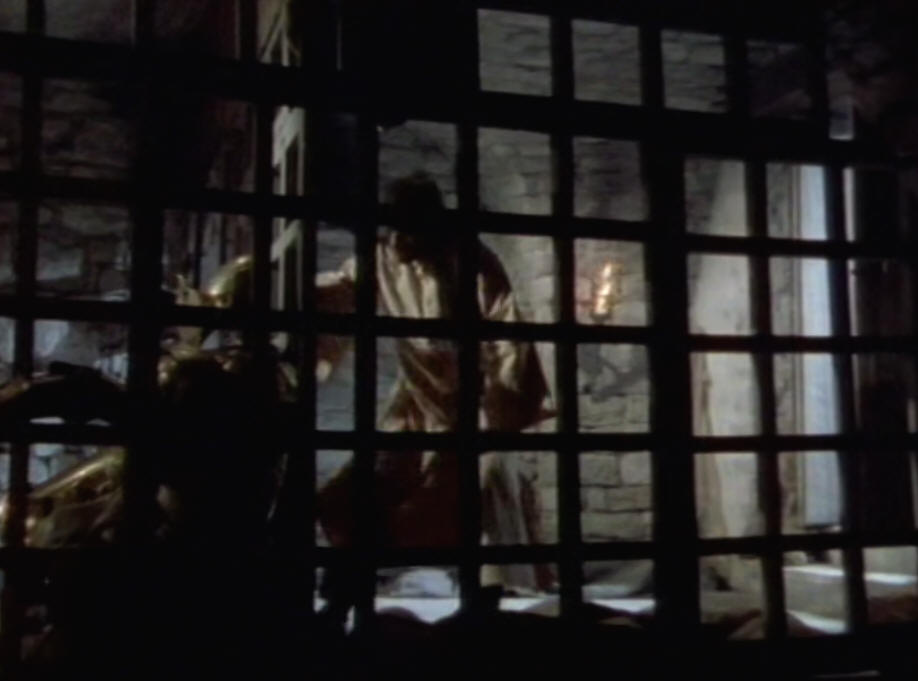

1988 Unknow place yet, exit O'Grady and tell took The entrance of the 'prison' place
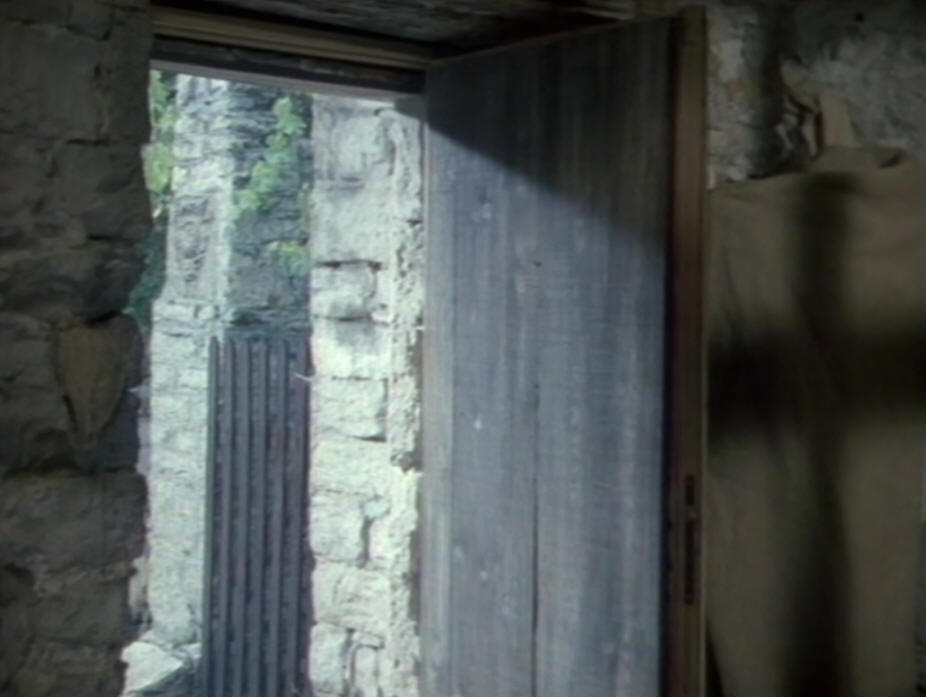
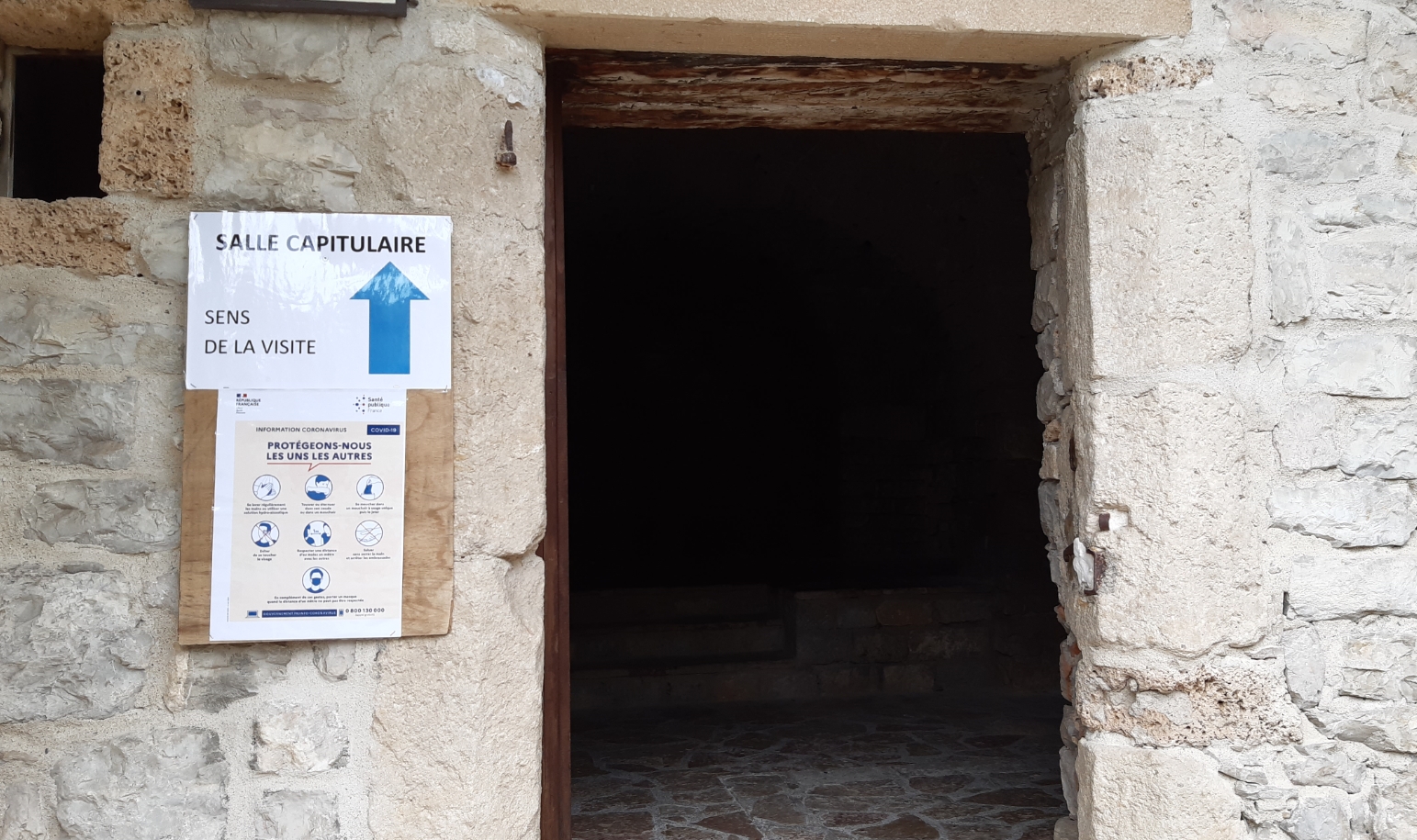
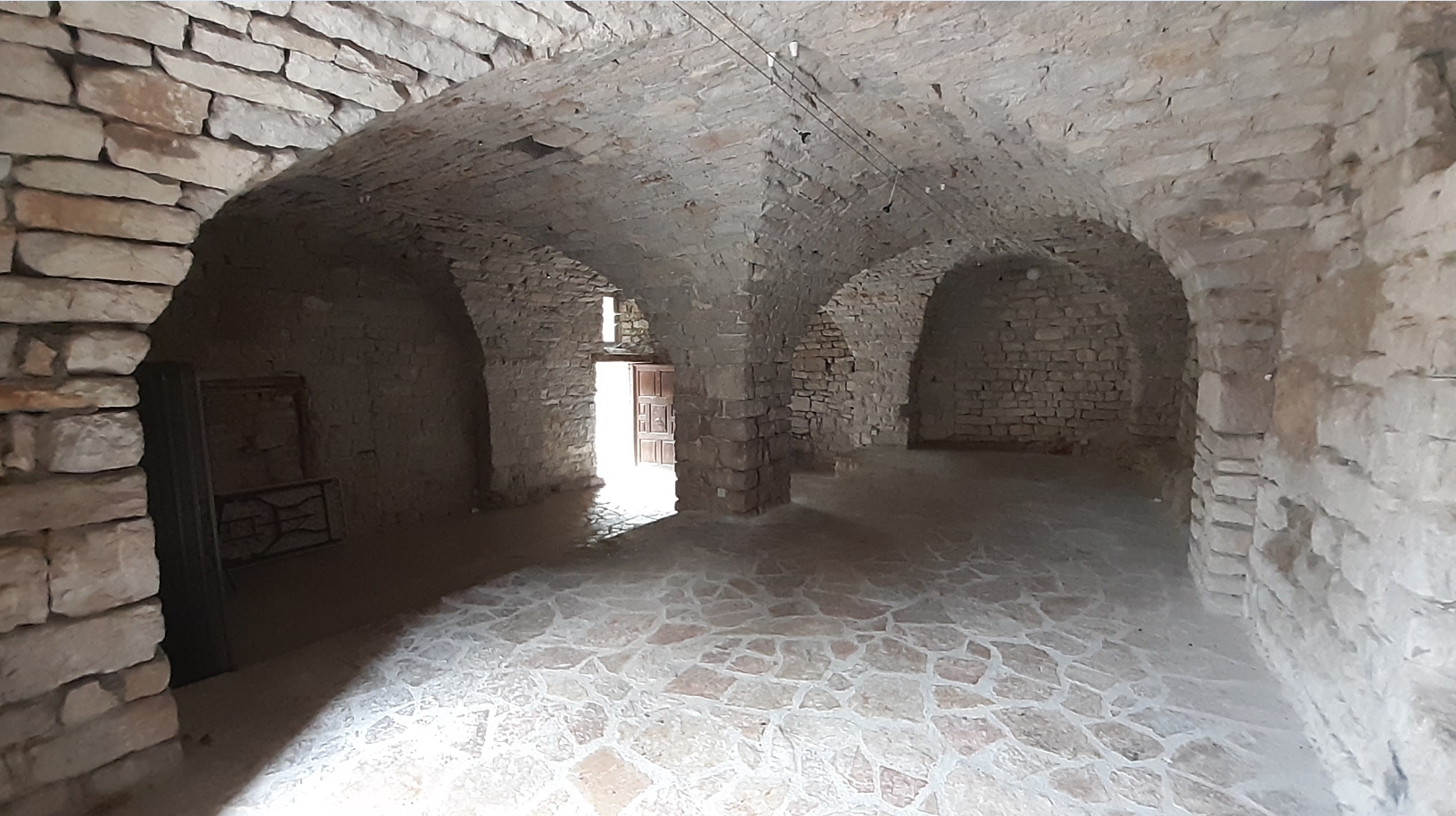
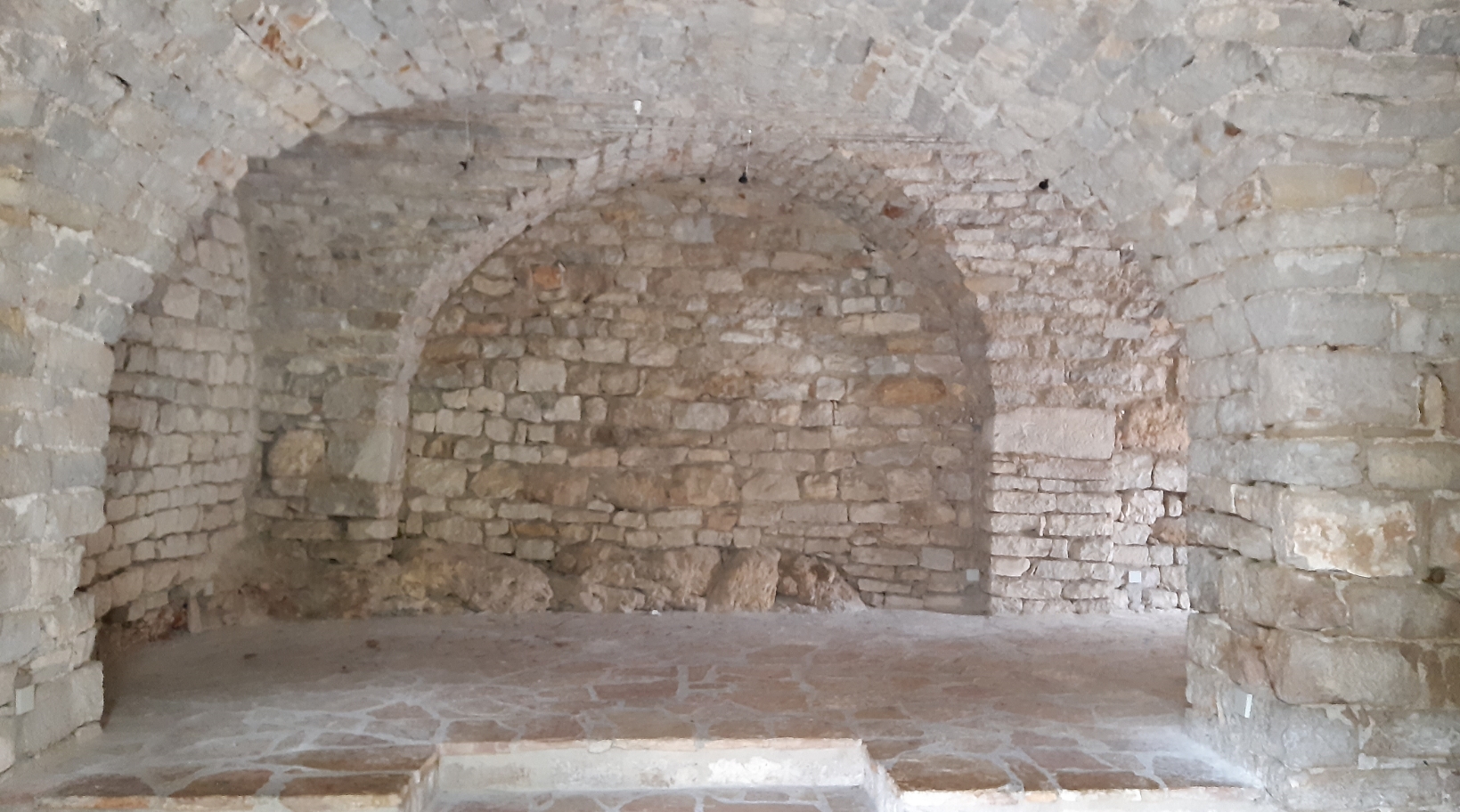
Photos of the monastery
Of the old abbey, the fortified monastery of the Benedictines, only three rooms remain today: the entrance, the crypt and the chapter house. Founded in the
6th century, it is classified as a historic monument. The following four photos are shots from the monastery. I haven't found the exact place, but it won't be far.
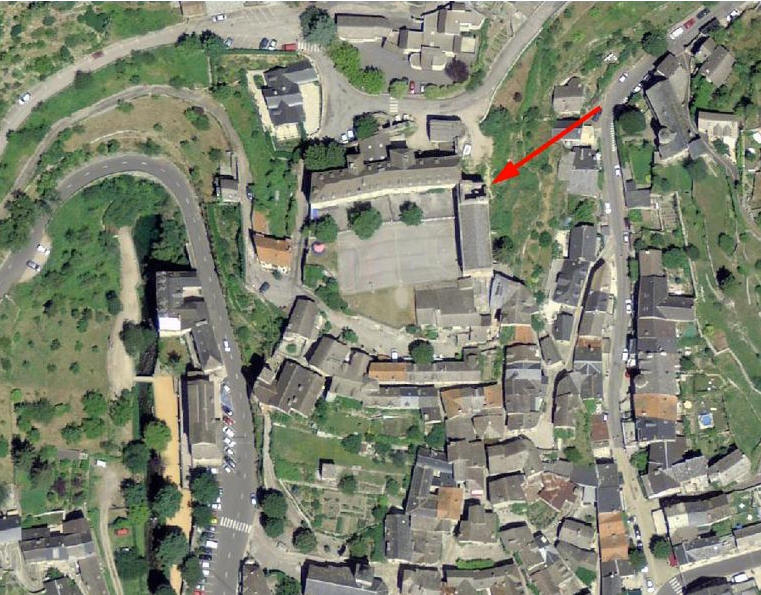
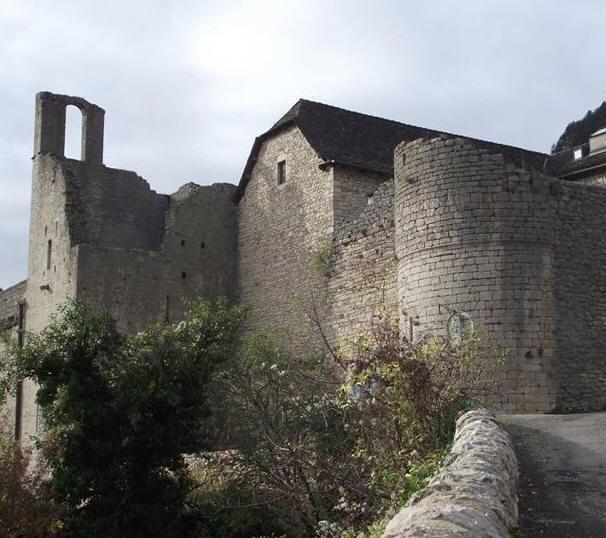
Leaving prison (right picture) haven't found the exact spot. If somebody recognizes this?
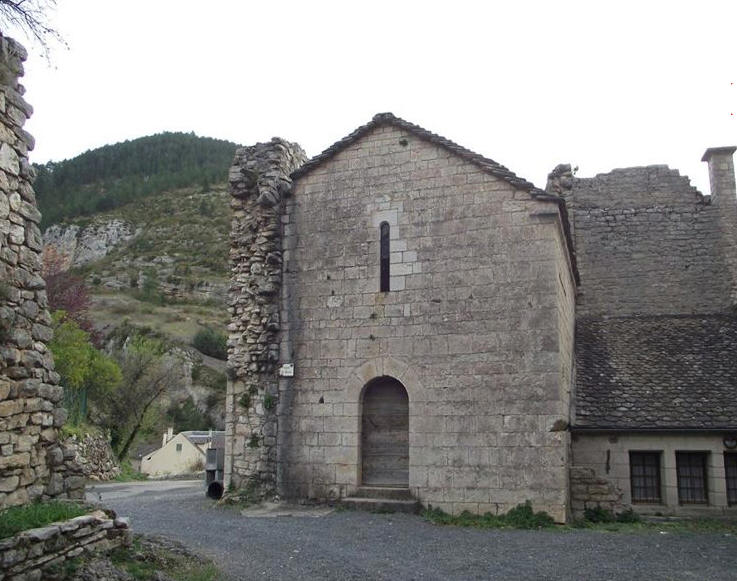
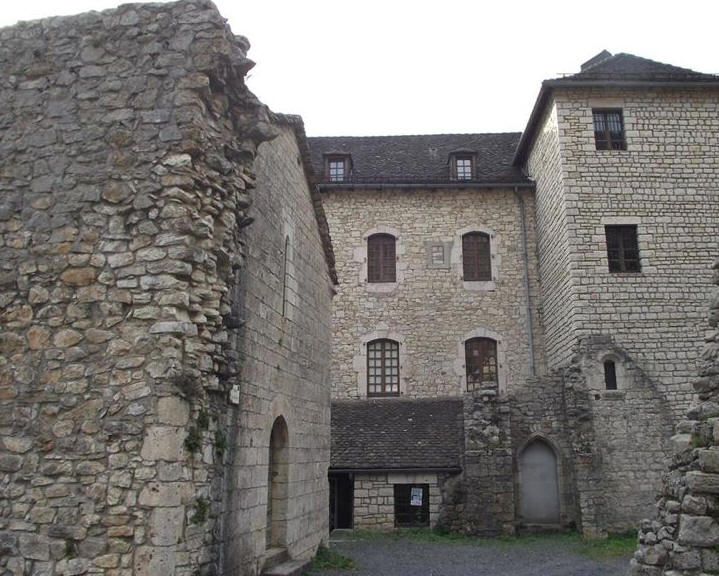

1988 Scene: searching for O'grady and Tell 2019 2019
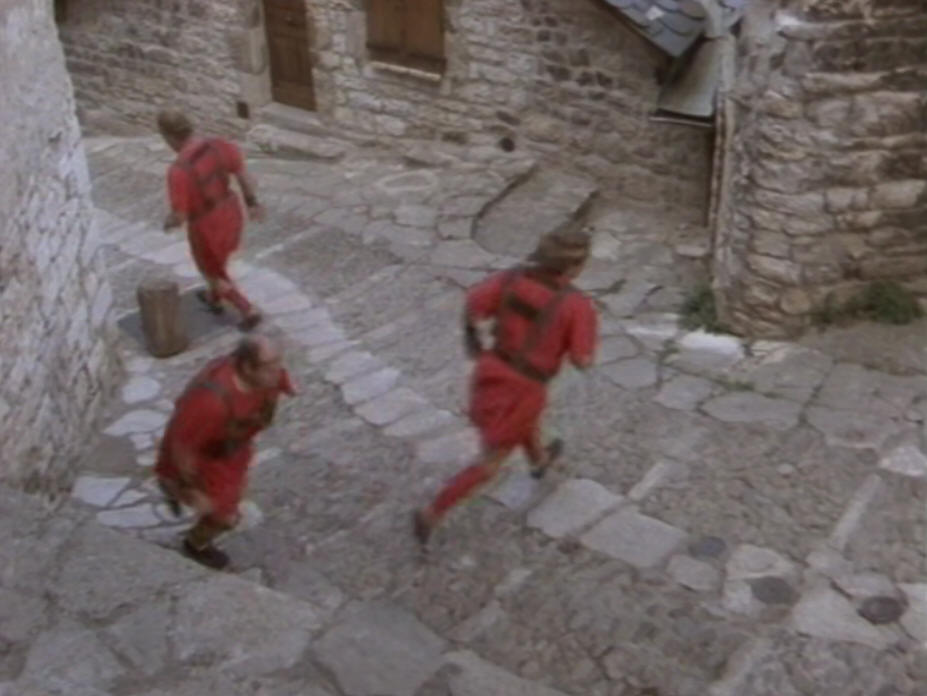
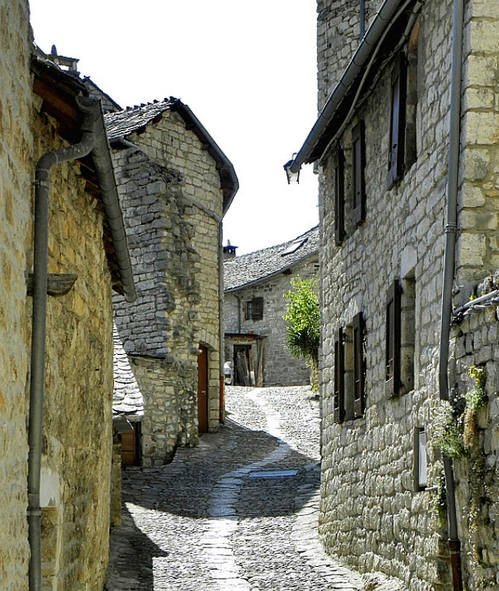
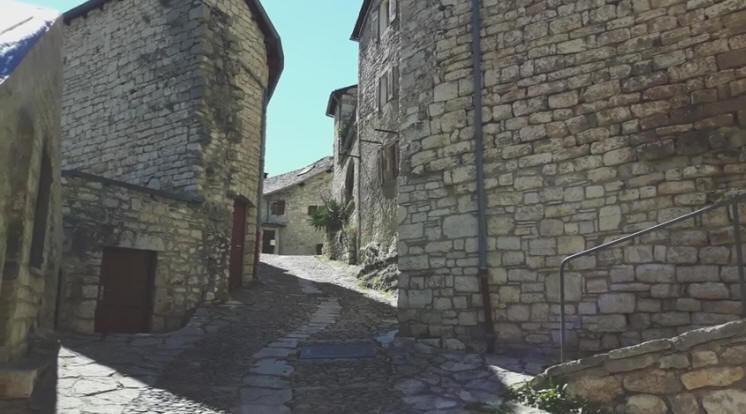
Screenshots of places in Sainte Enimie we haven't discovered yet
I was so absorbed in the history and beauty of the village that I sometimes forgot to pay attention to some locations. If people have recent photos of the shot below
and like to share them, please mail them. (It's about the six photos below and the prison).This shot of the door seems very light while the prison scene is very dark.
The left photo can be only a short shot. Is this place the prison cell? Crossbow is too often divided into several locations.
Perhaps the place below can be the location you can see above. It can be in the monastery as well. There aren't that many pictures of it.
I haven't discovered where Tell enters this door. It can be the same place of O' Grady's prison cell. Hard to recognize.
I think this can be the place (William enters the door) in opposite...
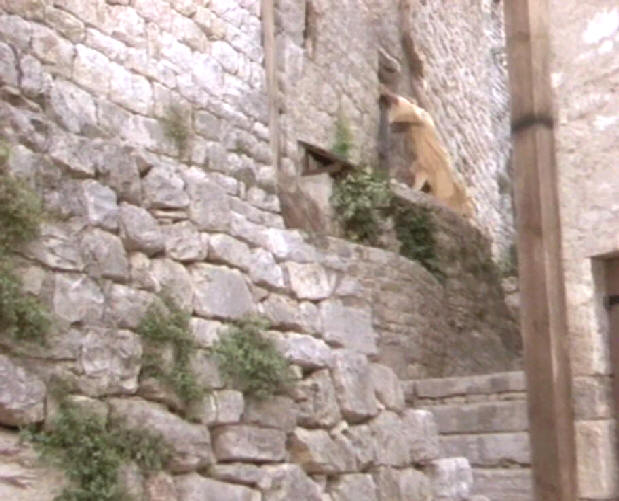
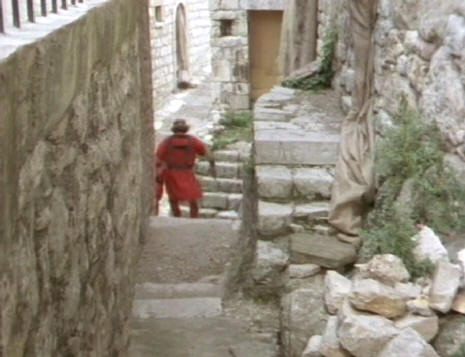
The scene of the sheets
The street below was covered with white sheets, behind Tell is the house with the blue shutters.
|
|
|
1988 I do not have the same photo. 2019
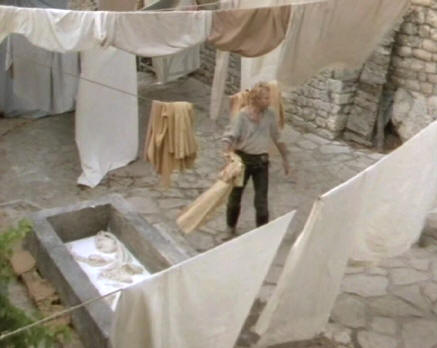
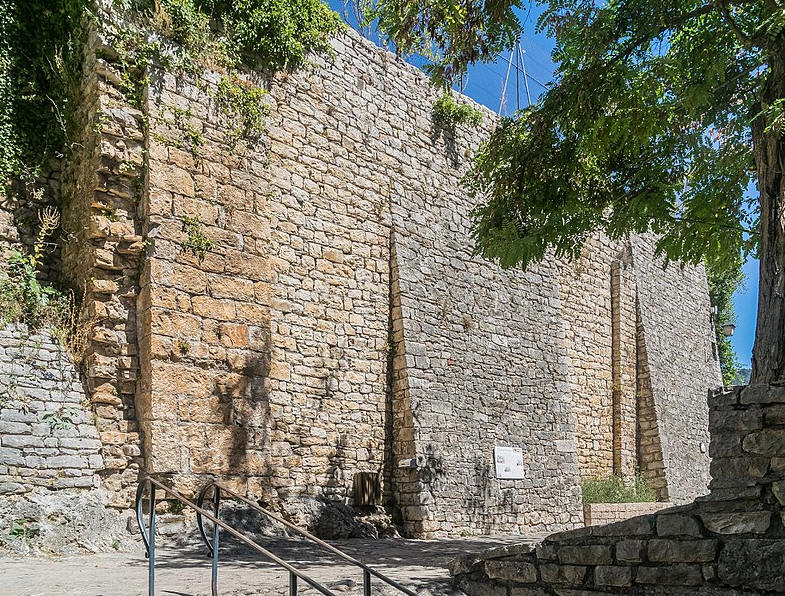
1988 2019
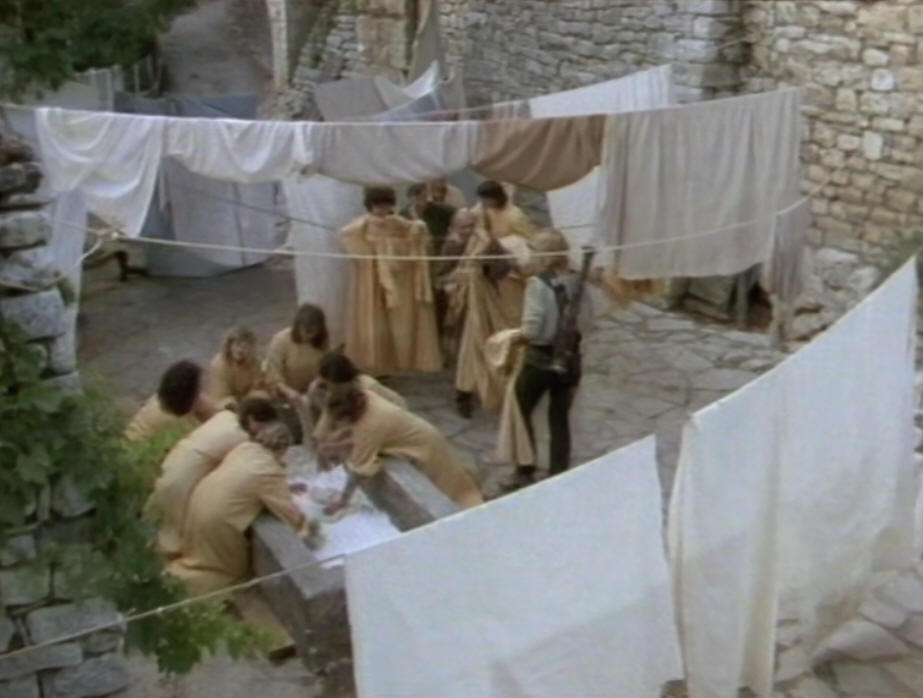
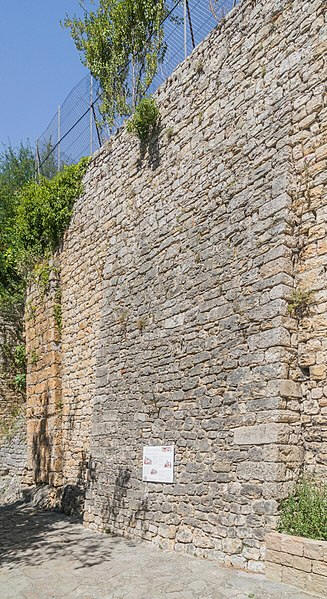
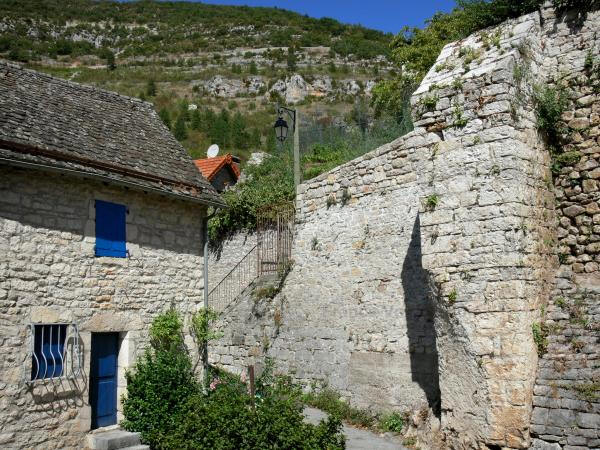
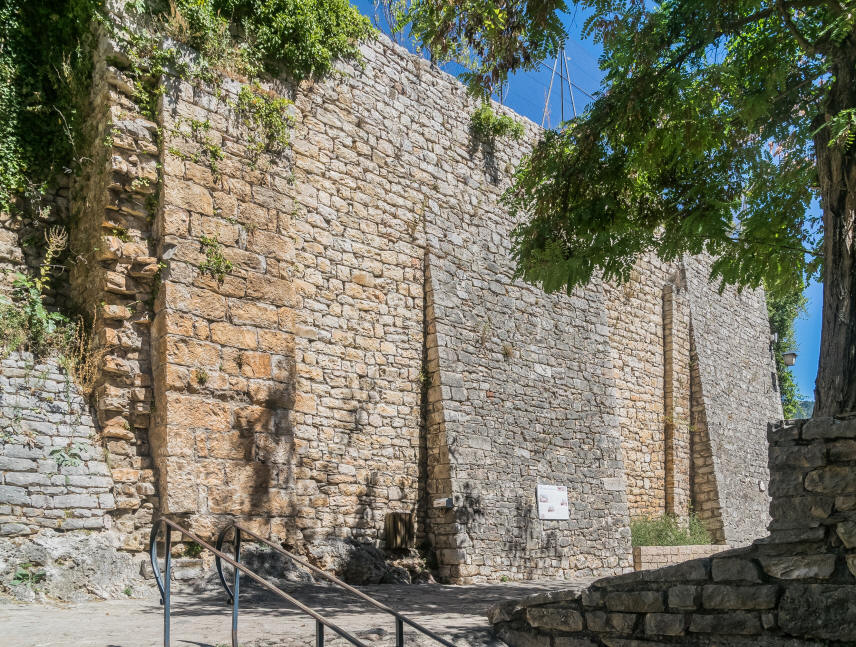
Extra photos of the village of Sainte Enimie
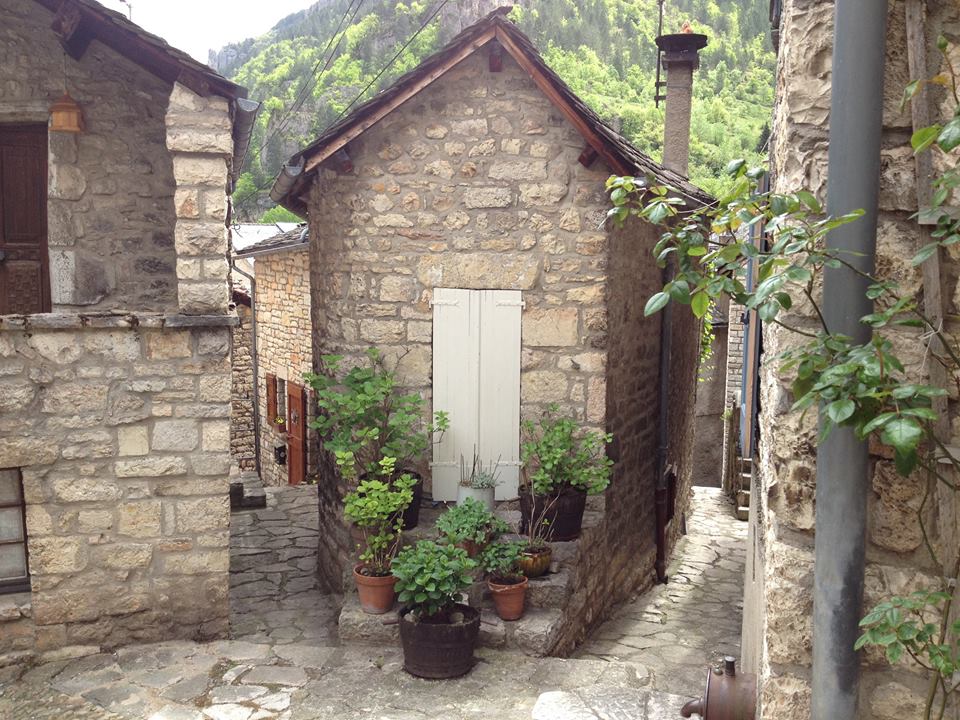
You will come across old houses, a corn exchange, a church (host to wooden statues from the period between 12th and 16th centuries), ramparts and arches... The walk is
charming and along the way you could even come across historical reconstruction showing two armed soldiers in action or a maid hard at work. Do not miss the view from the
hermitage and make sure to walk to the Burle’s spring, which is one of the most beautiful Vaucluse wells in France. Sports enthusiasts can canoe down the Tarn river to the
Malène and further. If you are looking for a fresh water swim, Saint-Chély-du-Tarn’s beach awaits you a few kilometers downstream (at the foot of the bridge, once you have crossed it).
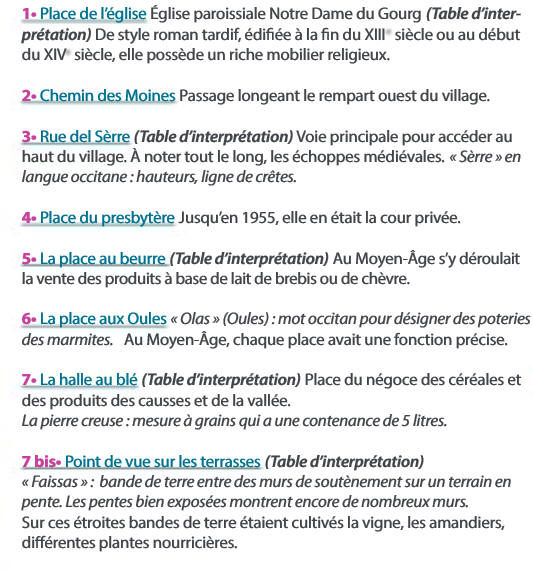
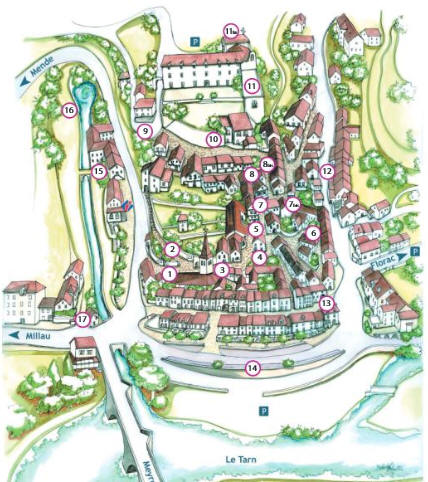
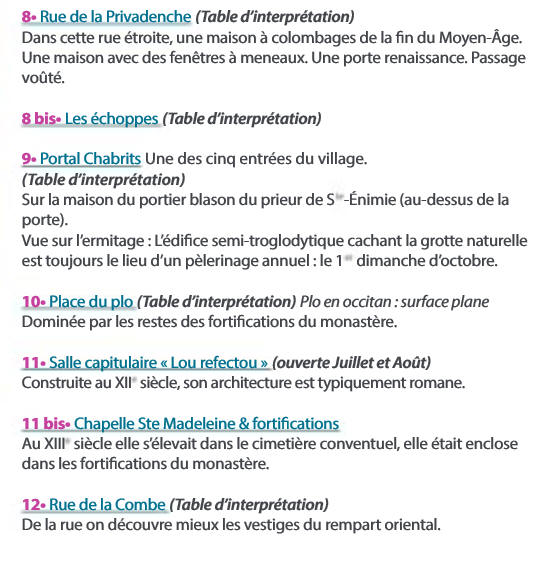
Sainte-Enimie is a former commune in the Lozère department in southern France. On 1 January 2017, it was merged into the new commune Gorges du Tarn
Causses. It was founded in the 7th century by Énimie, who started a convent there after being cured of leprosy in the surrounding waters. It was the site of
several monasteries, some of which still remain. Located in the Gorges du Tarn, it is a member of Les Plus Beaux Villages de France association.
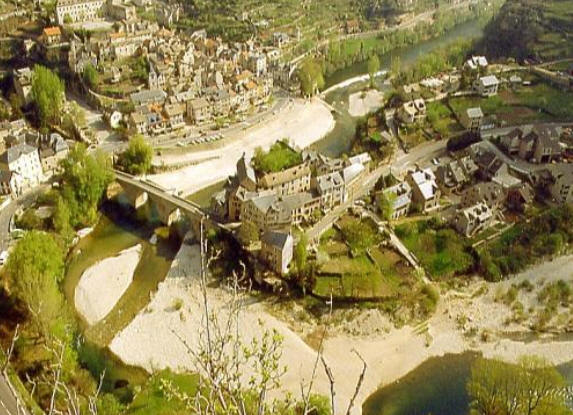
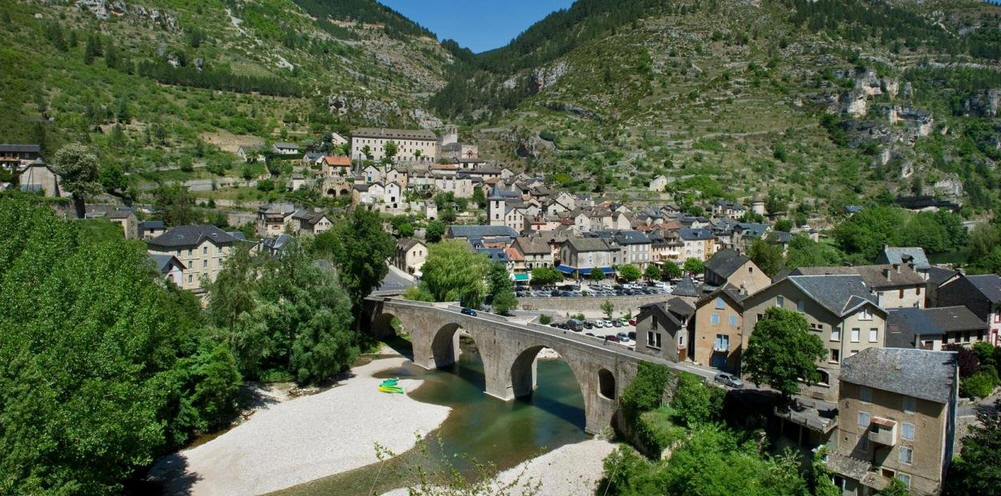
History
The town is named after Énimie, who, according to a 13th-century poem by Bertran Carbonel troubadour of Marseille, was a daughter of the Merovingian king Clothar II. When she
\reached marriageable age, she did not want to marry, preferring to care for lepers instead. According to Bertran, she asked God to help her avoid marriage; she was then infected with
\leprosy. Her father wished for her to be cured and had her taken to be bathed in the waters of Gévaudan, to no avail. An attempt at Bagnols-les-Bains was equally unsuccessful, but a
\river in Burlats near the Tarn miraculously cured her disease. However, when she returned home to marry her noble suitor, she was once again infected with leprosy and returned to
Burlats, where she was cured once more. This process was repeated a third time, after which it was decided that she must remain in that area. She briefly lived in a cave before starting
a convent and becoming a nun and eventually died there. When her brother Dagobert I came to look for relics buried with her to decorate his Basilica of Saint-Denis, the nuns tricked
him, and he ended up finding the relics of Énimie's niece instead.
Two monasteries, one male and one female, were built in the area but destroyed by invasions. Stephen, Bishop of Mende, requested that a Benedictine monastery be built there, and it
was \completed in 951. It became a popular pilgrimage destination due to the miraculous story surrounding its founding. During the French Revolution in 1798, the monastery was
destroyed and the town renamed "Puy Roc"; however, this lasted only a short time. In 1905, a road was built along the Tarn, giving the village greater commercial exposure. Starting
in the 1950s, tourism became a major part of Sainte-Enimie's economy. It was recently connected more closely to the rest of France with the construction of the A75 autoroute.
Geography
Sainte-Enimie is located in the Gorges du Tarn in the Lozère department of southern France. It has an area of 87.3 square kilometres (33.7 sq mi). The village is close to
other Gévaudan towns including Ispagnac, Chanac, and Quézac, and is 78 kilometres (48 mi) away from Millau. Sainte-Enimie is a popular tourist destination. All that
remains of the original 10th-century abbey, which was mostly destroyed in the French Revolution, is a chapter house and chapel. Other popular sites include the Ecomusée
du Vieux Logis, a Romanesque church from the 14th century, and the Chapel of Saint Madeleine, which also dates back to the 14th century.Saint-Enimie is located
near the Cévennes National Park, 22 kilometres (14 mi) away from the Aven Armand cave.
L'ermitage Sainte -Enimie
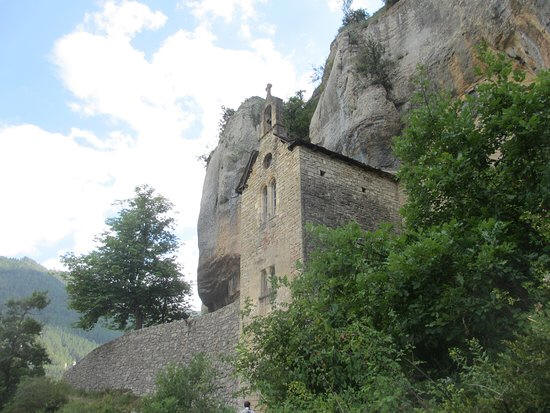
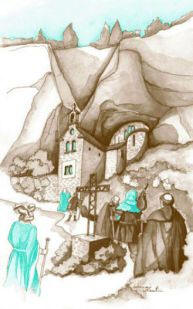
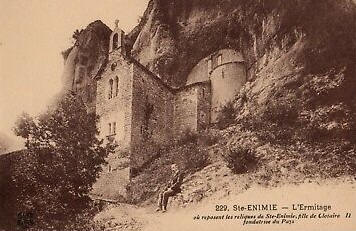
Enimie ended his days around 628 in a hermitage overlooking the village - which bears his name - and the valley of Tarn
According to the legend, written in the thirteenth century, in the langue d'oc, by Bertran de Marseille (named after the ancient locality of Causse Mejean), it would be the
sister of King Dagobert (629-639); Daughter of Clotaire II, she gave up the easy life that was hers at court to escape the marriage they wanted to impose. She prayed to
God to take away all her attractions and became leprous. She later found health by bathing in the fountain of Burle near the Hermitage, cave in which she decided to settle.
From there, she would have answered many miracles and fought against the Drac (kind of devil in Pays d'Oc).
Later, she founded the monastery of "Burlen", at the origin of the Bourg de Sainte-Enimie, with the help of Bishop Hilaire. The Benedictine priory, was founded after his
death in 951by the Abbey of Sainte-Chaffre (Monastier-Saint-Chaffre) to overcome the decadence Church Sainte-Marie where the body of Sainte-Enimie. The remains of
the saint were revealed by God to a monk of the priory named John. It was then that the beautiful legend was written at the beginning of the thirteenth century. The princess's
relics were kept at the Hermitage until 1970, when they were stolen.
Enimie is the object of an immemorial cult in the diocese. The tradition speaks of holy 'Eremio' (the Holy Hermit). His relics attracted pilgrims to the Gorges du Tarn...In the diocese,
the parishes of Bagnols-les-Bains, Champerboux and Sainte Enimie have her as patroness. This last locality changed its name from Burlatis (well-Roc during the revolution) to
that of Sainte Enimie. The cult stays there A pilgrimage takes place every year at the Hermitage, to celebrate the patron saint of the village (first Sunday of October).
The chapel-cave of the Hermitage, whose interior is visible thanks to a grid laid by volunteers, is always frequented by the faithful who attribute a virtue to the water of the
source of Burle. The tradition that "Enimie the leper, would have been cured by the waters of the Burle", still survives P.S: After the death of Enimie, his brother Dagobert,
become king, goes in search of relics of his sister. Arrived on the banks of the Tarn to come on the tomb of his sister, he asks the nuns of the monastery where it is located. They
refuse to tell him, not wanting to lose their lady. Dagobert finally discovers the tomb but hesitates between the two coffins. In fact, in order to protect himself, Enimie had not put any
name on his own, and that of Enimie on that of his goddaughter. These are the relics of a Santrimiole that rest with the kings of France in the basilica of Saint-Denis. Source of this last story.
The source Burle in St. Enimie
Diving in the Burle
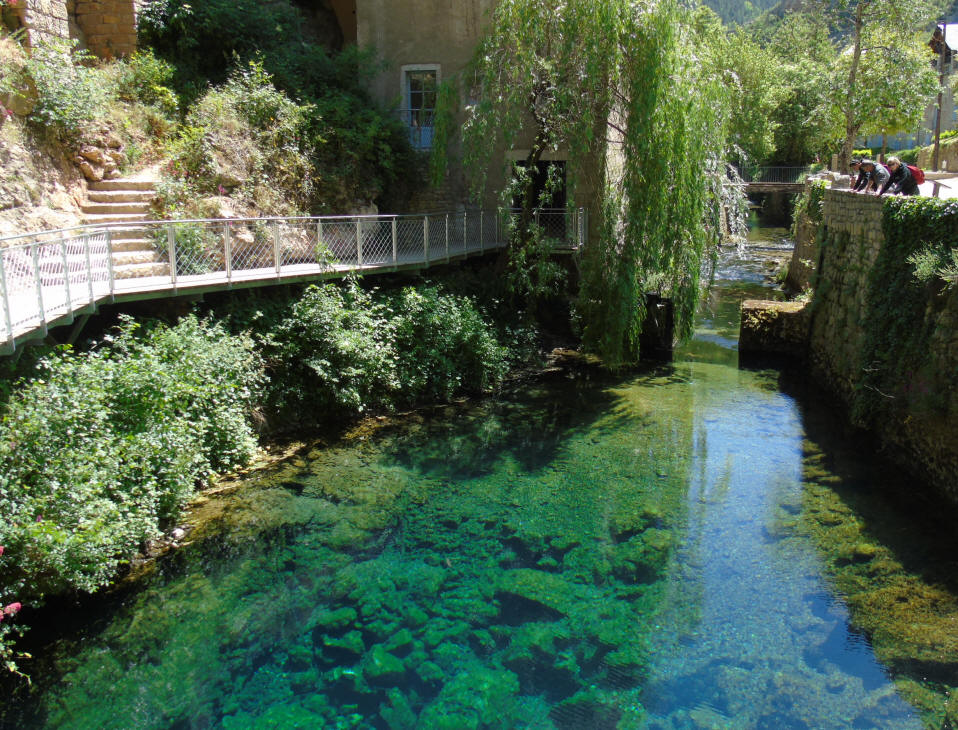
The alley next to the Notre-Dame-du-Gourg church
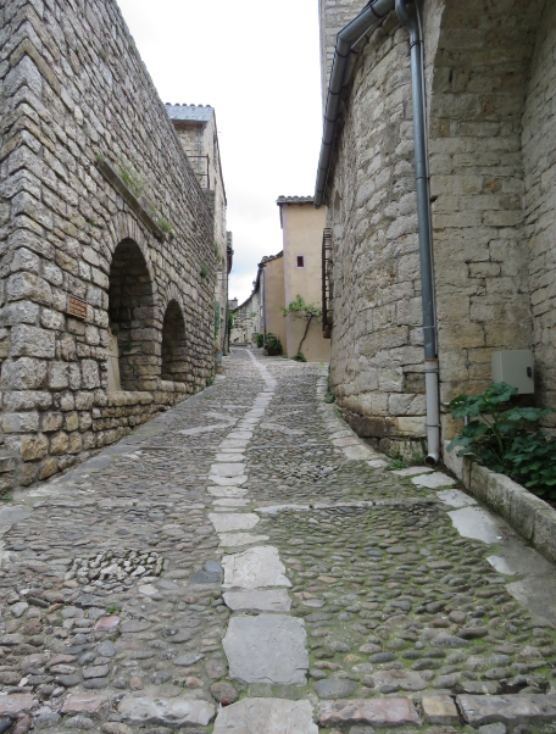
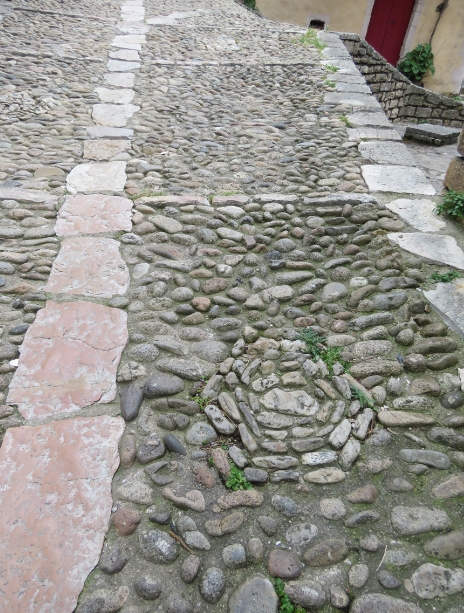
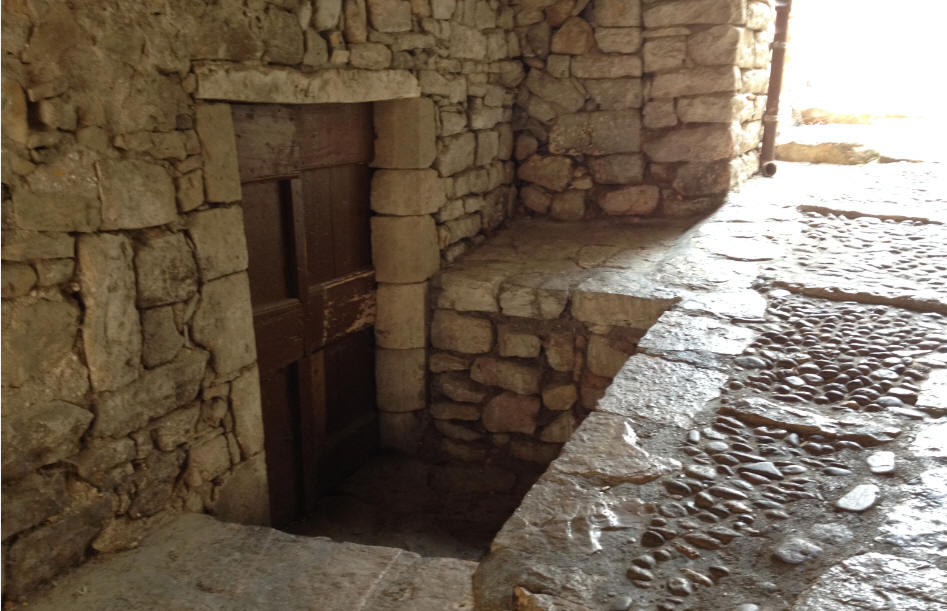
Ancient sundial
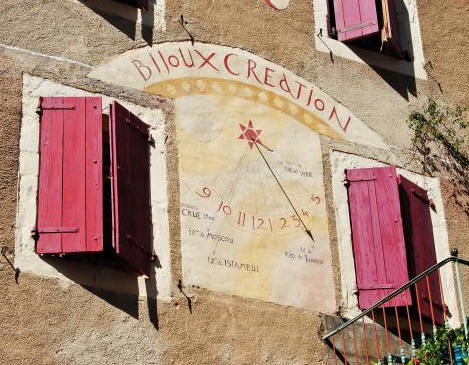
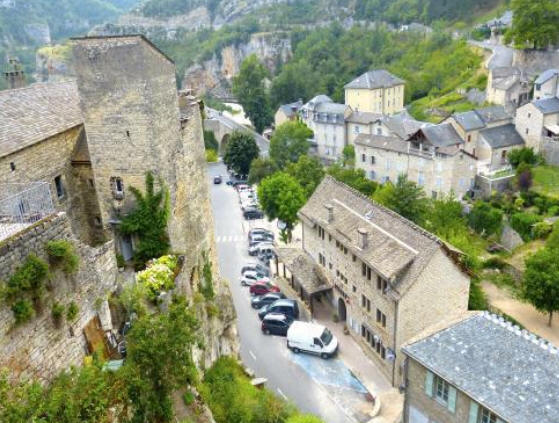
Old Benedictine monastery and facades of the the village
Half-timbered house
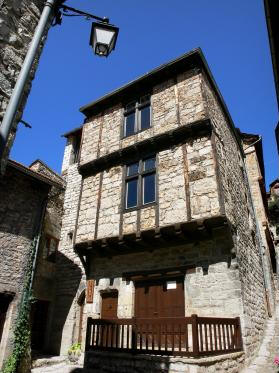
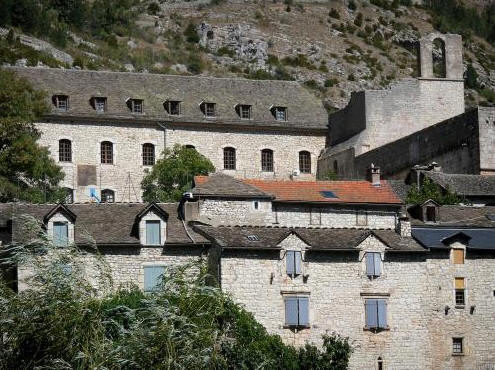
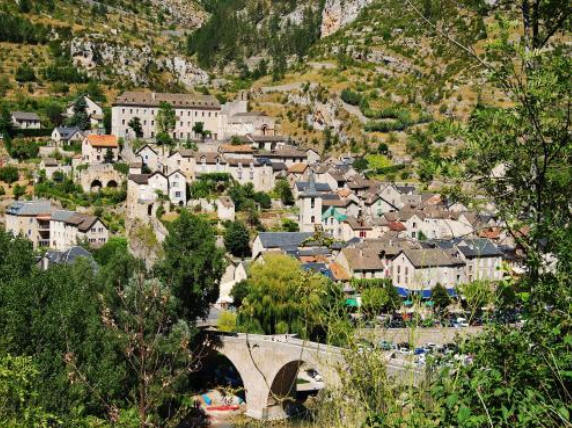
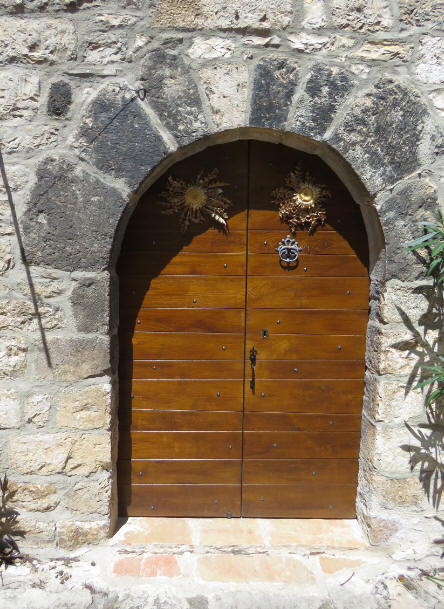
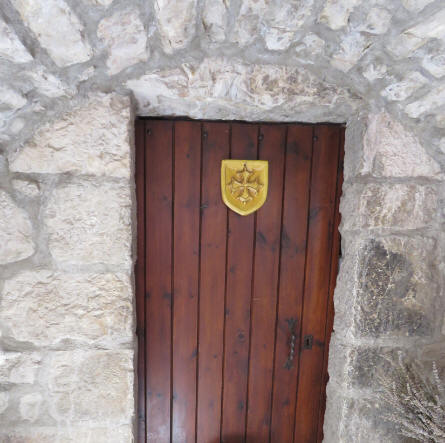
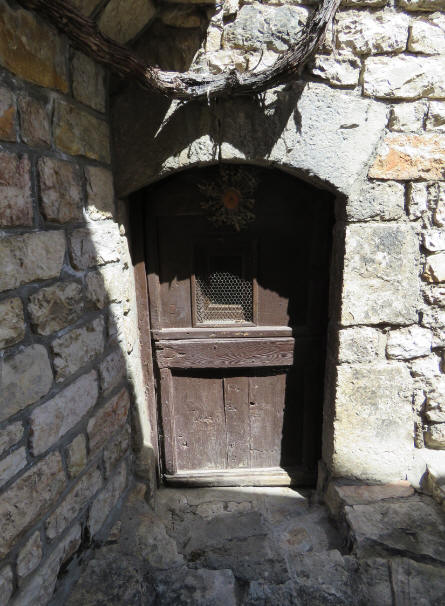
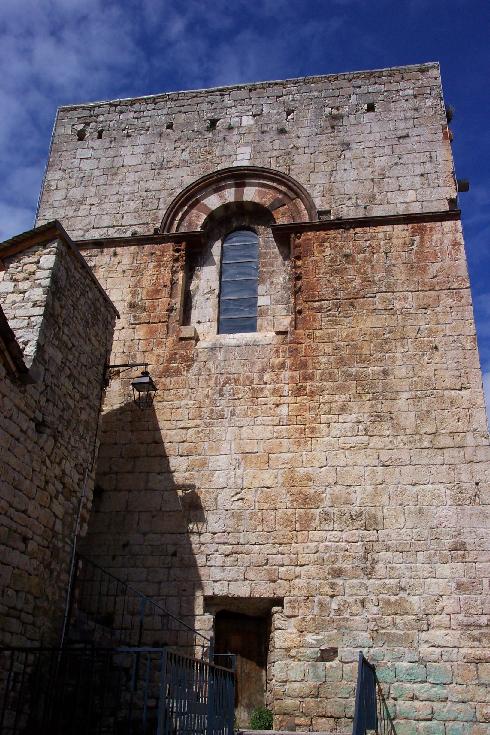
The west side of the town.
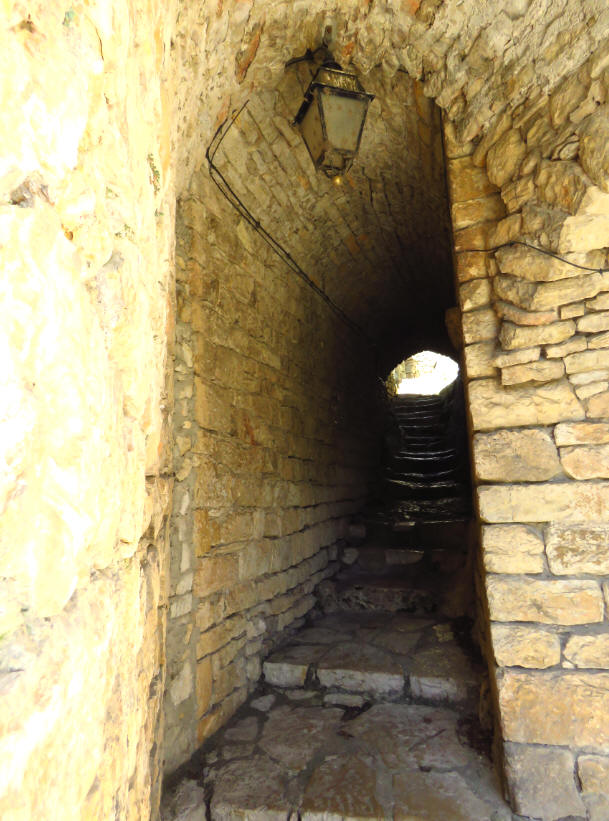
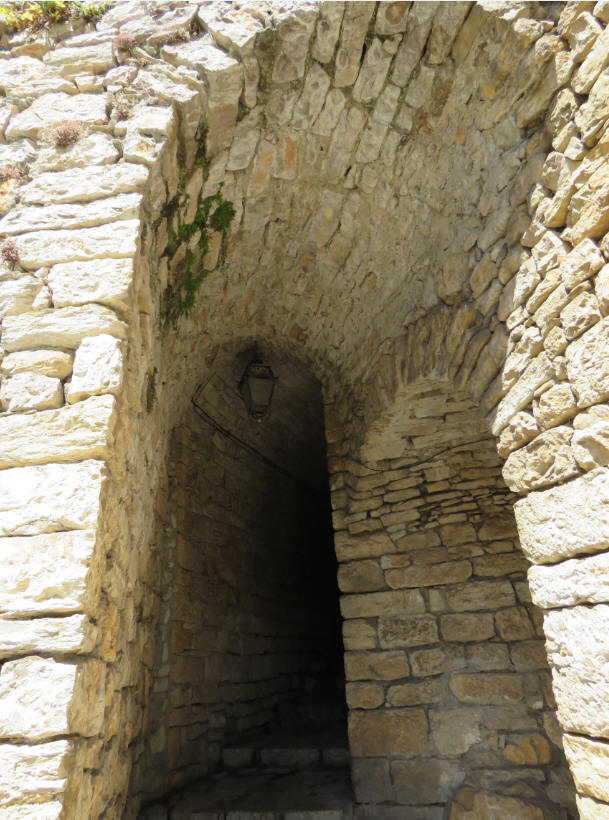
Battlements of the former abbey in Sainte- Enimie
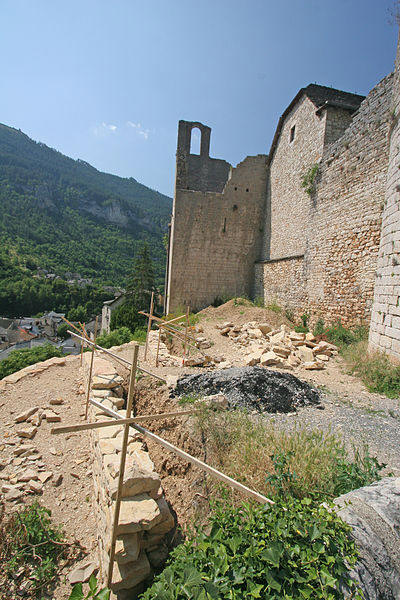
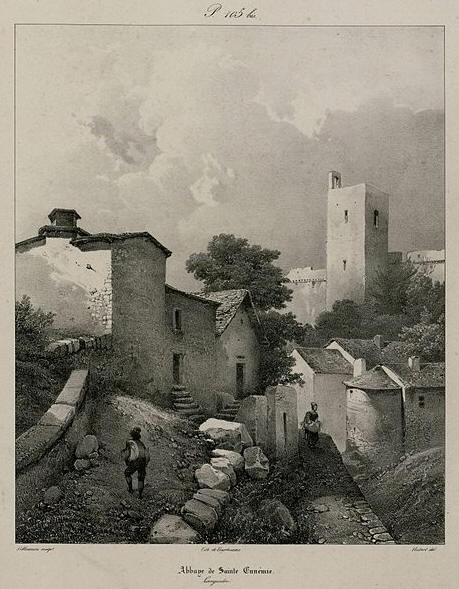
Another interesting feature as you drive down the gorge is the face in the rock, this can be found between the circus of the Beaumes and Croze.
Known as the face of Christ it seems to peer down onto the road below, if you can stop it’s a definite photo opportunity.
Passing St. Enimie
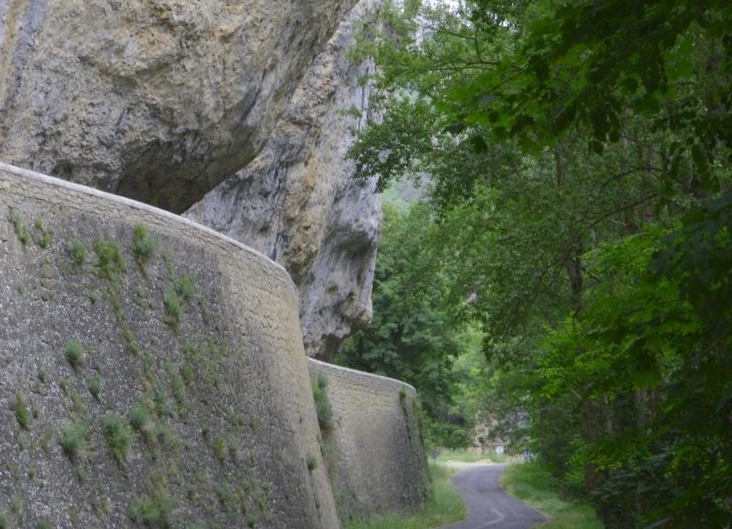
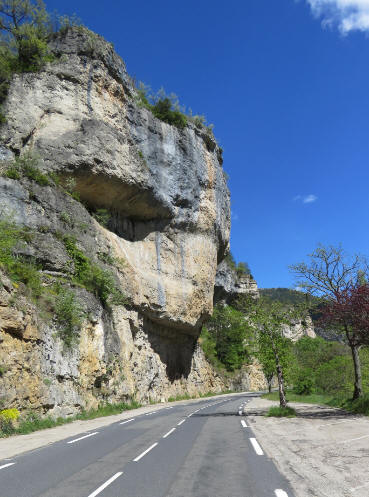
Patrick made this cosy photo by cellphone, May 2019
